








The rollout of the 5G network may still be underway, but thoughts are already moving onto the next generation, 6G, which has the potential to transform how the world communicates.
From supporting automated cars to smart-home networks, experts predict the technology will be cloudnative from the start, and it will leverage AI and ML at scale.
As Dell Technologies’ Ian Goetz told me, the migration from 5G to 6G will require comprehensive edge cloud infrastructure, who predicts a move from “connected things” to “connected intelligence”.

But the skills gap, an issue affecting almost all aspects of the technology industry, will need to be addressed to ensure a smooth transition. According to research by Eightfold AI, a third of top network engineering and operations roles aren’t equipped with the skills to address emerging telecom trends. To address the challenges of the move to the next generation, that needs to change.
MARCUS LAW marcus.law@bizclikmedia.com

Despite being in its early stages, experts predict 6G will offer flexible, cloudbased networking technology to provide unheard-of speeds up to 100x quicker than 5G. But the ongoing tech skills gap will need to be addressed first
“From supporting automated cars to smart-home networks, experts predict 6G will be cloud-native from the start, and that it will leverage AI and ML at scale”













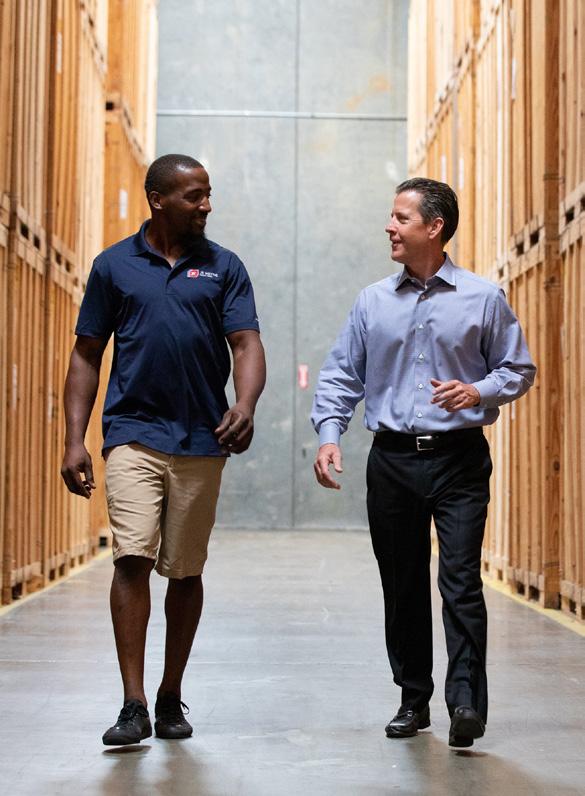






Welcoming the world’s biggest tech companies, Gitex Global hosted more than 4,500 companies and 100,000-plus attendees from 170 countries in October.
Spanning 26 halls and two million sq. ft, it featured more than 1,400 new exhibitors among a global line-up of companies and startups showcasing ground-breaking applications in the Metaverse, AI, Web 3.0, blockchain, 6G, cloud computing, fintech, and big data.
The global retail IoT market is predicted to reach US$124bn by 2027
According to a report by ResearchAndMarkets, the global retail IoT market is set to reach US$124bn by 2027 as retailers continue to adopt new technologies.
This follows a previous report by ResearchAndMarkets, which found that, in 2021, the size of the global IoT in the retail market reached US$41.15bn.
Banking-as-a-service set for 240% growth in next five years As the fintech banking revolution continues, a new report from Juniper Research has indicated the total banking-asa-service (BaaS) space will generate US$38bn in revenue by 2027.
The 2022 value of the BaaS sector has been set at US$11bn, with the next five years of growth being driven by the global industry’s ability to provide a user-friendly banking and payments experience.

IT IS
Alexandre Kozlov Head of International IT,
The size of the global IoT in the retail market
Ericsson ConsumerLab reveals status of global 5G adoption
Ericsson’s ConsumerLab 5G ‘The Next Wave’ report breaks down the world’s 5G uptake, and how this mobile technology is paving the way for the metaverse.


The report revealed that at least 30% of smartphone users intend to take up a 5G subscription within the next year.



And, of those 5G consumers, many display a stronger affinity to next-generation technologies. For instance, compared to 4G users, 5G users spend an average of one hour per week more on metaverse-related services. They spend a markedly increased amount of time gaming in virtual worlds, using AR and other such technologies.
A-EYE
Researchers at Boston’s Northeastern University have built a new machine vision device – using new artificial intelligence techniques – that can recognise “millions of colours”, opening the door to a new world of industrial machine vision applications.
The research group at Purdue University has developed an algorithm to help power companies prioritise security investments and fend off a ransomware attack, which could cause millions to lose electricity.

With almost twothirds of business clients looking for a fresh financial services provider, banks need to step up to the fintech challenge.
THERMAL
Machine learning and cheap thermal cameras can be used by criminals to spot heat signals and guess device passwords in less than a minute.


With evolving artificial intelligence technology, chatbots are becoming smarter and faster. Technology Magazine looks at the history of chatbot technology, from the 1960s up to the most recent developments
The first chatbot, ELIZA, was created by MIT professor Joseph Weizenbaum. It used pattern matching and substitution methodology to simulate conversation, and was intended to mimic human conversation. ELIZA could not converse with true understanding, but many early users were convinced of ELIZA's intelligence, despite Weizenbaum's insistence to the contrary.
A.L.I.C.E

Inspired by ELIZA, A.L.I.C.E. was a natural language processing chatbot that engaged in a conversation with a human.
The program simulated chatting with a real person over the internet and could tell a user its age, hobbies and other fascinating facts, as well as answering the user’s dialogue.
Created for MS-Dos, Dr Sbaitso was one of the earliest efforts of incorporating AI into a chatbot. Distributed with various sound cards manufactured by Creative Technology, the program "conversed" with the user as if it were a psychologist and was designed to showcase voices the cards were able to produce.
Developed by ActiveBuddy, Smarterchild was available on AOL IM and MSN Messenger and could carry out fun conversations with quick data access to other services. It became very popular with users, attracting over 30 million Instant Messenger "buddies" on AIM (AOL), MSN and Yahoo Messenger over the course of its lifetime.
Siri
Formed by Apple for iOS in 2010, Siri is an intelligent personal assistant and learning navigator that uses a natural language UI that became the blueprint system for all AI bots and PAs after that.



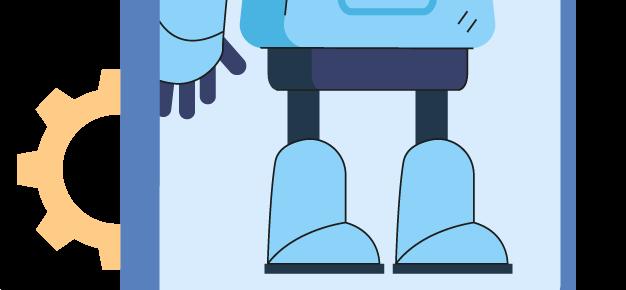


It paved a way for other similar tools including Google Assistant, launched in 2012, and Microsoft’s Cortana and Amazon’s Alexa, both launched in 2014.
Google launches an app that lets users interact with its Lamda AI. The company began allowing users to download and register for the AI Test Kitchen App, using a Google account on either Android or Apple devices. First revealed in May, it lets users chat with LaMDA in a rolling set of test demos.
In a career spanning more than two decades, CEO of LogicMonitor Christina Kosmowski has truly made her mark.
With an extensive track record of driving customer success at other hyper-growth companies during scaling phases, she joined SaaS-based infrastructure monitoring and unified observability platform provider LogicMonitor in January 2021, appointed CEO a year later.
Up until that point, the majority of Kosmowski’s career had been in customer success, where she played a pivotal role at both Salesforce and Slack.
“I feel very fortunate to have gained experience at two of the best SaaS companies out there,” she says. “I spent 15 years at Salesforce, helping it grow from US$20mn to almost US$10bn in revenue, and subsequently spent four years at Slack. At Slack, I also saw massive hyper-growth as
we scaled from US$90mn to about US$1bn in revenue.”
Pressure from challenges continues to mount
Over the last few years, pressure has mounted on CIOs as they have seen their technology stacks become more and more complex, while dealing with challenges raised by the COVID-19 pandemic.
“In this complex IT environment, the need for consistent and reliable technology has put CIOs and their teams in the spotlight, and the C-Suite has come to expect new levels of visibility and transparency around their organisation’s tech stack,” adds Kosmowski.
And future technologies could enable IT teams to move away from remediation to innovation, while also having a positive impact on talent attraction and retention, Kosmowski adds.
“As we continue to learn and understand the full potential of artificial intelligence (AI), I look forward to further developing LogicMonitor’s AIOps capabilities,” she explains. “This will enable IT teams to move away from remediation to innovation, from problem resolution to new development.
“The more we can offer talent the ability to focus on the exciting parts of the job and take out the rote tasks, the more likely they are to be fulfilled and enjoy their roles, keeping them onboard for the long haul.”
It is an exciting time to be at LogicMonitor, which recently


“The more we can offer talent the ability to focus on the exciting parts of the job and take out the rote tasks, the more likely they are to be fulfilled and enjoy their roles, keeping them onboard for the long haul”
announced 50%+ year-over-year growth – equating to over US$150mn in annual recurring revenue for 2021.
“I am absolutely thrilled with the momentum and growth we are seeing in the business – it has been so rewarding after what has been a difficult couple of years for everyone,” Kosmowski adds.
Setting an example of accountability
Describing herself as a hands-on leader, Kosmowski strongly believes in being approachable and transparent.
“We actually have a Slack channel at LogicMonitor where anyone can see my day-to-day and get in touch if they want to check in or talk something through,” she says. “I think accountability is very important and I try to set that example. I’ve been lucky enough to work with some really great leaders – Maria Martinez, COO at Cisco, is a great example – and I’ve learned a lot from them, particularly around how to use real, useful data to make management decisions.
“I was once given a great piece of advice about setting up a personal board of directors,” she adds. “And these don’t have to be people more senior to you, or even people in your line of work. My 16-year-old daughter sits on my personal board. She helps keep me grounded and ensures that I am bringing my authentic self to work.
“I think it's important to constantly surround yourself with people from all aspects of your life – people that can teach and hold you accountable in different ways.
“Maintaining a growth mindset is also very important to me – my job
is never done. I’m constantly looking for ways we can improve, evolve and adapt, especially in these periods of rapid change.”
Using intelligence and insights to predict issues before they occur There are exciting plans coming up for the unified observability platform company, which is taking lots of data from a number of sources across the tech stack.
“Giving full-stack observability to companies means that we can help them use the intelligence and insight to understand any anomalies as well as make sure everything is running smoothly,” Kosmowski explains. “We can proactively resolve issues

or even predict them before they occur, making sure that the company is prepared.
“Building on this, we’re working towards the ‘self-healing enterprise’. Essentially, using all the data we gather, and putting in place the right automation and AI tools, the technology should be available to heal itself, predicting and fixing any issues and taking some of this work out of the hands of the IT staff, freeing them up to perform other crucial tasks. This isn’t happening tomorrow, but we’re very excited about the possibilities that can be unlocked to really drive customer success and bring real value to companies through our solutions.”

“I’ve been lucky enough to work with some really great leaders—Maria Martinez, COO at Cisco is a great example— and I’ve learned a lot from them, particularly around how to use real, useful data to make management decisions”

»
I certainly never set off with a plan for a career in Tech and to become a CTO. I am not sure that it’s possible to plan out a career as many opportunities present themselves along the way, and the outcome depends very much on the choices you make.
If you’re open to new opportunities and want to learn new skills, then you unlock roles you wouldn’t have previously considered – that’s what happened with me and my career in IT. It was never something I sat down and mapped out.
In terms of me joining QA, I was drawn to the work we do across the board to help address the digital skills gap, the so-called ‘great resignation’, and the redundancy of many nontechnical roles in industries.
These are topics I could personally relate to as a CTO, and are subjects that are so visible and present in the UK and around the world. For me, working for a company delivering solutions to these problems was a great fit. QA’s real commitment to education and ensuring that digital skills are accessible to all was additionally something I knew I could feel incredibly passionate about. Our programmes for people impacted by the furlough scheme, for young people leaving school without further education options and actively finding ways to encourage people from all ethnic and social backgrounds, as well as dedicated schemes to get more girls and women into tech, make me genuinely feel that I am working
towards something that matters and is making a positive difference.
» I am very proud of being one of what is still a very small minority of women holding CTO roles in the UK;
Time at QA 2019
Named Female CTO of the Year

this is my second CTO role, and it still provokes an eyebrow raise every time I tell someone new what I do. This shows me that there is still much to be done for it to be considered ‘normal’ to see women in senior tech roles.
I have been honoured with two external awards in recent years: I was CTO of the year at the Women in IT awards in 2019 and I was named 16th in the CIO 100 list. It’s great to be included in such prestigious lists within the tech industry, although of course all my achievements are down to the great teams working for me who delivered fantastic solutions to our teams and customers. As a pretty competitive person, I’d love to win more awards but, honestly, the real reward comes from being a role model, and knowing girls and young women can see genuine opportunities
in technology.
to be successful
“I am very proud of being one of what is still a very small minority of women holding CTO roles in the UK; this is my second CTO role, and it still provokes an eyebrow raise every time I tell someone new what I do”
» One highlight that comes to mind is starting to bring together the capabilities of QA and its recent acquisitions, which have contributed to its growth and success over recent years. We are now working very collaboratively to identify ways to take the best of learning from all of our business units and create blended learning offerings. Our goal is that everyone who learns something through any part of the QA group is able to demonstrate their learning in a way that positively impacts the business.
» I'm really passionate about doing more with data; it comes with the territory, I guess. Understanding how we can better utilise insights to drive business improvement is always something I've been invested in, and now, with AI and machine learning, the possibilities from smart use of data can be really transformative for organisations.
Secondly, of course, I must mention the ongoing issue of how to attract, train and retain tech talent. The existing and forecasted digital skills shortage is a real issue, and there is still nowhere near enough being done to encourage young people coming through the education system to be interested in pursuing roles in tech.
»
I am motivated by how good use of technology can change and improve a business; I never advocate for tech for tech’s sake, but seeing the difference a well-implemented technology solution can make in terms of user engagement, satisfaction and improved business efficiency is extremely satisfying.
» I want us to have made some great progress improving our groupwide Blended Learning offering and also proven some great business benefits through some of the business modernisation initiatives we are undertaking.
I also want to have brought my product and engineering teams together across the group and proven the QA model works through
“AS A PRETTY COMPETITIVE PERSON, I’D LOVE TO WIN MORE AWARDS BUT, HONESTLY, THE REAL REWARD COMES FROM BEING A ROLE MODEL, AND KNOWING GIRLS AND YOUNG WOMEN CAN SEE GENUINE OPPORTUNITIES TO BE SUCCESSFUL IN TECHNOLOGY”
The UK's leading tech talent and training organisation, QA provides a comprehensive suite of talent and training services helping individuals and companies to be winners in the digital revolution.

The company has leading practices in agile, cybersecurity, cloud and DevOps, among many other technology specialisms.
introducing apprentices, bootcamp graduates and offering learning solutions to ensure my team is a great place to work, with opportunities for all to develop and succeed.
Personally, I want to carry on being highly valued as contributing to a company I believe is doing good things, while making time for my children, friends and myself!


 Featured with:
Featured with:
Executives from Appian, AWS, and Xebia share their collaborative efforts and excitement about their partnership in low-code, cloud, and sustainability.
Technology is instrumental to achieving next-level capabilities across industries. But organizations that want to operate sustainably must choose technology that lets them adhere to strong environmental, social, and governance principles.


Appian Corporation, a process automation leader, is a critical piece of the digital transformation and sustainability puzzle. The enterprise-grade Appian Low-Code Platform is built to simplify today’s complex business processes, with process mining, workflow, and automation capabilities.
“By quickly building apps that streamline and automate workflows, organizations are using Appian to make their processes for monitoring and reporting on ESG initiatives faster, simpler, and more effective,” says Meryl Gibbs, Emerging Industries Leader at Appian.
“Both AWS and Appcino are amazing partners of ours,” says Michael Heffner, VP Solutions and Industry Go To Market at Appian. “We have an extremely long legacy engagement with AWS as our trusted, go-to-market partner and Appcino builds “meaningful, business-focused applications on the Appian platform and is amazing in all things ESG.”
Digital transformation in ESG.
As an AWS leader enabling sustainability solutions built on the cloud, Mary Wilson, Global Sustainability Lead at AWS, talks about the partnership with Appian.
“Our objective is to help our customers achieve sustainability goals across their business operations,” says Wilson. “[This means] looking at data availability, meaning access to more data, and enabling actionable insights. “Lowcode, cloud-enabled, technologies will allow organizations to build fast, learn fast, iterate, and continue to improve these insights to drive their sustainability outcomes.”
Tarun Khatri, Co-Founder & Executive Director of Appcino (product part of Xebia), explains just how critical ESG is in the face of digital transformation. “The investment community now considers ESG reporting as a major factor for measuring performance,” says Khatri The collaboration will continually uncover new insights and provides customers the opportunity to accelerate their ESG goals with speed and security.


If Hollywood were reality and depicted the use of AI within the US Navy, it would no doubt be a certified blockbuster. While art often imitates life, the use of AI within the US armed forces is still an evolving space. Rapidly advancing technologies that have the potential to convey increased capability also convey challenges. This challenge space, for the US Navy, belongs to Mr. Brett Vaughan.


Chief AI Officer for the US Navy, Brett Vaughan has been involved with security, defence and the military applications and implications of AI across several years. Although he modestly states that his greatest skill lies in communicating with various departments about the benefits of AI rather than the nuts and bolts of its coding, he is clearly a leading global authority on the benefits of this cutting-edge technology within the defence and military space.
A civilian who originally qualified as a cartographer but went on to cut his teeth in military intelligence at the Pentagon, Vaughan is no stranger to balancing the potential of AI with the strictly classified protocols of military management. “It’s an expansive role. It essentially means I'm part ambassador, strategic communicator, and architect for AI for the service. My purview spans our Navy's war fighting capabilities, our readiness, our corporate activities, and
While the US Navy implements widespread AI initiatives, we spoke to their Chief AI Officer, Brett Vaughan
our training and education as they relate to AI. Essentially, anywhere the service is interested in designing, developing, or deploying AI-enabled activities or capabilities, that falls in my job jar.”
How AI capabilities have developed in the US Navy

There’s a long history of cutting-edge technology use within the US Navy. According to Vaughan, the Navy's experience with AI goes all the way back to the discipline’s inception in the 50s. The bulk of the US Navy’s experience in AI from then until now has been predominantly in the research and development (R&D) arena. During that time, US naval technologists established themselves as global leaders in terms of their expertise in the field of AI.
“We established a Navy Centre for AI Research at the Naval Research Lab in 1981,” says Vaughan. “And today, if you went to find our AI rockstars, our geniuses within the Navy community, that's where you'd find most of them; however, I think many would be surprised to find AI activity in almost every sector of the service.”
Example of an image caption BRETT VAUGHAN CHIEF AIOFFICER,US NAVY
“Essentially, anywhere the service is interested in designing, developing, or deploying AI-based activities or capabilities, that falls in my job jar”

LOCATION: ARLINGTON, VIRGINIA, UNITED STATES
Mr. Brett Vaughan assumed the role of Navy Chief AI Officer in December 2019 under the Navy’s Office of Digital Transformation (SECNAV OCIO / OPNAV N09D). Prior to that he was in, and still holds, the position of Artificial Intelligence Portfolio Manager for the Office of Naval Research (ONR). He is responsible for shaping and informing Navy plans, policies and position on Artificial Intelligence and the alignment and coordination of AI work across ONR. He is the principal agent for AI-focused engagement on behalf of ONR, the Chief of Naval Research, the Chief of Naval Operations and the Secretary of the Navy.
Prior to joining ONR, Mr. Vaughan served as Science and Technology Integration and Innovation Lead on the Chief of Naval Operations Staff, OPNAV N2N6FX, Information Warfare from 2010 - 2019. Responsible for driving science and technology (S&T) gain across the Information Warfare portfolio, support to strategic S&T decision-making and related technology outreach and engagement. His previous assignment was Section Head for Technology Outreach under the Knowledge Dominance Directorate of N2N6. Mr. Vaughan entered Navy civilian service in June 2009, attached to the Strategy and Concept Development branch of OPNAV N20, where he was responsible for technology strategy development and concept innovation.
Prior to joining the Department of the Navy, Mr. Vaughan spent a twenty-year career with the National GeospatialIntelligence Agency (NGA). Prominent assignments with NGA included: NGA Pentagon Liaison Division Chief, NGA Defense (2009-2010); NGA Liaison to the CNO N2 Staff (2003-2009); NGA Liaison to the JCS Joint Staff (1997-2002) and Operations Engineer (1995-1997). Mr. Vaughan entered federal service in 1989 after working as a cartographer for the City of Virginia Beach Mapping and Surveying Department.
Mr. Vaughan is a distinguished graduate of the U.S. Naval War College, earning a Master of Arts in National Security and Strategic Studies. He also holds a Master's Degree in Environmental Science from Johns Hopkins University and a Bachelor's Degree in Geography from the University of Mary Washington where he also completed five semesters of Russian language studies.
His honours and awards include the Meritorious Civilian Service Medal, the Joint Meritorious Unit Citation (two awards), the James V. Forrestal Award for Excellence in Strategy and Force Planning, the Marine Corps Association Writing Award, the NIMA Superior Service Medal, the DCI Meritorious Unit Citation and several letters of appreciation and commendation from OSD and the JCS Joint Staff.
Currently, the US Navy is actively designing and developing over 1000 AI-related activities. “I think most would be surprised to the degree at which AI is being groomed and developed within the Navy,” Vaughan confirms. “But a majority of those efforts reside in the R&D realm, and so in the highly-technological and competitive landscape of the modern era we are prioritising the accelerated progression of those capabilities to the fleet.”

While Vaughan is limited in terms of the information he can impart on the Navy’s many AI projects, he is able to offer a broad perspective, including some of its use case areas. He says there are two areas where AI predominantly manifests within the US Navy: “AI enables a certain level of autonomy in unmanned/robotic systems (drones to most) and also fuels a wide array of decision aids, designed to augment, improve and speed human decision-making.”


“The approach of the US Navy toward AI is chiefly one of intelligent autonomous systems and decision aids augmenting the human, not replacing them, in most cases - it's very much a hybrid approach”
NAVY
HII supports U.S. warfighter missions around the globe, partnering across domains on the edge at hyperspeed, using what’s new to preserve what’s always been worth protecting. What our builders and technologists have practiced over 135 years remains our north star—delivering the hard stuff, done right.
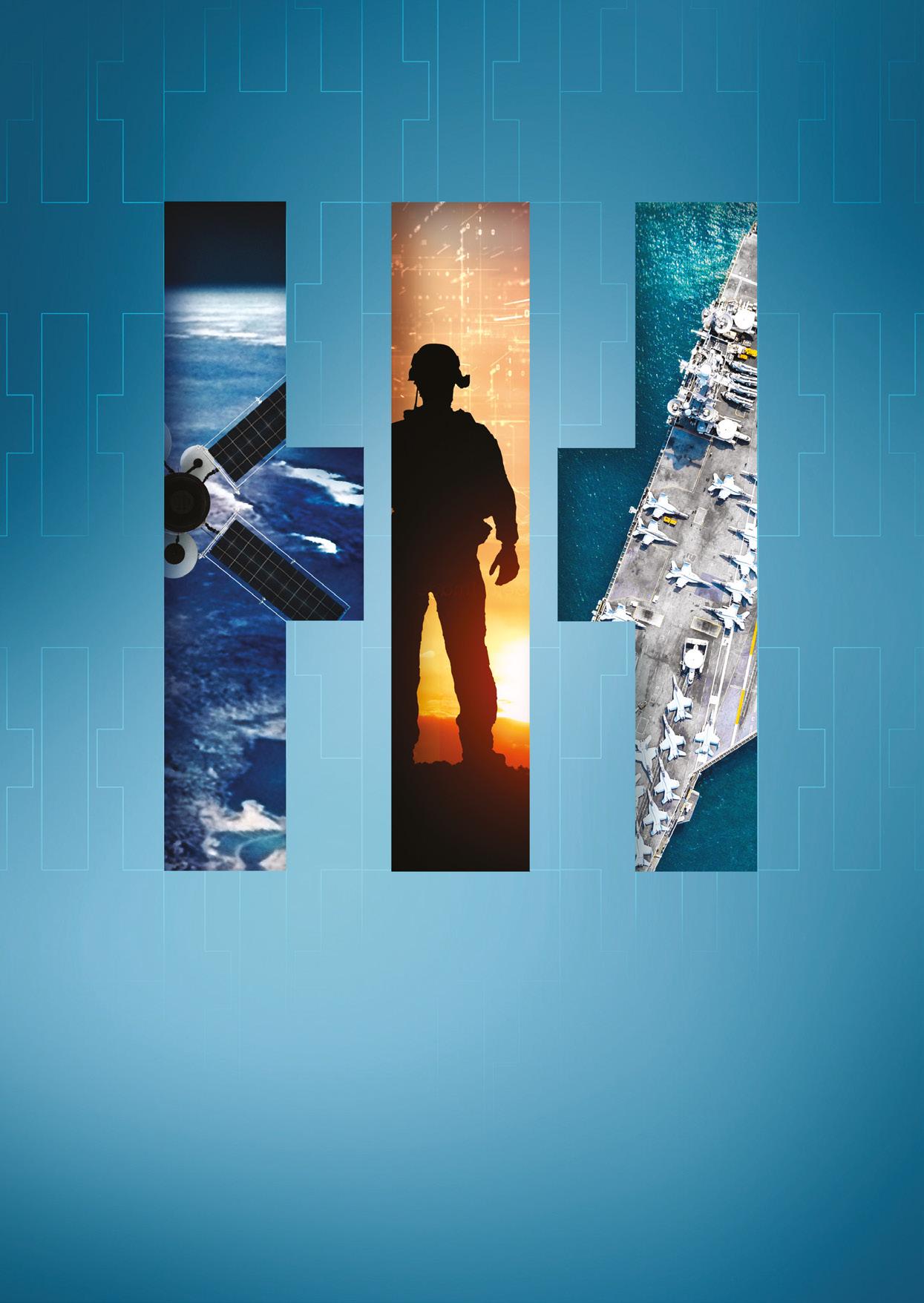
Todd Borkey, Chief Technology Officer at HII’s Mission Technologies division, shares how the company is working with the U.S. Navy
HII is an all-domain defence and technologies partner, recognized as America’s largest shipbuilder.
With a 135-year history of trusted partnerships in advancing U.S. national security, HII delivers critical capabilities ranging from powerful naval ships, to unmanned systems, ISR and AI/ML analytics.

The company is America’s only builder of nuclearpowered aircraft carriers and leading provider of mission-driven defence technologies. Todd Borkey, Chief Technology Officer at HII’s Mission Technologies division, explained: “We have a century-long partnership with the U.S. Navy. In addition to building some of the state-of-the-art warships, we also happen to be
number one in Live, Virtual, and Constructive (LVC) synthetic training, where we prepare Naval war fighters for virtually every conceivable situation they could experience.”
Borkey explained how HII is becoming very datadriven, with gains in digital ship building, C5ISR, artificial intelligence and modelling simulation.

“We consider ourselves practitioners of AI. We develop a wide range of AI applications across RF sensing, C5ISR, cyber operations, LVC training and logistics. We were one of the first companies to integrate computer vision into operational ISR, and deploy modern natural language processing to a mission at scale. We have hundreds of data

scientists and engineers who exploit big data and operationalise AI.”
A trusted developer of big data solutions at enterprise scale, HII is going to continue to innovate AI architectures that improve signal extraction from a wide range of client big data sets.
“Our future is going towards what we call neuro-symbolic AI, and that allows us to leverage subject matter expertise and overcome some of the issues that are encountered by pure deep learning approaches,” concluded Borkey.
LEARN MOREImproving human performance across the board is a very apt description of the US Navy’s aim for AI. Improving safety, elevating operational and corporate efficiency and reducing risk are hallmarks of this approach. The Navy’s accelerated adoption of AI, explains Vaughan, requires not only technical acumen but also a non-negotiable focus on the human aspects of AI development and deployment, with specialists constantly honing and improving the AI-enabled capabilities. The goal is to consistently improve functionality and safety for human personnel, as well as provide operational commanders with broader options of capability. “Thus, for example, instead of deploying an all-manned force for a particular operation or function, that commander may be able to weave in autonomous/robotic systems into his/her capability mix; what our Chief of Naval Operations calls a 'hybrid fleet'.”


But it's not all about frontline operations. There are, notes Vaughan, many practicalities that can be served in terms of the operational management of the US Navy. This is especially true when it relates to manual labour. “It’s what we call the dull, dirty and dangerous, like scraping barnacles off the hulls of ships, or painting ships, or defusing mines, or jobs like that. I'm positive any sailor that has the job of scraping barnacles off the hull of a ship would love to be relieved of that task by a robot. And we have those today. Crawling inside the hull of a ship looking for corrosion is another – you go deep down in a ship, and that's not a very hospitable environment. Machines can in many cases do that quicker, and more effectively, than humans. I like to think of this as a great example where the US taxpayer is getting a much better return on their investment and the Navy increases efficiency at a stroke.”
Another area where AI is being deployed is in decision aids, where humans are assisted in making better and faster decisions.

“Another area where AI is being deployed is in decision aids, where humans are assisted in making better and faster decisions”
Citing these use cases, Vaughan says: “It might be a ship’s navigator, or radar operator underway in the middle of the ocean, or it might be a budget analyst in the Pentagon trying to resolve financial figures. The applications of AI in that context of decision aids are almost infinite and we are giving that potential wide address.”

“In both of those applications, whether it's decision aids or autonomy, we approach AI development as very problem-specific and context-dependent, which drives us to put a premium focus on the inclusion of our core user base, our warfare enterprises, in the design of AI capabilities. That means undersea warfare, surface warfare, aviation, special operations (our Navy SEALs), information and expeditionary warfare all have AI-enabled autonomy and decision aid applications, platforms, and uses.”
And so whether drones or decision aids, a focus on the human element is paramount in the US Navy pursuit of AI capabilities.
Despite the fact that the US Navy has been investigating the potential of AI for the past 50 years, the practical application and integration of the technology has been challenging. Industry, not the federal sector, are at the forefront of AI deployment today and industry models for AI adoption don’t always readily translate to the military. We truly live in a digital era dominated by software. Most companies today are either born digital or can rapidly adopt softwarefocused competencies; the US Navy is 247
“Whether
OFFICER, US NAVY
years old and is challenged to make the transit to a more digital organisation; however, it is a transit that wemust make, says Vaughan, if we are to effectively leverage AI.
The process of developing and deploying AI in this manner is a departure from an institution with a largely industrial legacy and underpinned by practicality, he explains. “Writing requirements for those digital capabilities is one of those challenges, because we've been writing them for industrial purposes for decades, designing, building and operating planes and jets and submarines' hardware. Now, we have to think, talk and act to enable and deploy software; to write, deploy and sustain code to generate the right type of AI capabilities at the appropriate rate and nature of operation.”
It’s a cultural issue that requires careful and strategic handling – a hard task in an environment that, as Vaughan says, simply wasn’t born digital. “If you're a company in Silicon Valley today, chances are that you're born digital; knowing, out of the cradle, how to write software. You know how to check it. You know how to deploy it. You know how to tune it, maintain it and you know how to refresh it and everything that implies. These are new skill sets for the Navy, relatively speaking. So upskilling our sailors and marines to the point where they're more adept at those digital skills, but especially AI, is one of our greatest challenges today.”
AI training within the US Navy is facilitated by the Navy Education Enterprise, which is, the Navy Community College, the Naval Academy in Annapolis, the Naval War College in Newport, and the Naval Postgraduate School in Monterey, California. Plans are in work to increase AI-related


training and education at every one of these centres with the aim of upskilling the fleet and force of today and tomorrow to assure relevance and pacing of technologic development and advantageous position within the geopolitical landscape.

This push to ensure state-of-the-art training and education in AI has never been deemed as critical nor as timely as it is today. According to the final report of The National Security Commission on AI – an organisation chartered by the US government “to consider the methods and means necessary to advance the development of artificial intelligence, machine learning, and associated technologies to comprehensively address the national security and defence needs of the United States - we are now in an age of AI deployment and they have recommended to the US President and Congress that the US Defence Department be AI-enabled by 2025.
Mr. Vaughan bears prime responsibility for helping the US Navy reach that goal. The Navy strategy to achieve AI enablement by 2025 is critically dependent on people and upskilling today’s fleet and force to compete in cyber space while advancing the aims of the service and the nation. That strategy is in constant tension with the global marketplace and the demand for digital skills. But as careers continue to evolve from ‘jobs for life’ into more transient positions, the war on talent is a wholly different battle for the Navy to address.
Vaughan says: “There are offsetting forces at play here. The US Navy offers a sense of mission and duty over that of the commercial sector. It also offers intriguing opportunities to access and tackle challenging operational problems; this is catnip to the AI community. Industry, on the other hand, can offer financial incentives
“This
to ensure state-of-
AI has never been deemed as critical nor as timely as it is today”
that the government cannot match and so yes it is natural to see talent coming in, moving across and sometimes out at a rate that is more dynamic than what we are accustomed to.”
A valuable constant in this equation is the military reserves. Thankfully, because of the ability for former full-time military personnel to become reservists, talent is still retained to a degree. Nevertheless, it's a challenge to be dealt with. “A lot of them, even if they do leave the US Navy, remain reservists and that talent and expertise come back at some point. We keep that pipeline open to be able to recapitalise that experience – the door is always open to welcome them back and leverage their skills as reservists.
“If I walked into the Pentagon today and ran into a junior officer that was wearing the Navy uniform, and he told me he could code artificial intelligence, 9 times out of 10 that person's going to be a reservist. That means they work at Amazon, or at Google, or Microsoft in their civilian jobs and they're a navy reservist in uniform. So I can't overstress or emphasise the importance of the reserves to our strategy, our designs, and our plans for AI.”
It’s worth remembering that the US Navy also has a strong civilian cadre – Vaughan himself isn’t a member of the military –and that means lots of people within the organisation are using their industry-learned skills to transform military operations, too. “On the civilian side, I think we're in terrific shape. Our information warfare community has done a terrific job over the last decade of creating and sustaining a vibrant pipeline of civilians that flow into the Navy with what we call critical AI skill sets, like computer science, statistics, mathematics, data science, data engineering, AI and ML ops.”
He says that now, an important part of AI workforce strategy is elevating the uniformed ranks to a similar level of parity. “We're actually today in the process of developing a robotics rating within the Navy enlisted corps, which will be huge. From there, it grows into ‘how do we advance the Navy rating system to address things like data science and data engineering?’ – which are skill sets core and critical to effective AI deployment. When we talk about moving something from, say, the lab to the fleet or the field, data engineers are paramount. That's one skill set that we're really keen to increase the numbers on.”


“We are in the process of developing a robotics rating within the Navy enlisted corps, which will be huge in terms of instantiating, accelerating and optimising AI impacts on naval operations”
BRE TT V AUG HAN CHIEF AI OFFICER, US NAVYBRETT VAUGHAN CHIEF AI OFFICER, US

“The algorithm we build for a submariner is going to be different from the one we build for a jet pilot or a ship driver; AI is problemspecific and context dependent in both design and deployment”
NAVY
The recommendation of the National Security Commission on AI mandates that “by 2025, the foundations for widespread integration of AI across DoD must be in place...” has introduced a heightened importance on time as a factor in the US Navy’s AI calculations. This is a daunting goal from any perspective, and, according to Vaughan, necessitates an expansive adoption strategy across a broad range of disciplines.

It’s a challenge – and, with only three years to go until the deadline, there’s still much work to be done. “The clock is ticking; it’s a very short game clock. We have to rapidly and broadly progress to an elevated posture that is conducive to delivering AI at speed and scale, and all the services have that challenge.”
But scaling itself is tricky, he explains. “The algorithm we build for a submariner is going to be different from the one we build for a jet pilot or somebody on a surface Navy ship. They are different environments and have different data; the transport layers are different; the operations are different. All those elements comprise the ecosystem you need to deploy AI effectively, so it's very important that you tune AI development within the intended use mission or problem set. At the same time you don’t want to get pigeon-holed or siloed in AI approach; you want to be able to extend AI-enabled solutions across the enterprise. In order to bridge this space, to effectively craft AI for the warfighter while setting conditions for broader exploitation, the US Navy has established AI Task Forces in every one of its warfare enterprises –an accomplishment that Vaughan is especially proud of as it provides purchase on the cultural challenges of AI adoption.
Scaling AI means that “if somebody has developed AI capabilities, say for submariners, I can now take that solution and extend it to other pieces of the enterprise and potentially boot-strap other warfare enterprises as well. Scaling means efficient recapitalisation; not reinventing the wheel every time you develop an AI pipeline or a piece of code, you can leverage or recapitalise that work across the enterprise.”
Vaughan says that it's essential to have the team skilled enough to undertake the task. But that team must also have a viable, resilient and robust digital fabric underneath. He points out that AI is very heavily reliant on compute, such as cloud and highperformance compute assets, transport layers, and the network.
“You have to move ones and zeros around from where they're collected to where they need to be processed, to a decision maker or to a robotic system. All of that substrate needs to be in place, ready and resilient, so there’s a great deal of work ahead of us,” he concedes but maintains confidence that the critical benchmarks will be met.


“The Navy treats AI as a competency more so than a technology”
As the field of robotics and AI steadily advances, the use cases increase. Robots already replace humans in several sectors across industry, from manufacturing to medicine. Elon Musk has also recently unveiled his first humanoid robot. So, where does the field of robotics fit in when it comes to the military? Will we be seeing a not-too-distant future filled with soldier bots – or their equivalents?
On this point, much speculated over the years, Vaughan is noncommittal –but he is happy to frame the conversation in terms of frontline implications.
“I think the most apt characterisation is, in a word, “hybrid”. An operational

environment where robots and AI decision aids augment the human, not replace them,” he says, explaining that, although the Hollywood version of AI soldiers is not yet reality, the core technology is certainly in play and its potential increases every day. “Our operational focus for the accelerated and impactful deployment of AI centres on how we Defend, Maneuver, Resupply and Shoot (Navy fires).”

Frontline battle tech aside, the priority right now is to hit the 2025 AI-enablement deadline, as set out in the five-year plan by the US President and Congress. Ultimately, says Vaughan, it's about code, coding and more coding – and then it’s all about the manner of delivery. “Whether it's the application, the development, or the practice of how you write code, how a sailor or marine works with technologists to make sure the code is both correct and effective, or how you deliver it to a warfighter or a user – and then how you tune it, sustain it and ensure it's running properly and within desired parameters – all those are part of what we would call the AI tradecraft or competency.”
“So, if there's any bumper sticker here, that is probably it: the Navy treats AI as a competency. Done right, it’s a harmonious synthesis of human and technologic elements. I think that's important, because a lot of people get fixated on AI as a technology and lose the human element when that is precisely the goal of AI, at least for the US Navy. It takes good, humanfocused practice and skills to do it right and deploy it effectively.”
Digital doppelgangers can help the heaviest of industries save time and money with technology that twins real-world hardware with virtual counterparts
 WRITTEN BY: GEORGE HOPKIN
WRITTEN BY: GEORGE HOPKIN
Houston had a problem in 1970. You may have heard about it, or even seen it play out on the big screen in the 1995 Tom Hanks Hollywood hit Apollo 13.

Nasa’s seventh crewed mission of the Apollo space programme was planned to be the third to land a human on the surface of the Moon. As we all now know, the spacecraft malfunctioned, causing serious damage that led to the mission being aborted.
But there remained the small matter of the damaged spacecraft’s return to Earth. And this is where the world saw digital twin technology in action – or rather, the world saw the results of it in the form of the crew’s safe return. Before that and behind the scenes, scientists worked tirelessly on lab-based models that replicated the space-going vessel, allowing them to make minute-by-minute decisions based on the results seen hundreds of thousands of miles away in Texas.





“The engineers on the ground could simulate the damage that had occurred on the digital twin of the spacecraft, to understand how the damaged physical twin would react to the conditions,” says Arash Ghazanfari, Chief Technology Officer, UK, Presales, at Dell Technologies. “This allowed the ground crew to recommend measures to ensure the astronauts could return to earth safely.”
But even with Hollywood in its corner, there are still companies and chief executives yet to learn about the benefits digital twins can bring to the business. The technology is already being used for quality defect predictions and to produce recommendations to address deviations, while digital twins powered by process models are used to optimise systems, reducing specific energy consumption measures. In the study of supply chains, digital twins are used for working out optimal routes when disruptions take place due to weather or other unforeseen situations.
“A digital twin is a digital replica of physical assets and processes that closely mirrors real-world conditions using data

“DIGITAL TWINS CAN BE DEPLOYED TO SIMULATE, PREDICT, AND OPTIMISE THE PERFORMANCE OF A PHYSICAL ASSET ACROSS ITS VALUE CHAIN”
from IoT sensors during an entire physical lifecycle,” explains Dr Phani Bhushan Sistu, IoT Solutions Lead, Hitachi Vantara. “With this capability, digital twins can be deployed to simulate, predict, and optimise the performance of a physical asset across its value chain.”
Early examples of digital twins focused on the batch analysis of Big Data – and there are still good reasons for doing this kind of work, says Dai Clegg, Technology Evangelist, EMEA, Yugabyte.

“But, over time and with the development of real-time analytics, we see digital twins being used to tweak realworld artefacts' behaviour,” says Clegg.
“You could always do that with local instrumentation – for example, powering off overheating devices –but, if you need the big picture to make local decisions, you need real-time analytics on a centralised digital twin. An example might be smart cities altering the timings on traffic lights to optimise rush hour flow.”
Digital twins could be put to work for individual humans as well as the cities they live in, says Clegg. “The combination of personal health data, instrumentation and connectable diagnostics models could create early warnings for complex medical conditions as a routine and totally automated process,” he suggests.
“ORGANISATIONS SHOULD START WITH SPECIFIC USE CASES, TAKING INTO ACCOUNT THE ACCESSIBILITY OF THE DATA REQUIRED TO ACHIEVE DESIRED OUTCOMES”
ARASH GHAZANFARI CHIEF TECHNOLOGY OFFICER, DELL TECHNOLOGIES
But for all the benefits promised and delivered by digital twins and associated technologies, those companies yet to make a start in this area should be cautious, say experts. The work required is highly complex, so a modest start in an individual area of the business would be advisable.
“I think sometimes we can underestimate what can be involved in creating and running digital twin technology,” says Dell Technologies’ Ghazanfari. “Sometimes, I see companies rushing into building such systems, not appreciating the full scope and complexity of such projects.

“To avoid this, I recommend organisations should start with specific use cases, taking into account the accessibility of the data sources that are required to achieve the desired outcomes. Can we sense, capture, clean, curate and secure the data from the physical system appropriately?
Can we analyse the data in a
Digital twin technology can be traced back to Nasa’s space-race work, but it would take decades before the term would join the everyday conversation.

It was first discussed in 1991 in David Gelernter’s book Mirror Worlds. However, it was Dr Michael Grieves, working at the University of Michigan, who received credit for bringing digital twins’ tech to manufacturing in 2002.
But it was back to Nasa to complete the process, when the agency’s John Vickers introduced the term “digital twin” in 2010.

timely manner to generate real or neartime insights, and are we working towards the desired business outcomes? Effective technology and business leadership is key,” says Ghazanfari. “The technology strategy must remain aligned with business and board-level priorities.”
Digital twins are also a valuable tool for improving a business in order to meet ESG requirements, says Hitachi Vantara’s

Sistu. “Digital twins can play a central role in the planning stages of new product designs, adding new capacities or other physical infrastructure,” he says.
“In having the freedom to explore multiple designs and scenarios without investing in physical assets in the beginning, a company is able to drastically reduce the time it takes for a project to go from the drawing board to consumers.
“As governments move to align with a fast-approaching deadline to transition to net-zero emissions, businesses will have to move in tandem to remain compliant,” says Sistu. “By harnessing the potential of digital twins, manufacturers can spotlight areas where resources are being used inefficiently and take corrective actions appropriately to meet their climate reporting and ESG commitments.”
“OVER TIME AND WITH THE DEVELOPMENT OF REAL-TIME ANALYTICS, WE SEE DIGITAL TWINS BEING USED TO TWEAK REAL WORLD ARTEFACTS' BEHAVIOUR”
 WRITTEN BY: JOSEPHINE WALBANK
PRODUCED BY: LEWIS VAUGHAN
WRITTEN BY: JOSEPHINE WALBANK
PRODUCED BY: LEWIS VAUGHAN


Clearly, sustainability is more than a low-level concern for Green. This Swiss data centre leader is rapidly expanding, going from a single site to a multi-site, multi-campus company in just a few years – and it plans to become pan-European in the near future.
All of this, while implementing sustainability standards as the cornerstone of its architecture.
Green’s monumental success demonstrates that sustainability doesn’t have to be a ‘necessary expense’ or a roadblock to data centre growth – in fact, it can be their differentiator.
While many industries are facing major, omnipresent challenges, it’s hard to compete with the extent and variety of the difficulties faced by the world’s data centres.
Firstly, there’s the longstanding impact that COVID-19 and global conflicts have had on supply chains. “Of course, now, most recently – when we thought that finally the pandemic had ended – we have the Russian Ukraine war, which has again impacted global supply chains and energy supply in particular,” explains Roger Sueess, the CEO of Green.
“Certainly, with our clients and customers, this has created a lot of
anxieties about how they navigate through those crises, while at the same time, needing to transform their businesses.”
Running parallel to energy and supply chain threats is the rate of expansion that global businesses are demanding of data centres. As digital transformation is being deployed at an immense scale, meeting global demand is no mean feat.
Then, amongst all of this, there’s the issue that there simply isn’t enough talent out there to navigate these hurdles.
“While it's an old topic, what’s still very much true for us as we expand is the war of talent and getting the right people who can actually support that growth,” Sueess comments.
As data centre sustainability transitions from an added cost to an MO, Green demonstrates how ESG can offer an invaluable market differentiator
“It's about more than just chasing one KPI. It’s a very holistic approach – and that's also something that's very hard to just copy, because it's a complete mindset change”
ROGER SUEESS CEO, GREENASHLEY DAVIS, EXECUTIVE BOARD MEMBER, GREEN

“I firmly believe that best-in-class operability is now in our DNA”
Yet, in the face of all of these challenges, Green has continued to thrive, achieving a rapid rate of expansion.
For Davis and Sueess, this success is predominantly down to the talent of its teams, Green’s partner ecosystem, the consistent prioritisation of sustainability, and its ‘Best-in-Class’ status.
“Both Roger and I have been with Green now for the last four years, and have gone through significant transformation during that period. And, frankly, I think that's because of the commitment, discipline, patience, and hard work of our teams,” said Ashley Davis, an Executive Board Member of Green.
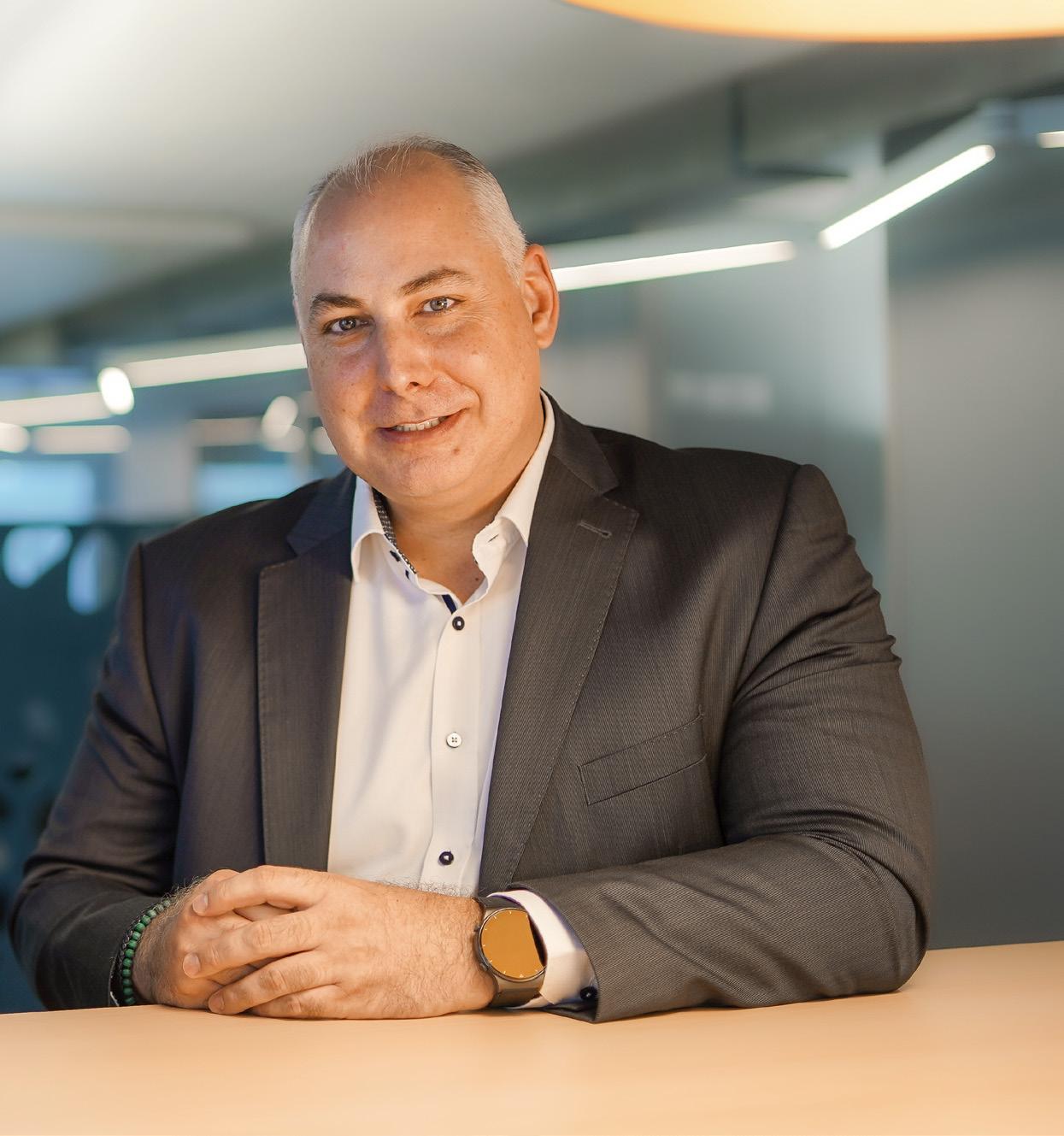
C o u n t o n t h e e x p e r tis e o f o u r in t e r d is cip lin a r y t e a m w it h s t a c k e d e x p e rie n c e in t h e in d u s t r y a n d f a m ilia r w it h a ll r e le v a n t le g isla tio n .

t m m n t x
W e g e t y o u r S w is s D C d o n ef a s t, f o c u s e d , o u t sid e t h e b o x .
Y o u r c o n s t r u c t i o n p l a n n i n g p a r t n e r f r o m g r o u n d t o c l o u d . Learn more

more

Alongside this, Green’s growth has also been fuelled by an expansive, invaluable network of partners.
“On the one hand, we have a whole set of key partners involved in our delivery, as we build data centres and create the systems. Then what we've done – very much in the background – is create an ecosystem of partners supporting that transformation and that journey to cloud, making Green the place where everything comes together,” Sueess explains.
“As you look at our website, you’ll see the ecosystem described and a set of partners, starting from consultancy, across transformation, implementation, security, and then the infrastructure where our core assets are.”
‘Best in class’ in practice – achieving the highest standards of sustainable operability
Recently, Green was awarded the status of ISG’s Best in Class Switzerland Data Centre Leader, a feat the company has achieved for the third year in a row.
In practice, such a status comprises a wide variety of factors, in which operational excellence, sustainability and technological innovation are included.
For Davis, another contributing factor of Green’s success in this area has come from the fact that both he and Sueess have worked with data centres from every angle.
“Throughout our careers, both Roger and I have been demanding consumers of data centres, users of co-lo data centres, owners and operators of in-house data centres, and, now, we’re developers and operators of commercial data centres.

“We have a whole set of key partners involved in our delivery, as we build data centres and create the systems”
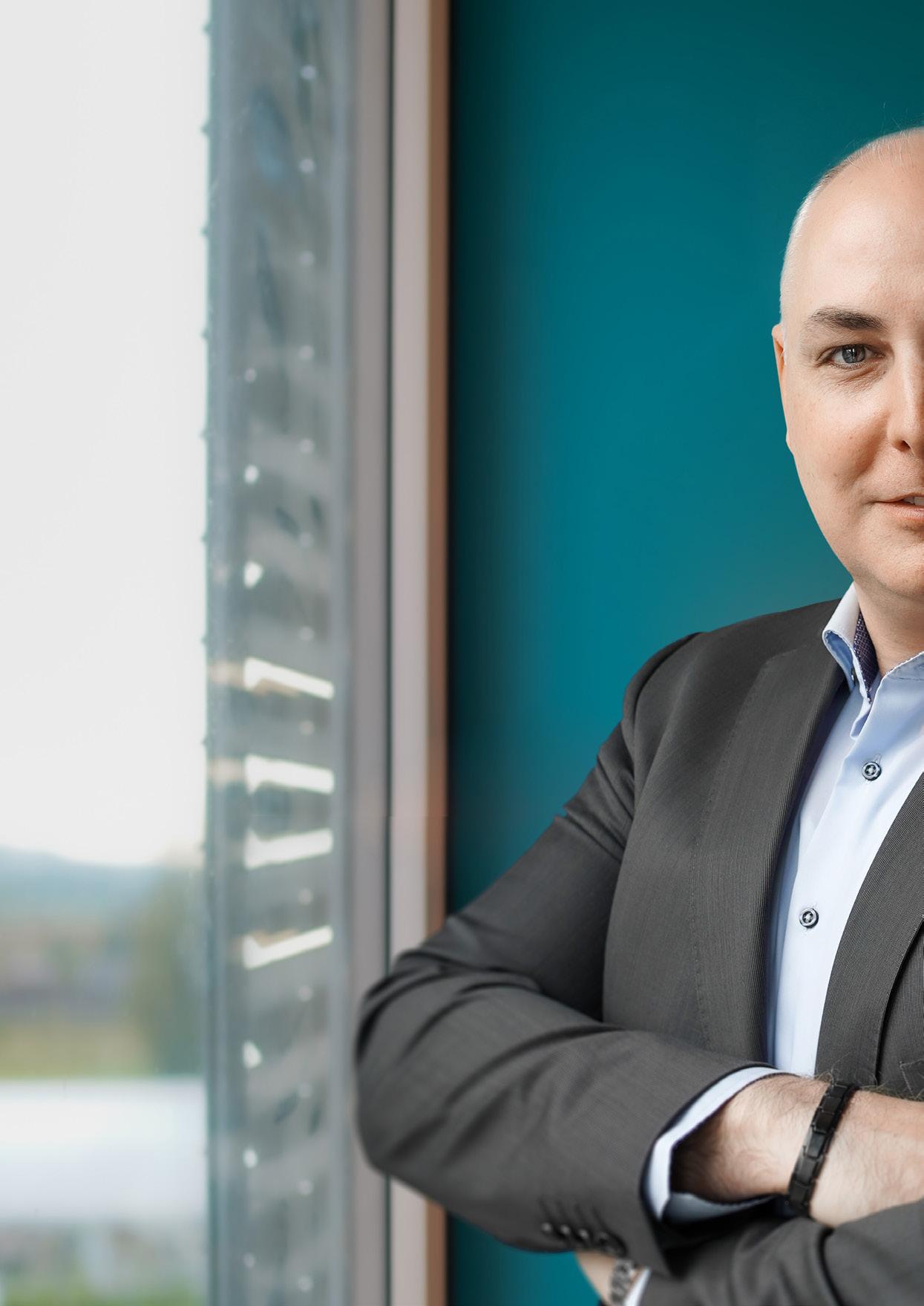
“For us, it was almost a given that we would invest in sustainability and differentiate ourselves there. But now, it’s actually become an advantage – in a lot of the discussions that we have – that we did this early on”
TITLE: CEO
INDUSTRY: DATA CENTRES
LOCATION: ZURICH, SWITZERLAND
Roger Sueess is CEO of the Green Group - consisting of Green Datacenter AG and Green.ch AG, an ISP for private and SME customers.
Roger has over 20 years’ experience in the financial services industry, where he was Managing Director and Fellow at UBS and Credit Suisse, responsible for cloud strategy and execution, IT infrastructure, IT architecture and IT innovation, acting as Head Cloud Business Office, CTO and Global Head Engineering, steering and forming the banks’ IT landscape and the industry as a whole.

Additionally, Roger was responsible for the Swiss and EMEA region and the banks’ representation at various boards, including the Swiss Banking Association. Prior to that, he worked as a consultant across the IT industry.
Roger Sueess has spent many years living abroad in the US, Asia and all over Europe, providing him with a wealth of international experience and a broad network.
He holds a Master’s in Engineering and a Bachelor’s in Electrical Engineering and Information Technologies from the University of Rapperswil (HSR).
In sensitive application environments, a reliable power supply is crucial. Avesco-Cat emergency power systems are recognized for highest safety and availability. With our expertise in advanced exhaust aftertreatment, we set the standard for maximum emission reduction in emergency power systems. Avesco has been the market leader in Switzerland for more than five decades and has an installed base of more than 1,500 systems to date. We are proud to be the partner of Green Datacenter on their journey in Switzerland. For more information contact: Gian Franco Broggi, Head of Sales Electric Power

When you've been on the other side as a consumer, you recognise what's important in terms of maintaining the brand and the entity that you work for. Our being able to influence how Green has grown, with that lens across service, availability, consumption and development, certainly brings a unique differentiation for Green.”
“I've always said that best in class is a process, not just an event. The commitment and hard work behind the scenes, which goes into operating our sites, maintaining our sites, etc. is evident in our recognition as best in class,” adds Davis.
Utilising their perspective as former consumers – and thereby understanding the priorities of their consumers first-hand, as well as what their end-user experience expectations are – Green has taken its sustainability commitment several degrees further than its competitors.
“I think we really went through a whole journey. Of course, we chased the optimal PUE, which is something very much known in the industry, but then we went even further,” explains Sueess, outlining the approach and extra-mile-factor that set Green apart.

“When you've been on the other side as a consumer, you recognise what's important in terms of maintaining the brand and the entity that you work for”
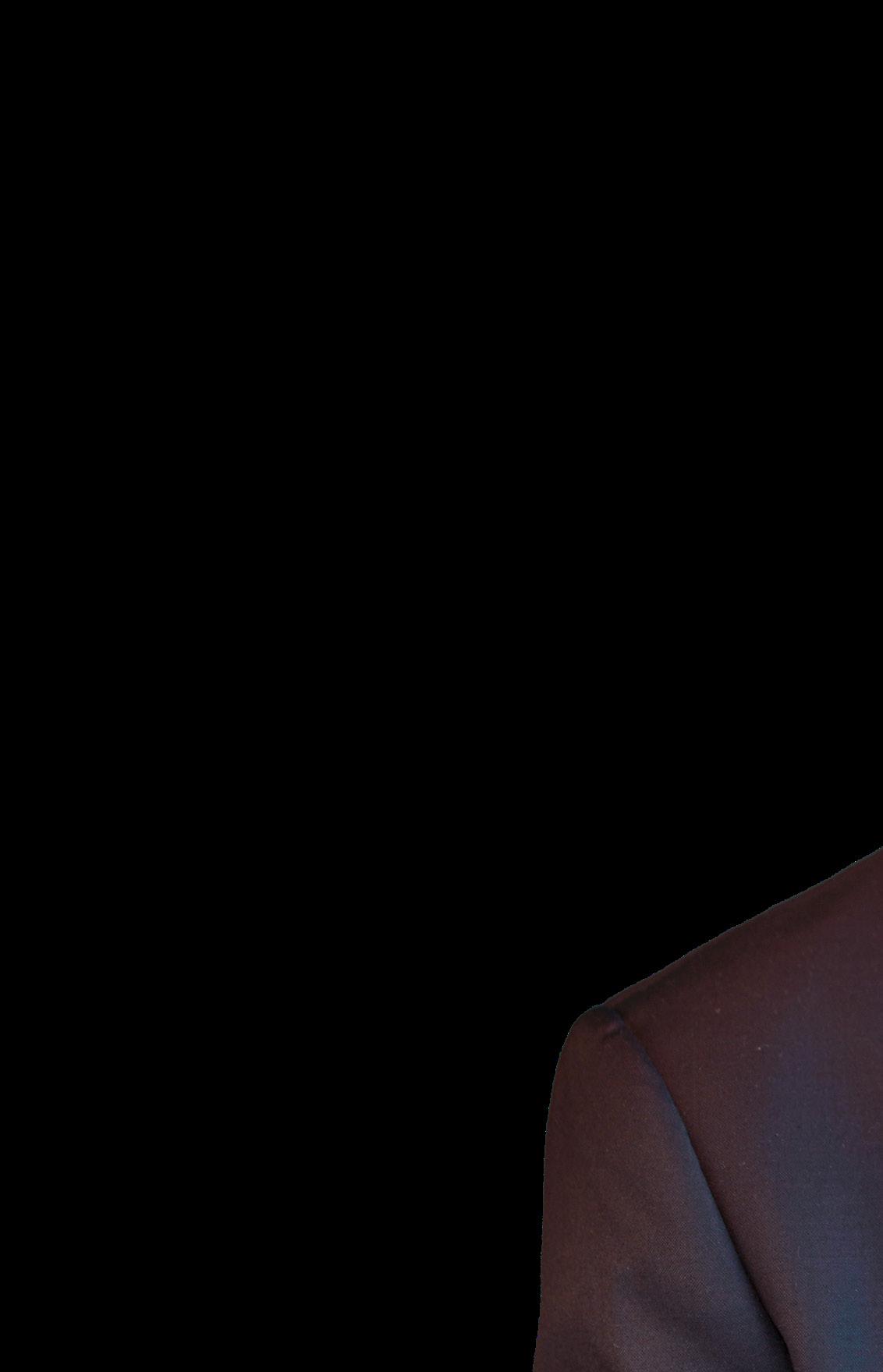
“I've always said that best in class is a process, not just an event. The commitment and hard work behind the scenes, which goes into operating our sites, maintaining our sites, etc. is evident in our recognition as best in class”
ASHLEY DAVIS, EXECUTIVE BOARD MEMBER, GREEN
Pioneers in general planning MEP for high performance data centers –founded in Zurich, Switzerland, active throughout Europe.
For more than 15 years, the Swiss general planning and consulting company PBP AG engineering has been developing future-oriented customized infrastructure solutions in the field of hyperscale data centers with a load of up to 50MW. The specialists are highly competent in the conceptual development and plan ning of complex projects.
They accompany construction projects from the concept phase to the handover of the completed building to the client.
PBP plans and supervises conversions as well as new buildings and large-scale projects in hyperscale data centers, research, industry and pharmaceutical sectors.
click here to visit our homepage

PBP AG engineering has played a key role in the planning of the new Green Metro Campus Zurich. Three high-performance data centers for cloud providers, enterprises and system integrators are built on 46,000 m2 of space at the Metro Campus Zurich. Green is an important player for the future of cloud computing. PBP was selected as a suitable partner for the implementation of the campus. In collaboration with Green, PBP launched a future-oriented modular DC hyperscaler concept with an IT load of approximately 50MW on a greenfield site and accompanied the huge project in close cooperation with the client. The unique PUE performance makes the Metro Campus Zurich the most energyefficient data center in all of Europe.
Salvatore Baia is Co-Founder, Owner and Vice President of PBP AG engineering, a general planning, electrical engineer ing and consulting company operating throughout Europe.
Baia also acts as CTO for PBP as the tech nical leader in the Datacenter Green Metro Campus Zurich project. He has been in the industry for more than 30 years and has been involved in data center project planning from an early stage. Baia was involved in complex planning of cages, small DC conversions, followed by power upgrades to the largest hyperscale data centers in greater Europe.

“We are part of the Swiss Data Centre Association, making sure that some of the knowledge can be shared and that we can build on various ideas. We work together with hyperscalers to help them improve their architecture and evolve ours.”









“This includes actually working together with two universities in Switzerland, going further to lead a new standard to certify data centres that is more inclusive –not just in the PUE, but actually the whole front-to-back operation,” adds Sueess.




With regard to ecological footprint, Green is also taking new approaches. Not only does this pay off for Green, but it also aids the region’s climate protection drives. “We asked ourselves how we can use resources wisely and reuse them. For example, for the waste heat (which is lost in many data centres) we feed it into a heating network. We initiated this technology, using it to supply thousands of households and industries with climateneutral heating. This saves 20,000 tonnes of CO2 per year. We are convinced that sustainable data centres are a win-win for companies, operators and the environment," Sueess explains.



“It's about more than just chasing one KPI. It’s a very holistic approach, and that's something that's very hard to just copy, because it's a complete mindset chang.”
ROGER SUEESS CEO, GREENThese ESG initiatives, in turn, drive a greater diversity in the talent pool, as sustainability is becoming an increasing priority for talent, when choosing companies for which to work. And, for Green, this trend has been clearly reflected in their recruitment process.
“We found the purpose element that ESG brings particularly helpful when acquiring talent, and, more and more, I think that's where it starts to pay back”


From cost to profit: a new perspective on sustainability
“We are part of the Swiss Data Centre Association, making sure that some of the knowledge can be shared and that we can build on various ideas”



“We found the purpose element that ESG brings particularly helpful when acquiring talent, and, more and more, I think that's where it starts to pay back,” Sueess says. “That sense of purpose is something that resonates with literally all employees. I don't think it's about particular demographics necessarily, but certainly the young ones –Gen Z in particular.”
“I firmly believe that best-in-class operability is now in our DNA,” adds Davis. “We have a very purposeful agenda, in terms of talent development, and I know for certain the contribution from our teams – in terms of our growth, and more importantly, our efficiency, our reliability, and so on – is a significant differentiation in Switzerland.”
Setting sustainability as a differentiator
Countless data centres have included sustainability within their pledges and future growth plans. But, as the title of their entire operations, ‘Green’ has made its presence in their strategy clear.

“We have a deliberate roadmap towards continuous improvement. We ensure that we actually have all the telemetry and instrumentation necessary so that we can be fully transparent, and so we can get those KPIs, maintain those KPIs, trend them and report them,” Davis explains.
“Having that, I believe, has made a significant contribution to a number of threads, in terms of sustainability. And again, I think ESG means many different things, but from a sustainability perspective, we have a very purposeful transparency that we share. I think best in class is a process we've institutionalised in those processes from the outset”.
Far from this being a hindrance to their growth pace, for Davis and Sueess, it is actually the key factor that gives Green its best-in-class reputation.
“Initially, when you focus on some of the sustainability topics, particularly in data centres, they're always being viewed as a tradeoff. So, if you invest a lot in sustainability, then you're not as profitable.

“We are actually looking, every year, to see how we could push our new technologies”
In the meantime, though, our clients and customers are actively asking about ESG strategies,” Sueess continues.
“I see that as an opportunity to start monetising as, you know, we are the company Green.
“For us, it was almost a given that we would invest in sustainability and differentiate ourselves there. But now, it’s
actually become an advantage – in a lot of the discussions that we have – that we did this early on,” explains Sueess.
“For a data centre, you’re looking at a lifespan of 20 to 30 years. So, if you haven't already made those investments and if you don't keep improving, you'll have a stale asset, so to speak, and you have to innovate at another level.”
Thanks to its proactive approach, Green has set sustainability as its key differentiator, and a priority that marks it out from its competitors. As such, it has a marked competitive advantage over its rivals, who have only just begun to implement their ESG progress strategies.

“There's a tonne of competition out there that we consider ordinary. But very few that are extraordinary, and our achievement over the last three years is that we consider ourselves to be extraordinary on that basis,” says Davis.
“Sustainability is a differentiator that people are looking for, and I think more and more it is becoming an MO rather than something that you can choose to do,” Sueess elaborates.
“Having an advantage there, or being ahead of the rest, helps. It’s important that you keep working on it.
“That's a mindset that we were able to establish at Green – and that makes our customers very confident that they made the right choice, because they see us continuously improving.”
“It's not that we go, ‘Okay, now we put the ribbon on it, we're done’. No, we are actually looking, every year, to see how we could push our new technologies: can we improve processes, configurations and so on, to keep that advantage and to keep ahead?” concludes Sueess.
With cloud-based technology enabling higher speeds and microsecond latency, experts predict 6G will transform the world. The next generation is coming
WRITTEN BY: MARCUS LAWThe rollout of 5G is now well underway, with predictions that 5G connections will exceed the one billion mark this year.
But, while the world grasps the potential of new network capabilities, the next generation – 6G – is already being explored.
Despite being in its early stages, experts predict 6G will offer higher frequency bands and flexible, cloud-based networking technology to provide unheard-of speeds up to 100x quicker than 5G, and microsecond latency.
According to the 5G Infrastructure Association, 6G will bring ‘a near-instant and unrestricted complete wireless connectivity’, with the technology set to radically reshape the way enterprises operate.
And, if predictions are correct, this transformational tech – which could support technology like automated cars and smarthome networks – could be a reality in the next six to 10 years.
6G: A ‘network of networks’
As tomorrow’s innovative applications, such as the metaverse and extended reality, look set to require ever-increasing connectivity, the utilisation of edge and cloud infrastructure will be key in the deployment of future 6G networks.
“6G is emerging as an edge-centric technology that will bind terrestrial (cellular), spatial (satellite), air (UAV) and maritime communications into a single, highly dimensional ‘network of networks’,” says Ian Goetz, Global Lead - RAN Systems Architect 5G at Dell Technologies.
“The choice of network service assigned to

The e2open connected supply chain platform provides the end-to-end visibility and collaboration you need to tackle unpredictability. Build trust and confidence with your channel, supply, logistics, and global trade partners. Take control of supply constraints through direct procurement and meet customer commitments in the face of disruptions and scarcity.
The connected supply chain. Moving as one™. www.e2open.com
E2open and the e2open logo are registered trademarks of e2open, LLC, or its affiliates.
MANISH VYAS PRESIDENT, COMMUNICATIONS, MEDIA & ENTERTAINMENT AND CEO, NETWORK SERVICES, TECH MAHINDRAyour cell phone (or IoT endpoint) will be dynamically based on the optimal balance of available compute and network resources,” he adds. “The ability to scale such network
services up and down elastically is a key benefit of using cloud infrastructure in 6G.”
The benefits that 5G already offers will also be delivered by 6G, with much higher performance, adds Manish Vyas, President, CME Business and CEO, Network Services at Tech Mahindra.
“Beyond that, 6G will enable intelligent, hyperconnected, decentralised, disaggregated, and highly secure networks with extremely high capacity and ubiquitous coverage,” he says.
“6G will use additional frequency bands, mainly in the range of mmWave GHz and sub-THz, with wider bandwidth access to enable capacity of up to 1 terabit per second.
“In addition, 6G will be built on the principles of open interfaces and ecosystems, and AI-native design,” says
“WE

Vyas. “This means that 6G networks will have access to more advanced AI capabilities and enhanced support for sophisticated mobile devices than 5G.”
Challenges of the move to 6G “For the next few years, the questions like ‘Is 5G enough?’ or ‘Do we really need 6G or higher data rates, if so, for what use cases?’ will continue to be there,” explains Shamik Mishra, CTO Connectivity and Vice President at Capgemini Engineering.
“As industries, real estates, ports, vehicles etc get connected to the internet through mobile connectivity, wireless technology must be transformed to be more efficient
in terms of cost, energy, spectrum and operations.”
6G will be cloudnative from the start with scalability and interoperability as key, says Volker Ziegler, Senior Technology Advisor, Chief Architect at Nokia.
“We see an opportunity to enable greater interaction between communication and computing systems, which have been a bottleneck in this transition because they have been designed separately,” he adds. “New architecture designs are needed in 6G
integrate these core elements, which should be flexible enough to enable services that can be employed across different and distributed cloud platforms, whether
“THE REALITY BENDING REQUIREMENTS OF 6G DEMAND THAT WE RETHINK WHAT A CELLULAR NETWORK LOOKS LIKE”
to
they are private or public, edge, core or on-premise.

“Working with vast amounts of data also requires a greater focus on security, and this has been one of the key driving forces of design for 6G networks at Nokia. We’ve carried out immense research to ensure network platforms in the 6G era are properly secured. This includes constant monitoring of micro-services as well as platform and workload integrity protection at boot and during runtime. We are also exploring whether elements of encryption are safe for the upcoming era of quantum computing in the 2030s.”
Rethinking what networks look like 6G will allow new and exciting possibilities in the future, Vyas says, including holographic communications, a tactile internet, intelligent network operations, networking and computing convergence.
“It’s hard to predict what 6G will look like,” he adds, “but from our learnings from 5G and open RAN networks, we know 6G is going to be AI-based, super intelligent, and fully integrated, with ultra-low latency systems with large ecosystems utilising open interfaces.”
And, as mobile networks become larger and more complex, 6G networks will leverage machine learning (ML) at scale, comments Mishra.
“6G will leverage AI/ML at scale for better radio/network design, improved network
One challenge that may slow the transition to 6G is the technical skills gap, comments Tech Mahindra’s Manish Vyas. According to a recent report by Eightfold AI, 33% of top network engineering and operations roles aren’t equipped with the skills to address emerging telecom trends. The number of young people taking IT subjects at GCSE has also dropped by 40% since 2015. “Industries and educational institutions must work together to close the skills gap and increase interest in STEM subjects, as well as promote the endless opportunities working in tech offers,” he said.
management, orchestration and resource management,” he adds. “Edge computing/ AI-driven applications combined with the sensor network will enable several new intelligent industry use cases through realtime consumption of data.”
“The reality-bending requirements of 6G demand that we rethink what a cellular network looks like,” says Goetz. “One of the first things we did was to drop the traditional ‘cell’ architecture that has long been the fundamental unit of design for cellular; it is, in fact, the ‘cell’ in cellular. 6G will adopt a ‘cell-free’ architecture where no cell and cell boundaries exist.
“WIRELESS TECHNOLOGY MUST BE TRANSFORMED IN ORDER TO BE MORE EFFICIENT IN TERMS OF COST, ENERGY, SPECTRUM AND OPERATIONS”
“The fundamental idea of cell-free is to deploy a large number of distributed radios that are connected to a scale-out, elastic cloud platform. With 6G, the whole network can flex to become as large or as small as it needs to be to serve the user. It becomes more of a living, breathing network.”

New network infrastructure to ensure smooth transition “We can expect novel use cases when the network will be treated like a platform,” predicts Mishra. “These use cases will bring new traffic patterns, new data rate requirements, higher uplink rates, machine-to-machine communications, etc. This all will drive how 6G wireless radio technologies evolve and how the network architecture is designed.”
“The 6G network architecture will be based on integrating various network functions in cloud environments, leveraging the advancement of AI in all domains, using different types of sub-networks, and enhancing
A “sound distributed computing and artificial intelligence strategy” will be needed to underpin successful 6G commercial deployment and enterprise use case enablement, according to an ABI Research report. “6G networks will need to be deployed across distributed computing domains with integrated edge AI resources to provide effective services for enterprise applications,” said Reece Hayden, a distributed and edge computing analyst at ABI Research.
means of exposing data and services to third parties,” adds Ziegler. “Data, connectivity, and computing are key capabilities that 6G systems need to offer to enable and, most importantly, scale for use cases such as automation, AI, metaverse, digital twins and others spanning across key industries.
“Ultimately, when we think about the transition to 6G, we need to understand that this shift is evolutionary, as it has already started with 5G paving the way for fully cloud-native networks,” he explains. “At Nokia, we identified four key aspects to define cloud-nativeness. We expect to see small, stateless microservices architecture running in containers since containers are faster to deploy and upgrade compared to large monolithic applications.
“We also expect cloud agnostic and infrastructure agnostic environments that can be deployed anywhere. Because of abstraction, we will be able to eliminate
hardware dependencies. And, finally, it will be all about DevOps for automation and faster time-to-market.”
The migration from 5G to 6G will require comprehensive edge cloud infrastructure, according to Goetz, who predicts a move from “connected things” to “connected intelligence”.
“When we talk about connected intelligence, we understand that we are going beyond personalised communication to realise intelligent connections between people, devices, and resources,” he explains.

“In the 6G era, it is expected that we will be able to interact through high-fidelity extended/mixed reality (XR/MR) interaction and even holographic communication,” concludes Goetz. “The success of such a vision relies on XR fully mobilising the senses of sight, touch, hearing, and smell to make customers enjoy fully immersive holographic experiences such as virtual sports, virtual travel, and virtual games anytime and anywhere.
“To realise these experiences, edge cloud infrastructure is critical.”
“DATA, CONNECTIVITY, AND COMPUTING ARE KEY CAPABILITIES THAT 6G SYSTEMS NEED TO OFFER TO ENABLE AND, MOST IMPORTANTLY, SCALE”



Clark County, Nevada, is principally known for the flashing lights and fast-living of the Las Vegas Strip, and simultaneously as the intended sports, entertainment, gaming and conference destination of the world.
The ‘brand’ of Clark County is chiefly carried by the Las Vegas Strip – “but we are so much more than that,” says Bob Leek, the county’s Chief Information Officer. “My role encompasses responsibility for delivering all information technology services to the county, so that we can effectively deliver them to the public that falls under our jurisdiction.”
As a consequence of Information Technology, however, the traditional boundaries that delineate this jurisdiction are expanding.
Geographically, Clark County has 2.2 million residents and about 46 million people that visit the county every year. It is also home to the eighth busiest airport in the world, the state's largest public hospital – and is the 11th largest county in the United States in terms of population. Its peer counties are those with cities like Houston, Chicago, San Francisco and New York.
Clark County is unique in that it also provides services which normally fall under the remit of the city or municipality, with over a million people living in unincorporated Clark County.

Bob Leek is CIO for local government Clark County, Nevada & his private sector background has given him a vision to transform the public services' landscape


These public services include fire services, law enforcement, roads and bridges, sewers, parks and recreational planning, permitting and business licensing – services that cities would typically provide.
Bob Leek is a department head amongst 38 departments at Clark County.
“I work with my peers on how they deliver services to the public, and we divide that up into two main objectives,” he says. “The first is to keep all of the information technology, resources and assets, such as uptime and availability, network, devices and operating systems – everything that people would typically associate with traditional IT related roles – running and humming.”
“But the other objective, which is rapidly growing in local government, is to consider and plan for the future,” he says, “and that means working closely with all departments to identify and understand how they want to improve the delivery of services to the public, and how that can be enabled by technology.”
According to Leek, these objectives are carried out with the underlying intent to create “a great place to work”.
Motivated and fulfilled staff translate into the effective provision of services to Clark County’s public. This recognition is crucial. It belongs to the growing trend of recent years: applying a holistic approach to synthesising the macro and micro ecosystems of wellbeing, as well as the intimate relationship between the wellbeing of the providers of public services with that of the public, who are its ultimate recipients.
The public in question is composed of a tremendously diverse population, composed of approximately 40% Caucasian, 30% Latino, 12% African American, and 10% Asian , with the full balance of the population covering Native and Indigenous populations, too. “It’s important, therefore, that we support and provide help to this very diverse demographic,” asserts Leek.
Digital transformation at Clark County takes an intergenerational view, having its eye focused firmly on both its present state, as well as the inevitable future composition of the public demographic.
According to Leek, there are five generations – and “a rapidly growing sixth” –of people that live in the county. There's also a general expectation that “in most people's lives, the ability to interact is done digitally”. But ‘most’, of course, does not encompass the entire picture, and Leek is highly aware of this fact.
In the grand global push for the digitalisation of almost every aspect of our lives, many organisations – whether private or public – are prone to overlooking the potential adverse repercussions of such a sweeping overhaul if not approached with equanimity and foresight.
What Leek and Clark County have grasped is the transparent, yet often disregarded point that the move towards digitalisation is one that, in the end, is meant to be fundamentally
BOB LEEK CIO, CLARK COUNTY
“In the end, all of our strategies and approaches have the essential and ultimate goal of improving the lives of the people in our community.”
in the service of people. Any premature, wholesale attempt to digitise public life is, therefore, liable to neglect those people and demographics who are at risk of being alienated due to their inability to interact with digital technologies. This ability may be socio-economic, or it may be generational, but, whatever form it takes, that it is present is undoubtable.
“The expectations of older generations,” says Leek, “dictate that, since they’ve grown up knowing that they could talk to or see someone in a public-service capacity in-person and actually visit a government office in order to meet their needs, it’s important that we develop solutions that cover those expectations, too.”
The choice to access local government services in both digital and ‘analogue’ (or, more correctly, physical forms) must be provided, and Clark County is strongly dedicated to providing these complementary systems of access to public services.
Leek says: “For us, this idea of digital transformation is not about eliminating the option that isn't digital, but about supporting an analogue transaction as well as a digital transaction. In order to do that, we have to completely rethink our workflows and have been making massive strides towards this.”
Clark County’s strategic plan here was first developed a few years ago, and Leek admits that the initial versions were “pretty audacious” in terms of the intent around delivering new technological capabilities.

Initially, it had 10 intentional outcomes, five of which were externally focused and a further five of which were focused internally. Over time, however, it became clear that its scope was too ambitious for any organisation to implement at any one time.
Seeing that a more viable plan was needed, Clark County quickly set about
COMPANY: CLARK COUNTY
LOCATION: NEVADA
INDUSTRY: PUBLIC SERVICES
Bob Leek is Chief Information Officer for Clark County, Nevada, supporting over 2.4 million residents and 43.2 million visitors to Las Vegas and surrounding areas every year. He has over twenty-five years of leadership experience, including almost twenty years in information technology disciplines.
His servant leadership at Clark County supports applications, infrastructure, and security solutions for public services including health, human services, justice and public safety systems, and administrative programmes, achieving positive outcomes in diverse communities.
Before joining Clark County, Bob worked in public sector county government, both human and pet healthcare in non-profit organisations, and commercial online retail services. His experience includes leadership roles in retail operations, corporate financial
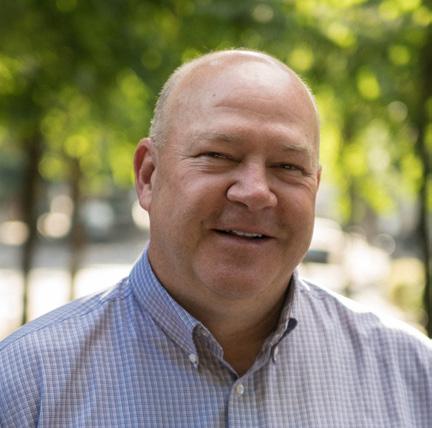
reporting and decision support system development, sales, international operations, logistics management, and bringing inclusion and equity to nurture the individual growth of his diverse staff in recruiting, supervision, and retention activities. His previous teams include Multnomah County (Oregon), Kaiser Permanente, Banfield Pet Hospital, and Egghead.com.
Bob is proudest of his work planning and executing large-scale, transformational change in complex organisations. His personal tag line is: Leveraging technology, supporting people, and optimising processes and change management to improve outcomes in the communities we serve.
Bob is a native of the Netherlands and received his BA degree in Accounting and Business Administration from Berry College in Rome, Georgia.



In its most practical form, democracy is all about the delivery of public services, and in the modern world, to deliver those services requires technology. Rick Taylor is ServiceNow’s Vice President of State and local government in the West. His day to day role puts him in front of every kind of government customer, from the state-level down to the smallest of cities, counties and special districts such as the power companies that are owned by counties.
In terms of the kinds of services that they deliver, Taylor says, “it’s right there in our name. Servicenow makes it easy to deliver great experiences and great services in the public sector space, and we serve three different kinds of constituencies.”
With ServiceNow being a technology company, I had to ask Taylor about the pandemic’s impact on their work culture. While most companies struggled to adapt to the pandemic’s remote-working catalyst, ServiceNow absorbed most of its impact. “We are a very digitally savvy company of
course”, says Taylor. “So we’ve been on our own digital transformation journey for many years, and we were already a very remote-friendly workforce.”

One of ServiceNow’s big taglines is ‘ServiceNow makes the world of work, work better for people’. “You See this in how we go to market and the products that we bring to market, specifically in the public sector space,” says Taylor. “It’s really about zeroing-in on our three constituencies and walking as far up the stack as we possibly can, to make it easy for people to develop the solutions that they need to solve problems for their particular constituency with our platform.”
ServiceNow’s platform has a clear and measurable effect on those that employ it, improving public services and improving the quality of human life.
Learn more
BOB LEEK CIO, CLARK COUNTYtransforming the strategic plan that would in turn set in motion the transformation of their technological and, subsequently, their public services landscape. “The latest version of our strategic plan is really focused around three key intentional outcomes,” says Leek.
“One is publicly focused and oriented around both analogue and digital transformation models that support the delivery of services. The second is departmentally focused and looks at how our 10,000 employees are all able to use this technology to deliver services to the public. The third has an employee focus, which emerged out of the COVID-19 emergency response – a recognition that we need to take some time to intentionally concentrate on the employee experience, in addition to what we might call our customer experience.”
These three pillars serve as the basis for Clark County’s technology plan, and it's important to note that the county’s technology strategy is distinct from its IT strategy – which concerns itself with areas such as cloud-based services, mobility and web-based capabilities,

“There is no aspect of public service in Clark County that doesn't have a technology component associated with it”
and focuses on their network.
“In the end,” says Leek, “all of these strategies and approaches have the essential and ultimate goal of improving the lives of the people in our community.”
Any resident that travels around the county in Southern Nevada might go through the four cities that are in the Metro area, which are the city of Las Vegas, the city of North Las Vegas, the city of Henderson and Boulder City. And the County supports the needs and residents of rural areas including Mesquite, Laughlin, Primm, and Indian Springs at the edges of the county.

“The relationship that we need to have with our residents,” explains Leek, “has to recognise that any resident travelling around the county is not intuitively going to distinguish local government services from
the city's or the county's.”
The relationship that Clark County seeks to have with each of these jurisdictions is based around thinking in the macro-sense –from a resident-centric point of view – and asking what it is that a resident requires; who it is that’s providing those services; and how they can be made seamless and predictive so that residents can easily gain access to those services.
This seems like an obvious point, but is actually quite innovative in terms of thinking about public services. The traditional model has always been more ‘top-down’ in terms of delivery and access, but Clark County –aided by technological developments – is now moving to the establishment of a more dynamic and interactive public service model, and technology forms its foundation.











With innovative and flexible connectivity solutions, T-Mobile® is committed to keeping governments and local communities connected from virtually anywhere, all on the nation’s largest, fastest, and most reliable 5G network.
As a trusted partner in digital modernization, our tailored approach for government works to reduce costs, improve security, and increase workforce mobility.
To learn more, visit T-Mobile.com/Government.
Explore solutions »
Capable device required for 5G; coverage not available in some areas. Some uses may require certain plan or feature; see TMobile.com. Fastest: Based on median, overall combined 5G speeds according to analysis by Ookla® of Speedtest Intelligence® data 5G download speeds for Q2 2022. Ookla trademarks used under license and reprinted with permission. Most Reliable: According to an audit report conducted by independent third party umlaut containing crowdsourced data for user experience including task completion collected from January 2022 to July 2022. Full details can be found on: www.umlaut.com/en/benchmarking/USA. T-Mobile, the T logo, and the magenta color are registered trademarks of Deutsche Telekom AG. © 2022 T-Mobile USA, Inc.

There is no aspect of public service in Clark County that doesn't have a technology component associated with it, and so all public services need to be enabled digitally, or through technology, in order to improve the lives of its residents.
As Clark County emerged from what was known as ‘the Covid emergency response’ to the 'new normal' that we now live with, Leek says that the team “spent a lot of time considering the impacted areas of people's lives”.
The ‘Pre-Covid era’ saw a Clark County workforce that was focused on a mix of traditional and innovative thought processes in the delivery of services, but post-Covid, what the county has seen – after suddenly having to move and support thousands of employees to work-from-home setups – is the expectation that the county deliver “noble solutions”.
“We want to innovate and rethink workflows; we want to adopt and develop using agile practices; we want our solutions to be techenabled; and we want to ask our employees whether it's easy to do their jobs and, if not,
what it is that prevents their jobs from being easily done,” says Leek.
There were several initiatives that the county had on the books for years, such as digital signatures for documents, an initiative that had always been deprioritised in light of other needs. When the pandemic hit, the only way for leaders and their staff to sign documents, for example, was to implement an electronic signature solution. This was the case
BOB LEEK CIO, CLARK COUNTY
“What is available now is the technology to pull all of that together, if we just step back and rethink what it is that the public needs from us”
for both public and private enterprises the world-over. And, in short, all that was shelved for years became a reality in mere weeks due to necessity.
“On that basis,” says Leek, “we now ask ourselves, ‘what does nimble, innovative, smaller, agile, iterative development and service-modelling look like, versus how we would have done things in the past?’.”
The technological foundation of effective public service delivery is one that inevitably requires partnerships, and Clark country’s partnerships are no exception.
T-Mobile is one of the key service providers in the Clark County region – a relationship founded on a couple of basic, yet important principles.
One of these is that the two are closely aligned in their values. “Our mission is to deliver services to the public; T-Mobile's mission includes providing access to cellular solutions and the internet – and they are really focused on the opportunity to use those solutions in the way that a subscriber is looking for.”
Furthermore, T-Mobile is a national organisation, and, as Leek says, Clark is “a very large urban and rural county” that is focused on working with “partners that have a national perspective”.
“We have very robust programmes with local organisations as well, but T-Mobile would be a great example of an organisation that we expect to work with because we are one of the largest counties in the US, and those large service providers would of course love to have access to as many subscribers as they could in a market like ours. So, strategically, we work with T-Mobile by sharing our plans with them concerning where we're going in terms of the
services that we're trying to provide - and then we welcome their input to help refine those potential solutions.”
Another of Clark County’s major partners is ServiceNow. The county was an early adopter of ServiceNow and has been a customer for many years.
“They provide some of our most core services when it comes to our IT organisation,” says Leek, “as well as our incident and problem management. Our asset management is also soon going to be done on ServiceNow, too.”
The ServiceNow toolkit really serves as an engine for the delivery of Clark County’s IT services, “but in the future – being one of the premier, low-code/no-code solutions really focused on workflows – ServiceNow will be a key platform on which we can build the types of solutions that we need”, according to Leek.
“We take an approach stipulating that, when we're presented with a need, the

question
ask ourselves is,
ServiceNow?'.”
From ecommerce to eGovernment: inspirations from the private sector
Bob Leek didn't grow up in public services. Soon, it will be his 10th year as a leader of county services, but his background is in retail – working for a company called egghead.com during the dot com era – and then for Kaiser Permanente, one of the largest healthcare companies in the United States, for a further ten years. This movement from digital and gargantuan private companies to public services has endowed him with a perspective that could be greatly beneficial to the delivery of public services.
Orienting himself in this direction, he asks: “What does Kaiser do?”
“Well, it delivers services to a patient.
BOB LEEK CIO, CLARK COUNTYKaiser's model is all about preventive care, and the question is how they can deliver preventive care so that patients never have to actually go into a hospital or an emergency department. So the mindset was always around what is now called ‘user-centred design’.”
User-centred design tries to optimise the product or service around how users can, want, or need to use the product, preventing users being forced to change their behaviour and expectations to accommodate the product. “Kaiser's entire model is essentially around user-centred design.”
This is where Leek’s background now finds its feet: in the context of a nonprofit, usercentred design principle. There are over 3000 counties in the United States, and Leek’s vision is that Clark County could have a service model that could be scaled down to a county that has far fewer residents.

In local government, there’s a real opportunity to connect from within an organisation to the public in the delivery of services. Other industries have been doing this for years, if not decades.
“When you think about the retail industry”, says Leek, “the online ecommerce
“I'm not sure that people have thought about the local government services' sector in the same way as the private sector, but now the availability of technology in local government means that we could really do that”
we
'why can't we do it on
capabilities have matured to such an extent that now, most people expect that whatever it is that they need to access, will, through a website, be delivered to their door within an hour or two.
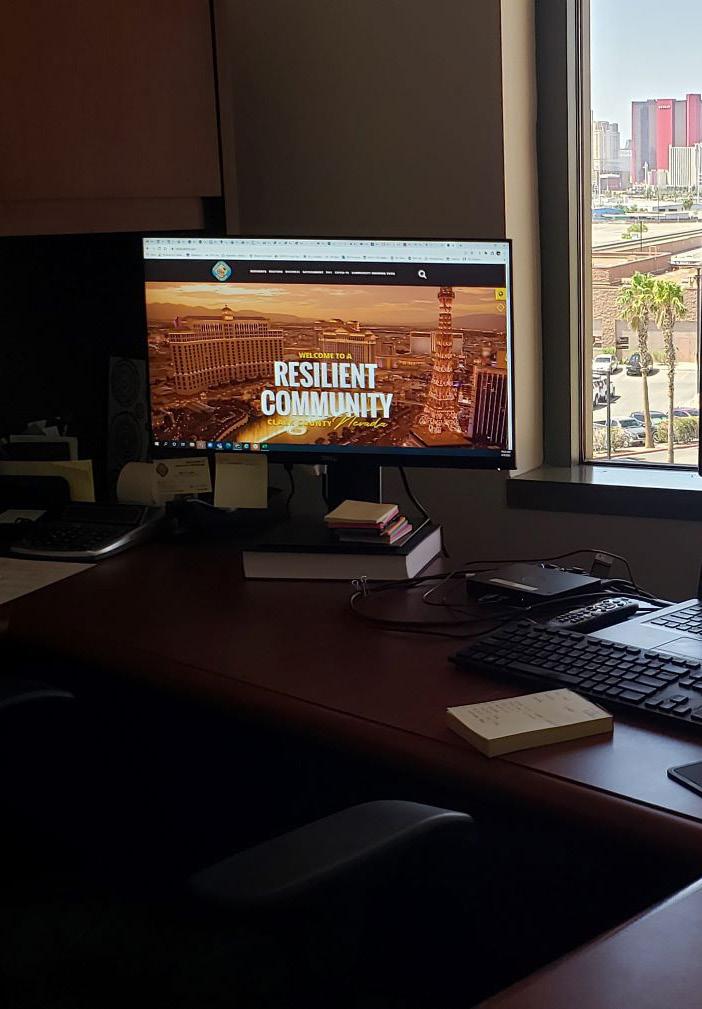
“I'm not sure that people have thought about the local government services' sector in the same way as the private sector, but now the availability of technology in local government means that we could really do that.”
In practice, Leek sees that this could manifest in the following manner.
“For example, if a resident has an urgent need, the county’s ability to respond in a way that doesn't start with a phone call or an in-person visit, but instead with texting 'help' to a text short code and having a county service show up within an hour, would be the equivalent of the ecommerce model.”
“What is available now is the technology to pull all of that together, if we just step back and rethink what it is that the public needs from us.”
This approach is truly visionary in terms of access to local government and public services. The principles of supply and demand that serve as the engine for the private sector have, granted, acted as a fundamental stimulus to the development of cutting-edge, almost instantaneous access to products and services – but why shouldn’t this model be applied to the public sector?
Bob Leek has grasped this insight and views it as sitting firmly on the horizon, a gateway to the evolution of public services access, which could take it to the next level of civilization in the true definition of the word.
Leek says: “Another example would be, say, if a small business owner is looking
“It’s important that we support and provide help to Clark County's very
to expand their physical footprint in their store; they need permits in order to do that. If those permits are pretty straightforward – such as getting a plumbing, electrical or structural permit, because there's not a lot of complexity in those types of projects – the ability to deliver those permits digitally and swiftly could be achieved, and this possibility is readily available through the technology that exists right now.”
Clark County is presently seeing its sports and resorts industries going through a new wave of investment in building,
especially with the recent addition of the Las Vegas Raiders, in addition to the construction and opening of the Allegiant Stadium in 2020. Clark County also has to engage those projects and have supported those industries as well.
But their focus is on the 2.2 million people and the over 150,000 businesses that exist there. “Really, it's about rethinking how to deliver government services on a digital footprint,” says Leek, “and frankly, it's expected by the public.”

“The investments that are now capable of being made, especially through the programmes at both federal and state level –where one of the biggest historical barriers has always been funding – are very promising.
“There are big changes that are taking place now, and the availability of funding to apply to these types of service models is unprecedented. We have this great opportunity where funding is being allocated to create digitised solutions for the delivery of public services. For that to be achieved, a plan is needed (which we have), intent is needed (which we have), and we need to deliver services to the public (which is what we do).”
The county has seven main areas of focus for the next 12 to 18 months. These are: the addressing of homelessness, houselessness and providing access to affordable housing; providing high speed, affordable internet access for all residents; public safety, security and privacy; innovation and new technologies like AI and machine learning; data integration and visualisation; and workforce and technology skill improvement.
As Bob Leek says, “the present place is an exciting place to be”.
Having a comprehensive IT Asset Management strategy is essential for organisations to keep track of their IT assets and CIOs have a key part to play
 WRITTEN BY: MARCUS LAW
WRITTEN BY: MARCUS LAW
In the past, IT departments were able to control assets within their own domain.
But, in a post-pandemic world replete with remote working and subscription-based software, it’s arguably never been more difficult to keep track of technology assets.
Organisations and IT leaders are therefore paying ever-increasing attention to IT Asset Management (ITAM). As IBM describes, ITAM is the end-to-end tracking and management of IT assets to ensure that each one is properly used, maintained, upgraded and disposed of at the end of its lifecycle.

“Gartner defines a ‘technology asset’ as one that can generate, receive or process digital information to support business activity,” explains Stephen White, Research Director at Gartner. “Things like ownership, subscription status or location are not important anymore. What matters is that all assets are governed and managed according to ITAM principles and best practices.”
Effective management of IT assets
According to IBM, the main objective of ITAM is to ensure that IT resources are used efficiently and effectively. ITAM also helps optimise costs by reducing the total number of assets in use and extending the life of those assets, avoiding costly upgrades.”
“Simply put, IT asset management (ITAM) is the effective management of all IT assets,”






A modern network must be able to respond easily, quickly and flexibly to the growing needs of today’s digital business. Must provide visibility & control of applications, users and devices on and off the network and Intelligently direct traffic across the WAN. Be scalable and automate the process to provide new innovative services. Support IoT devices and utilize state-of-the-art technologies such as real-time analytics, ML and AI. And all these must be provided with maximum security and minimum cost.
This is the power that brings the integration of two cloud managed platforms, Cisco Meraki and Cisco Umbrella. This integration is binding together the best of breed in cloud-managed networking and Security. cisco.com cisco CiscoSecure CiscoSecure



 JON KETLEY SALES DIRECTOR, SERVICENOW
JON KETLEY SALES DIRECTOR, SERVICENOW
explains Jon Ketley, Director of Technology Workflows at ServiceNow UK&I. “It speaks to those tools and mechanisms that an organisation may employ to ensure its technology assets are being utilised properly and maintained effectively.

“It is all too common in modern organisations to have bloated and dispersed IT assets that aren’t fully economised, documented, tracked and utilised. ITAM is therefore increasingly important as organisations navigate business atmospheres that place a premium on increasing digitisation.”
According to ITAM provider Lansweeper, nearly 66% of IT managers have an incomplete record of their IT assets as well as all the hardware and software assets in an enterprise. Research suggests 30% of organisations are in a chaotic state because they don't know what they own.
To combat this, the CIO should be a key player ensuring an organisation’s ITAM
“CIOs are now realising that they can’t provide adequate guidance for their organisation without a full and comprehensive understanding of their own IT capabilities”
capabilities are up to scratch as these play a vital role in any business strategy, adds Ketley.
“Due in part to the pandemic, CIOs are now realising that they can’t provide adequate guidance for their organisation without a full and comprehensive
understanding of their own IT capabilities and shortcomings,” he explains. “This is because our modern business environment has an accelerated digitalisation culture, placing immense value on knowing what your IT environment can do well and what could be done differently, which can then feed into the responsibilities of the CIO.
“Good strategies and decisions fully reconcile where we are now, all the way through to where we would like to be in the future,” Ketley adds. “This requires a high degree of self-awareness, which a sophisticated ITAM capability can provide to a granular level.”
ITAM integral to ensure IT governance
“ITAM is integral to effective IT governance,” Ketley continues. “With the correct solutions and operating model in place, IT professionals and business leaders will have access to the correct data and insights they

“It is all too common in modern organisations to have bloated and dispersed IT assets that aren’t fully economised, documented, tracked and utilised”
JON KETLEY SALES DIRECTOR, SERVICENOW
Research conducted by the International Association of Information Technology Asset Managers (IAITAM) found 88% of respondents had found cost savings of between one and 15% with a well-utilised ITAM programme.
need to support them in making informed decisions around any number of initiatives. Additionally, having a sophisticated ITAM capability offers decision makers a company-wide perspective on what the current priorities are for their organisation, which can then be fed into any business strategies and decisions being taken to economise, reorganise, expand or innovate.”
According to Roel Decneut, Chief Strategy Officer of Lansweeper, not only is IT governance essential to the security of an organisation, it has a direct impact on other key priorities, including profitability. “Without proper ITAM, an organisation’s IT footprint grows uncontrollably, leading to security challenges, cost inefficiencies and management challenges,” he explains. “Unused or outdated devices can add to operational overhead, wasting resources and unduly inflating the cost of software licences and services.”

The central objective of any strong ITAM structure is to help decision makers understand and control their assets.
Proper ITAM can provide cost savings, too: according to Gartner research, “many organisations can cut spending on software by as much as 30%” using best practices to optimise software licences.
“By leveraging the correct solutions, organisations can optimise software, hardware and cloud spend to ensure it is being used as effectively as possible and

In its report Prepare Your IT Asset Management for 2020, Gartner notes that, given the increased reliance on platform and infrastructure services, effective asset management can enable organisations to manage their consumption of “on-demand services”.
According to Atlassian: “With increased control, visibility, and assigned responsibility, teams can reduce excess consumption including overprovisioning, and idle instances, avoiding unnecessary costs.”
minimise wastage,” Ketley says. “Secondly, a core goal of ITAM is to reduce technology costs by automating the end-to-end IT asset lifecycle. This minimises repetitive tasks and wasted effort, allowing for a cost-effective distribution of technology and talent.
“Finally, a priority for ITAM is to mitigate IT asset risks by enforcing asset policies, ensuring asset traceability, helping meet regulatory requirements and avoiding unexpected software compliance overages, in addition to unexpected cloud usage costs. For many enterprises, implementation of an effective ITAM strategy can generate savings of seven figures or more while reducing the risk of fines and reputational damage relating to security and regulatory breaches.”
“Gartner reports that knowing the status of your technology assets at all times enables proactive management that reduces risk,” comments Decneut. “Perhaps more importantly, it ensures employees have secure access to the updated, operational

technology assets they need to be productive and effective. And that’s really the holy grail of effective IT governance.”

effective ITAM capability that provides a holistic view and manages the full
lifecycle of all IT assets (software, hardware, cloud) can help organisations make informed decisions that support wider transformation initiatives,” concludes Ketley. “Maximising IT spend not only helps free up funding for digital transformation initiatives, minimising wastage and accelerating outcomes, but the visibility that ITAM provides can also help organisations tackle legacy technology and technical debt, while managing the organisations exposure to risk.”
“An
“Gartner reports that knowing the status of your technology assets at all times enables proactive management that reduces risk, lowering IT spend by up to 30%. Perhaps more importantly, it ensures employees have secure access to the updated operational technology assets they need to be productive and effective”
ROEL DECNEUT CHIEF STRATEGY OFFICER, LANSWEEPER

 PRODUCED BY: KRISTOFER PALMER
PRODUCED BY: KRISTOFER PALMER


Society is changing. As populations increase and myriad global challenges arise, governmentfunded organisations are becoming more digitally-savvy in a bid to meet the varying needs of diverse local districts. Many of these challenges remain the same region to region—particularly in the UK, where chronically-underfunded local councils are very much behind on their ability to leverage technology.
The result? Public demands are changing and authorities are operating with legacy systems in need of updating.
It’s not very often you begin a conversation about digital transformation with a history lesson—though the subject itself dates back as far as the 7th Century—but in this case, it’s warranted.
Southend-on-Sea was recently granted city status and is situated on the south coast of the UK, but it wasn’t always a city, nor was it as digitally-driven as it is today. Southend came from humble beginnings, starting out as a small settlement called Prittlewell, which expanded over the years to accommodate the 180,000 residents that live here today. This gradual increase in population, and the size of Southend, led to public demand for a governing organisation that moves with the times—and on smaller budgets.
Addressing a common challenge in the modern day, Southend-on-Sea City Council (SCC) faces the demand for all the necessary services while the purse strings are tightened further, forcing localities to stretch their resources wherever possible.
Example of an image caption

Tackling commonplace issues for the people of Southend never incorporated digitisation until recently. Now, as the organisation’s Director of Digital & ICT, Carol Thomas leads the digital transformation of SCC. She was able to take an underperforming IT team and turn things around during the coronavirus pandemic, which further tested the organisation’s ability to adapt to modern challenges through digitisation.
Not only is Thomas well-versed in IT systems, but her stint in business operations helped open her eyes to build understanding of how organisations operate and the potential areas for digital transformation. What’s more, she led a critical demand of SCC during one of the most challenging periods in terms of maintaining the integrity of processes, let alone implementing new initiatives to streamline actions to meet the future demands of its locality.
Since COVID-19, the team has adopted more digital methods of working, including a work-from-home model, allowing employees to manage their own workloads and personal lives much better. This was a major part of rebuilding its leadership team, as well as adopting the right solutions to unlock the benefits of a legacy system overhaul.
Not only has the performance of the organisation changed throughout its transformation journey, but the culture itself has shifted to create a more committed and digital-focused environment—spending less time on the menial, mundane tasks and allowing the team to focus on the development of resident experiences with the council.

Discussing this on behalf of the organisation, Thomas confirms why transformation is such a critical movement for SCC, stating that it was shaped by “the drive to do more with less across the whole council; the drive to work a lot smarter”.
“We moved from an underperforming IT environment, which was not engaged with the rest of the council, to having an absolute desire to build a smart city—and we’re now working towards it.”
SCC’s first port of call for digitisation was to acquire solutions from Microsoft as the base of its hybrid-working model. Working with Microsoft Office 365 has been a gamechanger for the organisation, supporting
TITLE: DIRECTOR DIGITAL & ICT
LOCATION: SOUTHEND-ON-SEA

Carol is an experienced CIO and IT Director who has successfully transformed business and ICT in local government, financial services, audit, aviation and aerospace. Carol loves turning teams into high performing and empowered ones, and helping people and organisations be the best they can be.

Paying it forward, and people are important to Carol - a founding member of the Boards of the CIO Council of South Africa. Carol is also a member of the Public Sector CIO Forum and has served on Boards and committees focused on qualifications, governance, heritage and the arts.
CAROL THOMAS DIRECTOR OF DIGITAL & ICT, SOUTHEND-ON-SEA CITY COUNCIL“Connectivity is one of those elusive things that allows use of the internet as well as the ability to connect to all sorts of useful services”
That’s why we’re building a brand new, intelligent fibre network for the data age. A network that’s better by design and sets a new standard for digital infrastructure. cityfibre.com/betterbydesign
Helping Southend achieve its smart city ambitions, CityFibre is bringing economic benefits to residents while transforming the city into a UK tech leader.
CityFibre is building a brand new full-fibre network across UK towns and cities – earning them the accolade of being the first nationwide network specifically designed and purpose-built for the data age.

Not only is CityFibre the UK’s largest independent, fibre-only network, but it’s also backed by many of the world’s leading financial institutions, funding from which is being invested into delivering its ambitious 2025 goals. By 2025, CityFibre’s rollout will reach eight million homes, 800,000 businesses, 400,000 public sector sites and 250,000 5G mobile sites.
CityFibre’s partnership with Southend-on-Sea City Council
Southend-on-Sea is an area of significant investment for CityFibre, and this partnership has come at a critical period of digitisation for the city. “CityFibre’s initial investment in Southend was £30mn. However, within months, we identified great potential and demand across the city,” explained Jean Gowin, the CityFibre Area Manager for Southend. “We therefore increased our investment to £50mn, enabling the building of an even bigger city-wide network.”
As their collaboration helps the city leap forward towards digitalisation, CityFibre and
Southend-on-Sea City Council continue to build their strong working partnership. “CityFibre’s partnership with Southend City Council began back in 2016, when they signed a 10-year contract to deliver nearly 200 dark fibre connections to many of their assets, including council buildings, schools and CCTV poles,” said Gowin.
“CityFibre has enabled Southend to achieve its digital and smart city ambitions, bringing projects such as community WiFi, telemedicine, social care home monitoring, smart cars and smart logistics to life.”
There are huge economic benefits to residents and businesses of Southend, thanks to this fullfibre rollout. CityFibre recently commissioned an independent report which measured home value increases, productivity improvements, healthcare benefits and many more.
“CityFibre has worked closely with Southend in all aspects of the project, from the practicalities of the physical build to delivering its smart city ambitions,” Gowin concluded. “Working well with the local authority is key to the success of CityFibre builds, and Southend have been an amazing example of a collaborative and forward-thinking council.”

 CAROL THOMAS DIRECTOR OF DIGITAL & ICT, SOUTHEND-ON-SEA CITY COUNCIL
CAROL THOMAS DIRECTOR OF DIGITAL & ICT, SOUTHEND-ON-SEA CITY COUNCIL
the delivery of more than 3,500 hours of training and providing suitable opportunities for collaboration in an environment where connectivity is key. Implementing cloudbased automation systems from Hornbill, a provider of cloud-based customer service solutions, was a key factor in driving productivity on the service desk.
“It links in with all the strategies that we’ve put together,” says Thomas. “We started driving Microsoft 365, plotting out remote and hybrid working by upping our levels of security. We also changed the way that people engage with IT.”
Maintaining a humble disposition, Thomas highlights the organisation’s new approach to project management, which resulted in the success of almost 100 projects and is yet to witness one fold. “I think that’s relatively unique, because you see a lot of failed projects,” she says, before commenting on the shift bringing teams closer together.
“We’ve changed the culture from a fear-driven culture to a high-performing environment, where people behave as if they’re family and we look out for each other.”
Further to Office 365, Thomas references Microsoft Azure as a critical supporting tool for the digital overhaul of its legacy technology infrastructure, which provided the IT team with access to more data and the ability to share it across multiple applications.
“The world is changing and COVID-19 sped up the rate of change”
As an organisation with multiple stakeholders, SCC’s achievements were not without challenges. The first of these was the constantly evolving technology landscape, which requires a new level of thinking in the face of updates.
“One of the biggest challenges is the interconnectedness of everything. Normally, you would think ‘system A is connected to system B, then C’. But then you discover they’re connected in a loop, so you’ve got to update them all at the same time to be able to move them,” says Thomas.
Further to this, another factor contributing to the success of any project in this environment is the people and how they adapt to digital technology applications. “Another challenge is the
ability to take people along on that journey. The narrative is important to ensure people understand what we are doing and why, as well as the impact that it’s going to have on their ability to deliver their role in the future.”
While the majority of the population has access to digital tools, such as mobile smart devices and computers, there remains a percentage of the population that is yet to accommodate technology into their everyday lives. The Office for National Statistics (ONS) stated in 2018 that an estimated 8% of the UK population possesses zero basic digital skills and, although the figure is declining year-on-year, poses an exclusion challenge—particularly in deprived and vulnerable communities.

When a business goes digital, the transformation touches more than IT. That’s why we partner with clients to build the capabilities and nurture a culture of continuous innovation. NTT builds the foundations that make digital ambitions possible.

Find out more about how everything is iNT Terconnected
Read what Vivek Daga, Managing Director for NTT in UK and Ireland, has to say about leading a digital business and enabling success in Technology Magazine: https://bit.ly/TechMagVD1
This is where the aforementioned SCC culture shift began.
The ability to facilitate that shift required significant consideration from SCC’s IT team to ensure that adopted systems were beneficial for all members of the community, taking into account the individuals that are less inclined to rely on digital services. This plays into the organisation’s strategy for inclusivity and providing equitable opportunities for the citizens of Southend.
As the city grows and more challenges arise, partnerships will be critical for the organisation’s future. Businesses that have already supported SCC’s strategy—including Vodafone, Phoenix, Microsoft, Agilisys, NTT, and CityFibre—will continue to do so, opening up channels for potential partnerships in future. The council will continue to review and renew its estate in its strategy for the future, which also incorporates more sustainable practices.
“We will complete our move to the cloud, decommission most of our data centres, and, hopefully, complete all of our front-end work for the residents,” says Thomas. “They will have a more intuitive way of engaging with the council, and we’ll also start working closer with partner organisations across the city to develop more connectivity to empower our residents while also bringing them closer together as a community.”
“Connectivity is one of those elusive things that allows use of the internet as well as the ability to connect to all sorts of useful services, but we need to make sure it also brings people and communities closer.”
COVID-19 was somewhat of a facilitator of fast-paced change as the organisation realised the potential benefits digital can offer residents.“One thing COVID taught us is that people are important and we need to help our residents foster that,” Thomas explains.
 CAROL THOMAS DIRECTOR OF DIGITAL & ICT, SOUTHEND-ON-SEA CITY COUNCIL
CAROL THOMAS DIRECTOR OF DIGITAL & ICT, SOUTHEND-ON-SEA CITY COUNCIL
“We will complete our move to the cloud and decommission most of our data centres”

Taking the discussion back to a time with nothing digital in sight, Southendon-Sea’s heritage was formed from a small Saxon village called Prittlewell, which, in the 6th to 7th century, was the first settlement of the now-called Southend.
From the 13th to the 16th centuries, the village was a busy market town during a period where substantial building work was underway to develop the settlement. But, the most significant and fast-paced
developments occurred in the 20th century, with construction of the Southend Museum building in 1905, the movement of Queen Victoria’s 19th century statue to Clifftown Parade in 1962, and the commemoration of the Churchill Gardens in 1965—recognising the UK’s famous Prime Minister, Sir Winston Churchill.
The town had significant memorial influences from war efforts, which built the foundation of the current 'city by the sea’.
The organisation will also remain diligent of its employees’ welfare as the changemakers of the council and first port of call for digital adoption. The workplace culture of the council is echoed throughout the community— something that Thomas wishes to maintain.

“The world is changing, and COVID sped up the rate of change,” says Thomas. “We’re going to see cities bringing nature closer. People have learned to value their time and their families’ access to nature.”
“The impact of climate change is something that we all must take note of and do our bit to reduce our load on the planet. I think selfservice is here to say, the ability to do things for yourself and only request a person-toperson service when you really need it.”
A final word from the Director of ICT is that “technology enables local authorities to do more with less”. The budget pressures imposed on them are unlikely to ease any time soon, and technology is the key component in enabling change on a shoestring. This also applies to other sectors that support the city, including entertainment and tourism, both of which must adapt to enable its economy to rise.
“We need to get a lot smarter about our transport systems and how they work, as well as how we use them. But, we must not lose sight of those people who are not digitally literate.”
“One of the biggest challenges is the interconnectedness of everything”

The Metaverse is going to need next-level processing in order to provide a meaningful experience for all. Natural-language processing has something to say
 WRITTEN BY: GEORGE HOPKIN
WRITTEN BY: GEORGE HOPKIN
When the Metaverse opens its doors, there will be plenty to talk about. In a brave new virtual world designed to replicate and extend our regular, down-to-earth reality, stunning new levels of computer power will be required to ensure the user experience is good enough to keep people immersed in the new environment.
Central to these developments will be natural-language processing (NLP) powered by artificial intelligence (AI), working together to take human input and respond to it in similarly human-like ways.
NLP will find multiple use cases in the Metaverse, believes Kalyan Kumar, Global Chief Technology Officer and Head of Ecosystems at HCLTech. Its very success will rely on the most realistic, life-like experience for users who will be able to use their voice to interact with the platform. NLP will also make it easier for AI elements of the Metaverse to be incorporated with the human input expected to dominate.
“NLP provides many accessibility features for different users, such as providing an alternative to virtual keyboards by allowing users to execute commands even when their hands are occupied,” says Kumar. “It can also make the Metaverse more accessible to non-English-native audiences through automated translation and transcriptions. With this in mind, NLP technologies will be essential to the successful development of the Metaverse.”

While established businesses including some from the financial services sector are already making plans for the Metaverse –and the billions of dollars predicted to be generated due to its introduction – a lot more work is required before it is more than an entertainment product.

“To thrive, the Metaverse will require great natural language processing, understanding and generation of the highest accuracy and quality,” says Prashnant Natarajan, Vice President Strategy and Products, H2O.ai. “That’s because as it’s a purely digital medium with no physical presence, many Metaverse interactions will be driven by unstructured data – specifically, unstructured data around voice text, images, and so on.”
That means the fundamental building blocks of the Metaverse will require NLP, says Natarajan, which will help ensure those interactions succeed more often than they fail. Human-to-human interactions may
PRASHNANT NATARAJAN GENERAL MANAGER H2O.AIbe rewarding, he says, but technical issues can frustrate, so the higher the accuracy of the natural language processing in the Metaverse, the more likely it is to succeed as an industrial application.
“To thrive, the Metaverse will require great natural language processing, understanding and generation of the highest accuracy and quality”
The early Metaverse will not be for the faint of heart, says Yash Kotak, Product Management at Vonage and Founder & CEO of Jumper.Ai, as it will take time for regulation and appropriate monitoring to become established.

But the rewards for all will be significant – an NLP-powered Metaverse could create a unified global forum where anyone can communicate and understand each other, says Kotak. “A colleague in the UK will be able to communicate with a colleague in India, and each will be able to use their own native language.”
This new global forum will also present challenges to be addressed, says Kotak. “Currently, the Metaverse is very much a ‘Wild West’ in terms of monitoring and regulation, as there is no formulaic way to interpret what users are discussing,” he says. “This creates a haven for cybercriminals, whose activities cannot be properly monitored or processed.”
There will also be challenges related to the interactions that take place between virtual avatars and virtual offices, predicts Natarajan. On the face of it, these might not seem to be as important as global cybersecurity and government regulation, but success in these areas will also be required in order to develop an effective Metaverse experience that companies and consumers can commit to.
“If we end up with low-accuracy NLP and low-accuracy computer vision, users will consistently get low-quality interactions and engagement will dip,” says Natarajan. “After all, what do humans do when they get frustrated with systems? We give it 72 hours, and then stop using it.”
“Businesses should look to the Metaverse as a platform for innovation and harness AI to create new products and services”
Metaverse and AI can create new products and services
Companies from all sectors – not just technology providers and software companies – should look closely at the Metaverse, and HCLTech’s Kumar offers three points every organisation should consider.

“First, they must realise that the Metaverse is all about modifying experiences, and is projected to be a huge market opportunity by 2030 for businesses, “ he says. “Secondly, businesses should look to the Metaverse as a platform for innovation and creativity. They should harness the power of AI to create new products and services that will improve customer experience and give them a competitive advantage.
You’ve probably already seen NLP in action – here are just a few of the ways it is being used in 2022:
• Autocomplete and predictive typing for search engines
• Interactive Voice Response (IVR) technology used in call centres to
•route callers
• Virtual personal assistants such as Google, Siri, Cortana, and Alexa
• Machine translation such as Google Translate
• Word processors that correct and check for misspellings and typos
• Handwriting recognition
“And, lastly, they should realise it is an opportunity for different industries to explore different use cases to enhance their innovation quotient and take a step ahead in the future.”
Kotak agrees that non-technology companies shouldn’t ignore the capabilities of the Metaverse or be put off by its inevitable focus on user experience and graphical interfaces, issues more often associated with B2C platforms and products.
“Currently, the Metaverse is primarily used as an entertainment platform,” he explains. “However, more and more multinational corporations, such as banks, are starting to use the space for commercial opportunities. While the Metaverse may not initially impact a non-technology company, it may shift their day-to-day operations in the near future.”




Tech Mahindra’s global partnership with technology giant IBM already spans more than two decades, and recent strategic initiatives in the areas of cloud, the Internet of Things (IoT) and blockchain have enabled the two companies to draw on their deep expertise to accelerate hybrid cloud strategies for corporate clients around the world.
A US $6bn provider of innovative and customer-centric digital experiences for more than 1,200 global customers, including many Fortune 500 companies, Tech Mahindra has focused on leveraging next-generation technologies including 5G, blockchain, quantum computing, cybersecurity, and artificial intelligence to enable end-to-end digital transformation for global customers.

Tech Mahindra is part of the Mahindra Group, founded in 1945, and one of Asia’s most successful groups of companies with around 260,000 employees in over 100 countries. It enjoys a leadership position in farm equipment, utility vehicles, information technology and financial services in India and is the world’s largest tractor company by volume.
The company has a strong presence in renewable energy, agriculture, logistics, hospitality, and real estate, as well as a clear focus on leading environmental, social and governance (ESG) efforts worldwide.
Nikhil
It is also the only Indian company to receive the HRH The Prince of Wales’ Terra Carta Seal for its commitment to creating a sustainable future.
Tech Mahindra is an IBM Platinum Business Partner, a global partnership that spans more than 20 years. Strategic initiatives on IBM Cloud and Watson IoT, Security and Blockchain have enabled the company to deliver more innovation and value to customers. Deep expertise in IBM technologies from hardware to software has made Tech Mahindra the preferred partner for many global organisations employing IBM technology.
NIKHIL MALHOTRA CHIEF INNOVATION OFFICER, TECH MAHINDRAtheir operations and accelerate their hybrid cloud strategies leveraging IBM technologies that run on Red Hat.
Tech Mahindra helps clients migrate core business applications to their choice of cloud including IBM Public Cloud.
Tech Mahindra and IBM have collaborated to help businesses transform
As part of this relationship, IBM and Tech Mahindra have established innovation centres designed to help address complex business problems across industries, including telecommunication, manufacturing, financial services, insurance, retail and healthcare. Both companies have deepened their partnership to jointly develop solutions for clients that would potentially generate
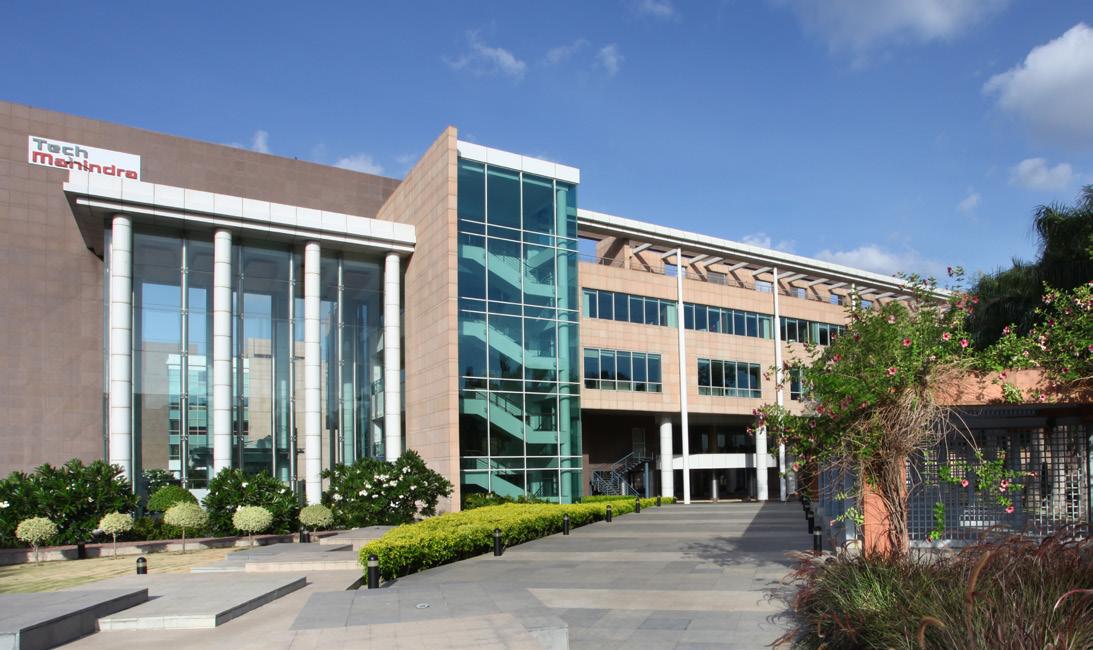
“THE WHOLE IDEA OF LOOKING INTO THE FUTURE DOES NOT JUST APPLY TO MY PROFESSIONAL LIFE, BUT TO MY PERSONAL LIFE AS WELL”
US$1bn in revenue over the next three years and will also co-invest in strategic focus areas including 5G, automation, hybrid cloud, cybersecurity, data, and artificial intelligence (AI).

TITLE: CHIEF INNOVATION OFFICER INDUSTRY: IT SERVICES
LOCATION: MAHARASHTRA, INDIA
Mahindra
Nikhil Malhotra is Chief Innovation Officer at Tech Mahindra and enjoys a fascinating role within the company: to look into the future and ensure Tech Mahindra and IBM explain the true ramifications of technological change for their enterprise clients.
“That is an interesting job, but it's also a job with many responsibilities,” says Malhotra. “The whole idea of looking into the future, trying something new, seeing what can be done to disrupt, all of that does not just apply to my professional life, but to my personal life as well. So this job is ideal for me, because I’ve been doing this my whole life.”
The biggest challenge Malhotra faces in his current role is to be able to explain the details of the technological changes he sees approaching us in the future. “It’s the innovator's conundrum,” he says. “Are you talking sense when you're talking about the future? I think that's the biggest challenge at this point: can you translate the future into something viable for people to see, touch and feel so that they can be inspired by it?”
Nikhil Malhotra is the Chief Innovation Officer and creator of Maker’s Lab, a unique R&D space within Tech Mahindra with 21+ years of experience. Nikhil is also a World Economic Forum AI Fellow working on responsible AI and Quantum ethics. He is leading the growth of AI, machine learning, robotics, and quantum research within Tech Mahindra. Nikhil’s area of personal research has been how quantum computing and neuroscience have inspired the growth of AI and how the two fields can merge in the future. He consults various businesses and academic organisations on the innovative future. He has won numerous awards, including the 2020 and 2021 Innovation Congress awards for the Most Innovative Leader in India category. He holds a Master’s degree in Computing
163,000
Number of professionals served by Tech Mahindra across 90 countries
1,200
Tech Mahindra’s global customers


IBM helps with this challenge, says Malhotra, which makes the partnership very special. “IBM's point of view about the future is very similar to what we have here at Tech Mahindra. You may call it luck, but there is a philosophy match regarding what we've been doing.”
Peter Mark, IBM Managing Executive for Tech Mahindra, leads the partnership in all areas, including building Tech Mahindra skills, client engagements and joint go-to-

market initiatives. Mark joined IBM after university and has spent his entire career in software sales and management roles in Sweden, London and now New York.
“I have lived through our transition from hardware to services to what we are now: a software-led technology company fuelling an open standards-based ecosystem of partner solutions,” explains Mark. “IBM working with Tech Mahindra today makes more sense than ever. Together we are building a Red Hat-based solution factory with IBM and Tech Mahindra technologies to address enterprise client needs on a global scale.”
A self-professed “software guy” and problem solver, Mark says he is a true believer in what technology can achieve. “Problem-solving and innovation with clients that help bridge their past with the future is a
PETER
“WHEN WE BUILD A SOLUTION WITH IBM SOFTWARE THAT RUNS ON RED HAT, WE ENABLE THEM TO DEPLOY THAT ACROSS THEIR CHOSEN HYBRID CLOUD LANDSCAPE”


LOCATION: CONNECTICUT US
Born in Sweden, Peter joined IBM from the field in Sweden to London to IBM Software HQ. Peter was an early champion in IBM for software solutions and value creation with clients, crafted solutions for trading room analytics, bank branch office sales, retail store integration, peter led software sales strategy, shaped the industry best practices, sales acceleration and sales play programmes. Peter led the IBM Software Digital Sales team globally to digital client engagements with partners. Recently, Peter championed IBM’s Edge and Telco Cloud Ecosystem programmes. Today, as ME for IBM, the focus is one Tech Mahindra leading with Red Hat-based IBM Technology solutions.

PETER MARK MANAGING EXECUTIVE, IBM
“WE SERVE A LARGE CLIENT BASE, AND WE OWE IT TO THEM TO SIMPLIFY AND ACCELERATE HOW THEY CAN INFUSE OUR CAPABILITIES IN THEIR WORK”
self-sustaining value proposal,” he says. “This is what IBM has been doing successfully for more than 100 years now.”
In June this year, Tech Mahindra announced the launch of Synergy Lounges, developed in collaboration with IBM and Red Hat. The first Synergy Lounge opened earlier this year in India’s Bengaluru, with a focus on edge, 5G and software-defined networking solutions and an aim to accelerate the hybrid cloud journey of enterprises globally. The launch of Synergy Lounge at Tech Mahindra Electronic
City office in Bengaluru will be followed by the launch of three more centres in London, Seattle, and Melbourne.
Synergy Lounges will combine Tech Mahindra’s design thinking approach and solution concept with hybrid cloud and AI technologies from IBM and Red Hat to develop new offerings for businesses worldwide. These centres will help enterprises address complex business problems and enable them to elevate customer experiences while lowering operational costs, and scaling workforce efficiency across key industry sectors such as Telco, Manufacturing, BFSI, Healthcare,
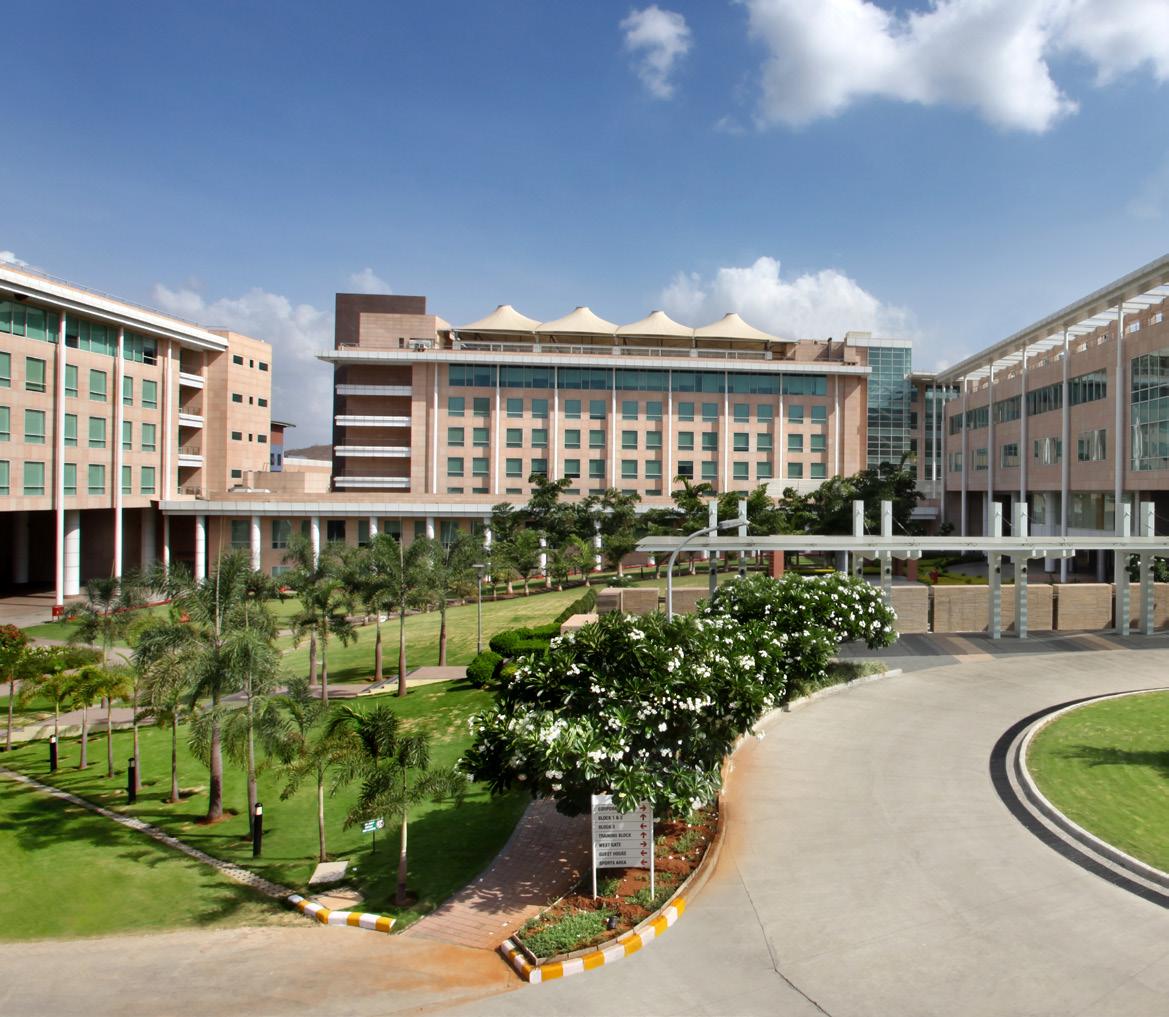
Energy & Utilities, among others. The new Synergy Lounge concept will work in tandem with Tech Mahindra’s Centres of Excellence for multiple business verticals including CME, automotive, and manufacturing, among others.

“The innovation centres will be interconnected across nations to enable a common technology infrastructure and software environment across the globe for new solution development and demonstration. Together, we are building a Red Hat-based solution factory with IBM and ecosystem partner technologies to address enterprise client needs at speed of business
NIKHIL MALHOTRA CHIEF INNOVATION OFFICER, TECH MAHINDRAon a global scale. Our focus will be to provide ready-to-deploy solutions starting now with hybrid cloud resource optimisation, edge asset performance management and cloudto-edge security..
IBM and Tech Mahindra work across a broad hybrid cloud market How to find and act on opportunities is a challenge, but one IBM and Tech Mahindra are ready to address, says IBM’s Mark. “We serve a large client base – Tech Mahindra serves 1,200 clients and IBM has around 4,000 clients on our hybrid cloud platform. And we owe it to them to simplify and accelerate how they can infuse our capabilities in their work.
“When we build a solution with IBM software that runs on Red Hat, we enable them to deploy that across their chosen hybrid cloud landscape. We want to build it once to deploy it wherever clients want to go, whether that is in their data centre or their choices of cloud, or all the way
“IT’S THE INNOVATOR'S CONUNDRUM: ARE YOU TALKING SENSE WHEN YOU'RE TALKING ABOUT THE FUTURE? I THINK THAT'S THE BIGGEST CHALLENGE”

to wirelessly connected enterprise edge locations…and why not all the way into their products and client environments? That is a reality today – they want to do all of that. Red Hat and IBM are working with Tech Mahindra to make that possible.”
This collaboration is in line with Tech Mahindra’s NXT.NOW framework, which aims to enhance human centric experience, and focuses on investing in emerging technologies and solutions that enable digital transformation and meet the evolving needs of the customer.
In the past, Tech Mahindra built its success on the ability to run systems and processes to meet current and future business goals, change systems and processes to accommodate evolutionary change, and grow the business value of clients by delivering differentiators in a saturated market.
But the world has changed with epic events – the pandemic and the advent of technologies such as 5G and quantum computing and new processes using robotic process automation and data science have meant fundamental changes for companies, people and governments.
“Clearly, we have to lead and not follow,” says Malhotra. “We have to design solutions that address what might be the future of healthcare, communications, manufacturing,
distribution, retail, banking, insurance and so on. And that is what we have done, by imagining a future that we can deliver on.”
NXT.NOW has a refreshed three-pillar strategy for clients: Imagine, Build and Run. This allows Tech Mahindra to imagine how clients can benefit from change and then build systems and processes for clients so they can succeed through revolutionary change, with these results running on continuously improved business operations.
NXT.NOW promises to develop bold charters for partners who aspire to be market makers, and deliver end-to-end strategies and advisory services. By meeting emerging tech trends spanning 5G, cloud, human-centred, purpose-driven, connected experiences, Tech Mahindra sits at the centre of what's coming next...now.
“The Tech Mahindra strategy of NXT.NOW is beautiful,” explains IBM’s Mark. “When we do that right, clients know that we are not trying to replace what they have invested in, but rather evolve it into the future.
Technology innovation is at the heart of that, and so is system integration.”

“TOGETHER WE ARE BUILDING A RED HAT BASED SOLUTION FACTORY WITH IBM AND TECH MAHINDRA TECHNOLOGIES TO ADDRESS ENTERPRISE CLIENT NEEDS ON A GLOBAL SCALE”
When fantastical AI innovations come into play, we often tend to focus on the company itself. Here, we look at the Top 10 experts driving the companies
WRITTEN BY: MARCUS LAWWhen we think about artificial intelligence (AI), humans are rarely what spring to mind. And understandably so, as AI is all about machine intelligence and automation.
AI has become an essential business tool, so we often commend the pioneering work of AI companies to support businesses as they digitally evolve. But, what about the people in the company conceiving and creating those innovations?
To shed a light on the importance of people in the creation of intelligent machines, we take a look at the bestin-class executives in the AI field who continue to push the technology –and its boundaries – forward.

Former Senior Director of AI Tesla
With a passion for AI, Andrej Karpathy is interested in training deep neural nets on large datasets. As Tesla’s former Senior Director of AI, he led the computer vision team of Tesla Autopilot, which is focused on in-house data labelling, neural network training, and deployment in production running on custom inference chips. Previously, Karpathy was a research scientist and founding member at OpenAI. He also studied for his PhD, where he looked into convolutional/ recurrent neural networks and their applications in computer vision, natural language processing and their intersection.
 Siebel
Siebel
Following his time as an Executive at Oracle, where he held a number of management positions, American businessman and technologist Thomas Siebel founded his own company, Siebel Systems: a CRM software company that became the fastestgrowing technology company in the United States in 1999. The company was ultimately acquired by Oracle in 2006.

In 2009, Siebel founded C3.ai, which provides an enterprise AI software platform and applications for multiple commercial uses, including energy management, predictive maintenance and fraud detection.

Thomas
CEO and Chairman C3.ai
“A founding member at OpenAI, Andrej led the computer vision team of Tesla Autopilot”
As CEO of AI cyber company Darktrace, Poppy Gustafsson has led the company through significant growth and global expansion. Gustafsson was named Vodafone’s Woman of the Year for Technology and Innovation in 2020, Tech Businesswoman of the Year at the UK Tech Awards 2019 and won the Veuve Clicquot Business Woman Awards 2019. Also in 2019, the CEO – along with Darktrace’s CTO – was awarded an OBE (Officer of the Order of the British Empire) for services to cyber security.
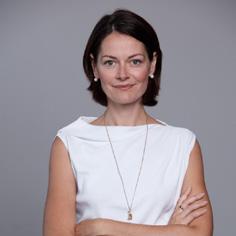 08 07Anna Patterson Managing Partner and Founder Gradient Ventures VP of Engineering Google
08 07Anna Patterson Managing Partner and Founder Gradient Ventures VP of Engineering Google


Anna Patterson is an accomplished AI leader. As a VP of Engineering at Google, she architected the search serving system that increased the index size by over 10x at the time of launch, helped Android scale from 3 million to over a billion phones, launched Google Play, and led the search, infrastructure, and recommendation teams.
Gradient Ventures was launched by Alphabet and Patterson to invest in early-stage artificial intelligence start-ups. Patterson also co-founded Cuil, a clustering-based search engine.
“Gradient Ventures was launched by Alphabet and Patterson to invest in early-stage AI startups”



American entrepreneur Sam Altman is the former president of Y Combinator and now CEO of research and development company, OpenAI. During the COVID-19 pandemic, Altman was keen to aid the global fight against the virus so helped fund and create Project Covalence, which aimed to help researchers rapidly launch clinical trials in partnership with TrialSpark, a clinical trial startup. The CEO is also an investor in many successful companies across different industries, including Airbnb, Stripe and Reddit.




is
His drive in the robotics industry is underpinned by a lifelong quest to create true living, caring machines. To achieve his goals, Hanson integrates figurative arts with cognitive science and robotics engineering, inventing novel skin materials, facial expression mechanisms, and collaborative developments in AI within humanoid artworks through Hanson Robotics. His most famous creation is Sophia the robot, which can engage people in naturalistic face-to-face conversations.


Dario Gil leads the technology roadmap and the technical community of IBM, and is responsible for directing innovation strategies in areas including hybrid clouds, AI, semiconductors, quantum computing, and exploratory science. Under his leadership, IBM became the first company in the world to build programmable quantum computers and make them universally available through the cloud. He is also responsible for IBM Research, one of the world’s largest and most influential corporate research labs, with over 3,000 researchers.
Egyptian American scientist Rana el Kaliouby co-founded Affectiva, a software company that builds AI with an understanding of human emotions, cognitive states, activities and the objects people use. Dedicated to the ethical development and deployment of AI, el Kaliouby is part of the Partnership of AI and the World Economic Forum’s Council of Young Global Leaders, driven by her passion to advocate for standards that ensure data privacy and mitigate both data and algorithmic bias.

Rana el Kaliouby CEO and Co-founder Affectiva Deputy CEO Smart Eye
“Gil is responsible for AI, quantum computing, and exploratory science”
Demis Hassabis has founded a number of dedicated AI companies, including Elixir Studios, DeepMind and Isomorphic Labs. At 17, he joined the computer game company Bullfrog Productions, where he worked as a designer on science fiction game Syndicate. Here, Hassabis was the lead programmer for the highly influential Theme Park, released in 1994, which won the industry’s Golden Joystick Award.


In 2010, Hassabis founded the AI company DeepMind Technologies with Shane Legg and Mustafa Suleyman. The trio began working on AI technology by teaching it how to play old games from the 1970s and 80s, with a goal to create a generalpurpose AI that can be useful and effective for almost anything.
Hassabis attended Cambridge University where he studied for his computer science undergraduate degree, earning a double firstclass honours.
“Demis Hassabis has founded a number of AI companies”







Andrew Ng has had a rich career in the technology industry, including as Co-founder and Head of Google Brain, former Chief Scientist at Baidu where he built the company’s AI sector into a team of several people, and co-founder of Coursera. Now, he is the CEO of Landing AI, a company that supports others with limited datasets to move AI projects from proof-of-concept to full-scale production and realise the business and operational value of AI.

In 2011, Ng led the development of Stanford University’s main MOOC (Massive Open Online Courses) platform and also taught an online Machine Learning class that was offered to over 100,000 students, leading to the founding of Coursera, a US-based massive open online course provider. The British-born entrepreneur is also an Adjunct Professor at Stanford, and has successfully spearheaded many efforts to "democratise deep learning" teaching over 2.5 million students through his online courses.


 PRODUCED BY: GLEN WHITE WRITTEN BY: MARCUS LAW
PRODUCED BY: GLEN WHITE WRITTEN BY: MARCUS LAW

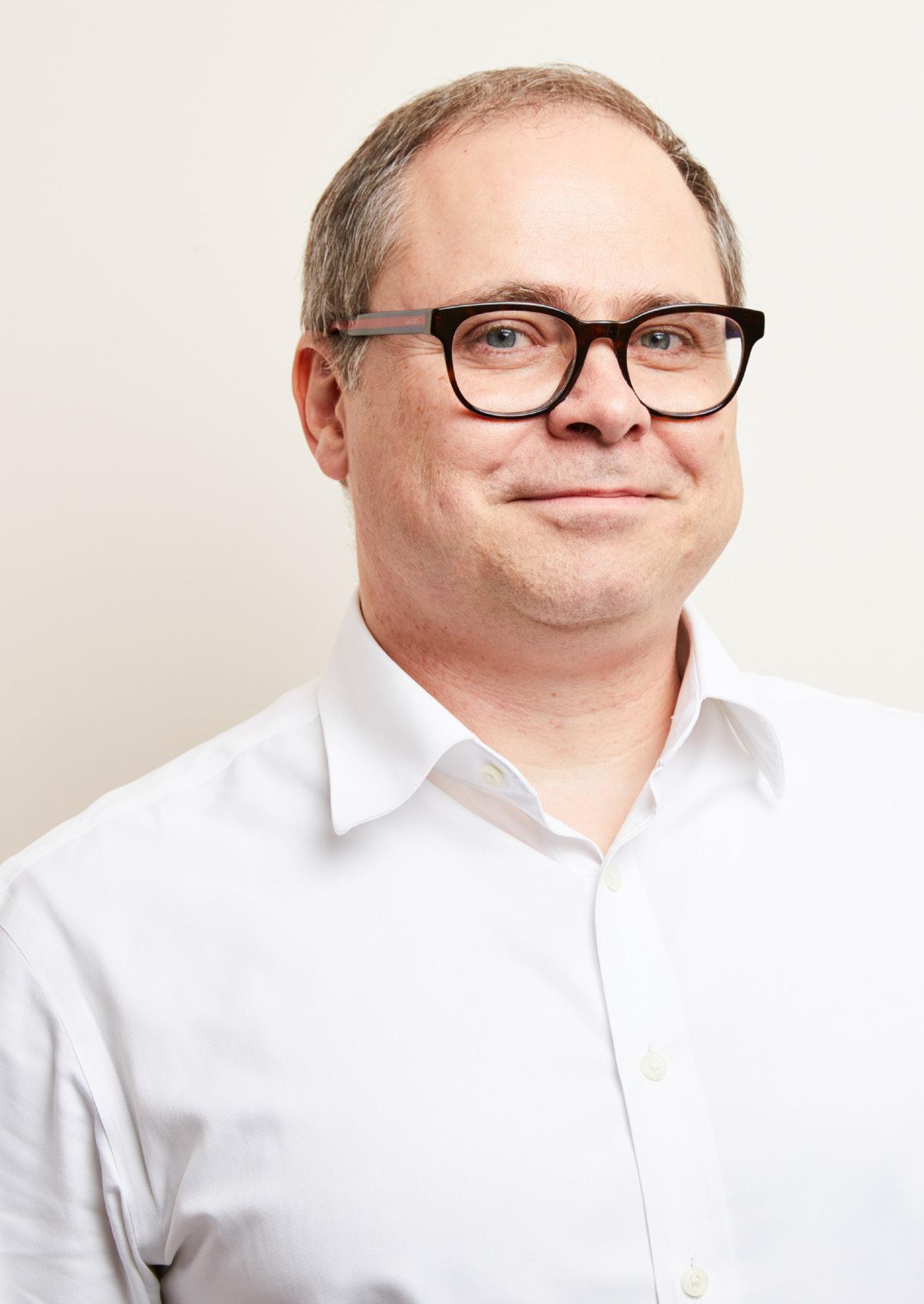
Nowhere is realising ‘the art of the possible’ more relevant at UiPath than in its cutting-edge Immersion Lab, an innovative space demonstrating and exploring the potential for automation.
“It's a place where customers can see what our automation really means in terms of being shown, not just told, because, in many ways, this technology feels rather abstract,” explains Boris Krumrey, VP for Automation Innovations at UiPath.
“We have two missions: one is showcasing ‘the art of the possible’, and the other is to help drive digital transformations by looking at automations from an innovation perspective.”
Having joined UiPath in 2017, he has had a long and varied career in IT, from Accenture to Atos, where he was in charge of robotics and automation, envisioning the future of RPA.
“I realised the future will not be outsourcing standardised processes and reducing cost with labour arbitrage. It is bringing robots to work side-by-side with people, which will revolutionise how people work.”

With the power of automation, UiPath is driving innovative solutions to problems faced by organisations around the world and revolutionising the way people work
By making software robots taking on repetitive and automatable work, from moving files and folders to extracting, copying, and inserting data, humans can be freed to focus on the things they do best: innovating, collaborating, creating, and interacting with customers.
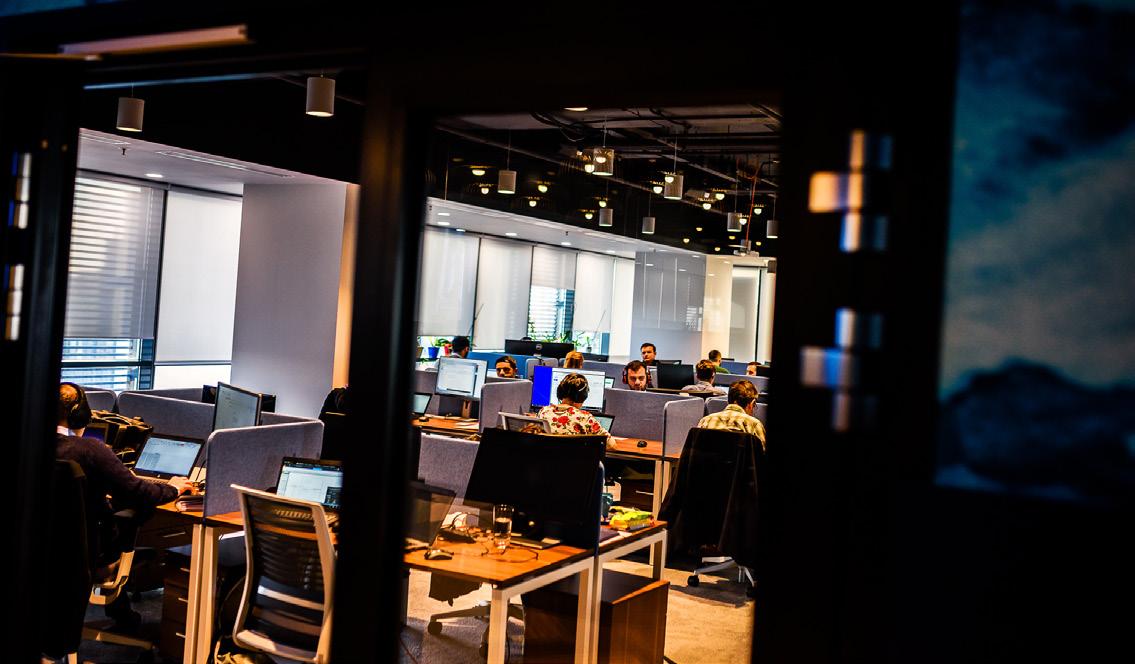
“The key essence of UiPath is that we create software that emulates what people are doing on computers,” explains Krumrey. “Whether you’re a small business or a big business, it doesn't matter: wherever you have to handle data and use it across multiple applications, we automate it in a reliable way.
“Our Automation platform involves utilising AI and computer vision to understand computer screens in the same way as humans do. The robot is now intelligent enough to reliably identify all these objects and avoid interruptions even if something gets changed,” says Krumrey.
“Whether you’re a small business or a big business, it doesn't matter: wherever you have to take data and do something with it, we automate it in a very reliable way”
UiPath: Automating to innovate
BORIS KRUMREY GLOBAL VP FOR AUTOMATION INNOVATIONS, UIPATH “We went beyond RPA by including all phases of the transformation (discovery, operation and innovation).”
Unseen before, the UiPath Business Automation Platform enables non-technical people to create their own automations. This ‘citizen development’ aspect, according to Krumrey, allows individuals to be involved as co-creators in the automation process.
“We saw how people in businesses wanted to drive more innovation from a technology perspective faster and they had to due to the pandemic,” he says. “Our RPA technology was designed to enable those non-technical office workers to create automations or to generate the process documentation whilst they were doing the activity. And that kind of new productivity tool was unseen before.”
Citizen developers play a vital role in helping organisations to scale the technologies that underpin digital transformations. With research by UiPath showing that 86% of employees wish for the opportunity to acquire new skills, utilising citizen developers can take the pressure off automation developers and help organisations scale automation by casting a wider net of automation development.
“If you compare the typical approach – having people sitting together, spending months to create the process documentation until this is implemented –it could take eight or nine months for large companies,” Krumrey points out.
“The benefit of our automation platform is that you can build automations in smaller chunks bit by bit in a shorter development time to realise a complex end-to-end process automation. It is the answer of bringing IT and business operations together in fusion teams to accelerate the digital transformation,” Krumrey adds. “Most transformations fail around the lack of change management. So engage employees
TITLE: GLOBAL VP FOR AUTOMATION INNOVATIONS
INDUSTRY: COMPUTER SOFTWARE LOCATION: UNITED KINDGOM
Boris Krumrey is Global VP of Automation Innovations at UiPath. In his role, Boris is responsible for driving the UiPath Automation Innovation agenda to ‘reboot’ work and make automation at scale a reality for customers and partners. In 2019 Boris and his team launched the UiPath Immersion Labs, both a physical space and a virtual platform designed to inspire businesses to explore new customer and work experiences.
In his initial role as Chief Robotics Officer at UiPath, Boris oversaw the product roadmap vision and integration design of Robotic Process Automation and AI technologies. Prior to UiPath, he led the Automation and Robotics Business for Atos as part of the Global Application Management Service Delivery.
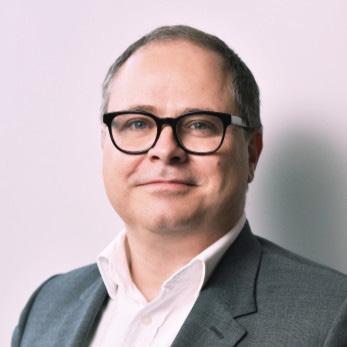

Powering up contact centres with its Conversational AI capabilities, Cognigy is working with UiPath to develop innovative solutions for transforming CX

A global leader in enterprise Conversational AI, Cognigy is hyper-focused on powering up the contact centre to exceed customer expectations, improve agent satisfaction and respond to market changes.
And through a collaboration with UiPath, organisations will soon be able to benefit from the seamless integration between the two platforms, says Philipp Heltewig, Cognigy’s CEO and Co-founder.
Through solutions including Conversational IVR and Agent + Assist, Cognigy supports human agents in handling customer inquiries by monitoring the conversation and providing AI-powered help to the agent in real-time. Among Cognigy’s success stories is the powering of all of Lufthansa Group’s chat-based self-service options, which gives customers the ability to chat with virtual agents employing the power of AI and machine learning.
“These solutions, of course, scale in realtime to meet demand. Contact centres simply can’t go from 1,000 agents to 10,000 agents within five minutes,” says Heltewig.
“However, with our virtual agents, the enterprise has infinite capacity to scale to help customers, without the wait times usually associated with contact centres. As an UiPath advanced technology partner, Cognigy benefits from a native integration between the two platforms,” Heltewig says. “And with a joint robotic call centre automation bundle to be taken to market in the future, it is an exciting time for the partnership.”
“It will be a fully automated robotic call centre service solution that seamlessly integrates Cognigy with the UiPath enterprise automation platform,” he explains.
“And one person we’re working with is Boris Krumrey, UiPath’s global VP of Automation Innovations. He’s a great champion for Cognigy, and we are very glad to be working with him and the team to continue developing innovative solutions for transforming customer and employee experiences together.”
Learn more
with citizen development initiatives or show them ways to generate automation ideas, so that they participate in shaping their own digital future operation. Enabling and up-skilling workers to perform automations themselves will reduce resistance to change in the workforce."

A market leader in the automation space, UiPath benefits from a broad range of functionality, from the integration of APIs to introducing custom-built machine learning models.
“It is really intelligent automation with all the digital tools from discovery, innovation and operation,” Krumrey explains. “You can build web applications, you can integrate and use APIs in long-running workflows. You can embed all kinds of machine learning
– whether it's a custom-built machine learning model, computer vision, or a document – in terms of understanding the type, handwritten forms, the natural language in documents, and extracting information. And now, with our latest acquisition of Re:Infer, we have a Natural Language Processing (NLP) engine that can make sense out of a large volume of unstructured texts in emails or documents.”
Whether in the form of emails, documents, chat logs or social messages, research has found that over 80% of enterprise data is unstructured, meaning that it cannot be easily analysed and used to improve business operations or outcomes. By mining, monitoring, and extracting context and semantics from this unstructured data, messages and documents can be transformed into useful and actionable business data.
When combining Re:Infer with the UiPath Automation Platform, developers can now easily build automations that optimise the customer experience (CX) and operational scalability of contact centres.
“Think about how many situations we have where people send emails as part of a long-running process,” Krumrey adds. “That's immensely powerful if the robot ensures that the needed data is collected and entered into the backend systems without any human intervention. It will address a lot of those customer service challenges as we still very much rely on email.”
Automate to innovate with design thinking Organisations need to think about their overall digital strategy when it comes to innovating with automation. Krumrey explains: “This means that organisations have to anticipate what their future digital operations look like and how the roles and

“We saw how businesses were forced to drive more innovation from a technology perspective when the whole pandemic came”
VP FOR AUTOMATION INNOVATIONS, UIPATH
responsibilities of workers change. Our platform offers all components to support a company's digital transformation strategy requirements whether it is in customer experience or a fully-digitised supply chain operation, optimised finance operations, automated B2B operations, etc. If you include the ecosystem of our Technology Partners then the spectrum of the digitisation capabilities expands even further and delivers a totally new way for companies to interact with their customers.
“Utilising RPA can offer a number of benefits, from streamlining operations and increasing productivity to providing cost savings for organisations,” he observes. “That's often the initial trigger point for many companies to drive the digital transformation, but the actual important ask is: ‘How can I create better customer service?’
“I suggest a design thinking approach,” Krumrey adds. “For example, if you’re a big recruiting agency and you want to reinvent the way recruiting is done, you look at your talent – that's your customer journey - and you look at the recruiter who is the anchoring persona for the end-toend service journey. You break down the journey in phases, identify the operational challenges and develop automation solution ideas to address these. In this way, you cover long-running processes, handoffs, and tasks for automation that assist the recruiter and improve the customer experience for the talent.”
Krumrey believes that with design thinking, we will finally start thinking about automating organisations role by role, instead of running automation programs on a much more granular process-by-process basis. This approach will scale up the digital transformation programme much quicker and engage the individual more effectively.
“We can actually build a robotic twin of, for instance, an accountant and redefine the role as a financial business analyst,” he says. “The heavy leg work of an accountant is now done by the robotic twin covering multiple processes and tasks.”
BORIS KRUMREY GLOBAL VP FOR AUTOMATION INNOVATIONS, UIPATHThe end goals of the automation journey The end goals of automation are clear:
“You are creating a digital automation or digital operation that works very closely with the human to drive it, but you are eliminating all the work with data-thirsty applications”
according to McKinsey, 2.6 trillion hours of work per year are automatable in the U.S. alone. By utilising robots to automate tasks, organisations can make people’s work more valuable and fulfilling and bring more value to the business.

“First of all, you are digitising your operation,” Krumrey says. “You’re creating a digital automation or digital operation that works very closely with the human to drive it, but you are eliminating all the work with
data-thirsty applications. Thus, humans are taking more decisions, while spending less time feeding data into systems. The second aspect is that you are reducing that manual effort, giving back to employees more time for things that bring more value to the business,” he adds. “For example, in customer service, if we can automate the entire email and voice communication for standard requests about order status inquiries or placing an order, then human agents only need to handle the exceptional cases or where people cannot follow the standard procedure. Those cases are then served by a human, while everyone else, who just had a standard inquiry or an order request, gets served immediately by a voice-enabled robot.
“This is particularly critical in unexpected customer transactions of high volume like in the COVID-19 pandemic,” Krumrey explains. “When COVID broke out, a high volume of tickets had to be cancelled. Vouchers had to be created. Imagine the cost and effort involved to staff, who had to handle such a situation with many temporary workers to meet the demands. But if you had automated the processes, then peak volumes can be handled quickly and configured on the automation platform – that's what automation will help to drive. Consequently, customer experiences will be improved, and processes will be running faster and more efficiently whilst providing real-time process data to explore customer
services quality.”
With a technology partner like Cognigy and other conversational AI partners, UiPath is continuing to
develop innovative automation solutions for organisations. One such example was a solution demonstrating the ‘art of the possible’ to one of the biggest airport organisations in Southeast Asia, which allowed customers to book flights and check in through a voice-enabled robotic call centre agent speaking fluently in Mandarin. “With Cognigy, we had a perfect solution, a showcase, where you could book your flight by just calling and talking to the robotic call centre agent in a natural way,” Krumrey elaborates. “Imagine how this can help with all the multi-lingual customer service demands. Now, companies are paying a lot of money for temporary contact centres in countries with lower costs.
“We also developed another interesting use case of reinventing IT support with UiPath and Cognigy in which a voiceenabled robotic call centre agent could assist the end user with a pre-installed UiPath robot to capture all relevant technical configuration data (e.g. network configuration settings, screenshots) and log an IT Helpdesk ticket from the user desktop on behalf of the user,” Krumrey adds.
“Since UiPath has the highest enterprise-level security, especially in combination with the Crowdstrike integration, this futuristic use case is actually safe to realise and offers a totally new way of delivering IT workplace services.”

The future is semantic automation “UiPath solves the big challenge of turning business processes into software and creating a much simpler user engagement process layer that is connected to all the underlying application systems of an enterprise without changing them,” Krumrey explains. “This is what we call the Automation Fabric. The faster and easier we can make it for business users and/or automation developers to build the Automation Fabric, the more we will be able to digitise and innovate business processes. Thus, when the automation platform understands not just the semantics of elements on the computer screen but is able to make sense of unstructured data to intelligently map it to the target application system, then we have found the magic wand of artificial process intelligence to generate the process automation across application systems.
“One could say, AI codes the automation flows connecting end-to-end processes across e.g. SAP and Salesforce with minimal review and guidance by the process specialist,” concludes Krumrey. “That is what we see as the future of intelligent automation. We are calling it Semantic Automation.”

“People are afraid of change. Have you thought about enabling and skilling up your employees so that they can do the small
themselves?”


 WRITTEN BY: JESS GIBSON
PRODUCED BY: JAMES BERRY
WRITTEN BY: JESS GIBSON
PRODUCED BY: JAMES BERRY


Northern Virginia may seem like an unusual location for the HQ of a Middle Eastern and North African-focused broadcasting network, what with its quaint, colonial streets in certain parts and distinctly Georgian ‘Old Town’ vibes in others.
For Middle East Broadcasting Networks, Inc. (MBN), though, it makes perfect sense.
Just a stone’s throw away is Washington DC, the capital city of the USA, which also happens to be the home of some iconic institutions: the Capitol, the White House and the Supreme Court. MBN, as a grantee of the US government and part of the US Agency for Global Media, therefore situated close to the centre of government while also sitting at the lip of the nation’s rim, pouring its influence into the Atlantic ocean and beyond.
Though headquartered in the US, the primary recipients of MBN’s television and radio programming and news sites live in the MENA region – the Middle East and North Africa – the very people for whom Middle East Broadcasting Networks was created, with the purpose of sharing honest, accurate and unbiased news about their own countries and the US.
In addition to the entirety of the Middle East, the North African region that forms part of MBN’s broadcast remit consists of the following countries: Algeria, Egypt, Libya, Morocco, Sudan, Tunisia, and Western Sahara.

MBN’s CTO Mike Marno shares the broadcasting network’s overarching mission, the tech changes enabling it, and pivoting for a new generation of media


“MBN is a 24-hour, seven-days-a-week, live news service. We are the only one within the USA and our target market is specifically the MENA region, across 22 countries. And when I say North Africa, I mean the seven African countries in the north of the region, all the way over through Egypt, the northern coast from the ocean over across the Mediterranean,” explains MBN’s Chief Technology Officer, Mike Marno, who’s a veteran of the media entertainment industry, having worked in it for around 33 years.
A wholly-owned, not-for-profit service, MBN currently comprises two television networks, a radio station, and several digital news sites, each providing an insight into the reality of Americana and American politics, which are often misrepresented the further afield you go. These media outlets also focus on in-depth analysis of topics otherwise maligned by traditional Arab media outlets, for the purpose of encouraging transparency and democracy.
And the creation of Radio Sawa back in 2002, followed by the television station Alhurra in 2004, was nothing short of revolutionary.
The Millennium arrived with a bang – as did a new technological dawn.
And with this came increasingly sour relations between much of the West and Middle East, which, while fluctuating over the previous two decades, had reached a new low. This culminated in the catastrophic events of September 11th, 2001, and the consequent US-led coalition’s occupation of Afghanistan that same year and Iraq in 2003, only a decade or so after the Gulf War had liberated Kuwait from Iraq.
As you can imagine, there were simmering tensions on both sides that contributed to fear, lies, and nationalist or religious propaganda via news services and media outlets; counteracting these narratives was essential.
Marno therefore summarises MBN’s mission as being “to provide accurate and objective coverage on, and to, the MENA region about Americans and American policy, with in-depth analysis focusing on topics not covered by other Arab media and providing an alternate viewpoint”.
The aim was – and still is – to counter perceived anti-American bias peddled by leading Arab and international networks, while giving those living in the Middle East and North Africa a voice.
“A lot of Arab folks that are in a competitive position to us are actually state entities. And, being in that media space, a lot of them are told what to say, as well as when and where,” Marno says. “On one digital platform, we actually have something called ‘Raise Your Voice’, which is an Iraq-specific programme and piece of content where people can post their own opinions; Iraqis themselves say it's one of the only places that they can freely express their opinion.
“So, in that respect, that's an example of what we do: we provide accurate and objective information – and, unfortunately, I say ‘accurate and objective’ because a lot of other media here isn't.
“We have a firewall between us and our government, which is not necessarily the case with a lot of our competition. And we like having an alternative opinion, because much of the Middle East’s media is very selfserving, in that they give you the message that they want as opposed to having alternative viewpoints.”
In addition to the ‘Raise Your Voice’ programme, MBN invests time and money into cultivating programmes that provide an honest depiction of life in some of these far-flung countries, while offering inhabitants the opportunity to engage with uncensored media.
Michael Angelo Marno began his television and technical career as a bench technician repairing professional video tape machines and cameras. It was through that experience that he decided to make broadcasting his vocation marking the start of a very long career touching every facet of the industry.

Witnessing the evolution of technology from the inception of Sony’s professional Betacam “SP” format in 1986 through todays SMPTE 2110 standard, cloud and streaming technology as well as the evolution of the broadcast facility from a traditional linear signal chain into what now looks more like a data center.
Having launched several television channels and commercial streaming platforms, Today as CTO of Middle East Broadcast Networks Michael is at work morphing the network’s brands into a truly IP and cloud based international news network.

 Erik Balladares, Vice President, Broadcast & Media Division at Rohde & Schwarz, says broadcast clients can have the best of both worlds with Cloud services
Erik Balladares, Vice President, Broadcast & Media Division at Rohde & Schwarz, says broadcast clients can have the best of both worlds with Cloud services
Headquartered in Munich, Germany, the Rohde & Schwarz technology group is a global trailblazer when it comes to paving the way for a safer and connected world with its leading solutions. Founded in 1933, the group develops, produces and markets a wide range of electronic capital goods. In the broadcast and media market, the company has been a leading technology innovator for more than 80 years and provides technology for live studio production, premium post-production, playout delivery and distribution.
Erik Balladares is Vice President, Broadcast & Media Division at Rohde & Schwarz, and manages the company’s media business across the globe and its broadcast and media business for North America. He explains every project is assessed so that
Rohde & Schwarz can fully understand the customer’s goals and the best way to meet these with the right combination of technology and services.
“It makes sense to have on-premises hardware in some cases,” says Balladares. “Typically, when we have high-performance environments with uncompressed workflows - at 4k or even sometimes 8k resolution - it can be quite difficult to move that content back and forth to the cloud, especially if they want a quick turnaround. So in those cases, an on-prem solution really makes sense. But in other scenarios where we’re dealing with compressed workflows, then it really makes sense to deploy into the cloud where possible. So we work very closely with our customers during the initial process and project discussions and really determine what makes sense for their project.”
“At the minute, our main office in the area we serve is our Dubai office in Dubai Media City,” Marno establishes. “It’s the Reuters building, where Roadie Shorts is located, too.”
“Due to the depth and number of projects that we have going on, retooling a global organisation for us is happening in four phases. Now, actually, we're doing the second, third, and fourth phases simultaneously.
“We're building in Springfield, we're building in Jerusalem, and we're moving to an MBN-owned leasehold in Beirut, all simultaneously, while also doing a global 2110 project, which we call the technical infrastructure upgrades.

“As well as doing a massive UPS upgrade in the Springfield office, we’re building an IP-based OB vehicle, and building about 300 nodes of virtualised desktop infrastructure. We’re in the planning phases for that currently, in support of a post-pandemic remote workflow, as well as making us a much more agile organisation, from a news gathering point of view.
“And that's not even in holistic terms. We just got a new facility in New York that needs to be stood up, and we're moving the facility in Washington DC, which is in the 400 North Capitol building, right across from where NBC, c span, and Fox are.”
“MBN is a 24-hour, seven-daysa-week, live news service. We are the only one within the USA and our target market is specifically the MENA region, across 22 countries”
 MIKE MARNO CHIEF TECHNOLOGY OFFICER, MBN
MIKE MARNO CHIEF TECHNOLOGY OFFICER, MBN
“We have the Lebanese scene, which is a show that talks about Lebanon and life in Lebanon. We have the North Africa show, a show on the grid currently that will probably expand once we rebuild the Tunis bureau. We're also creating a US unit that will be multimedia journalists giving Arabs globally a view not only of Americans, but of the Arab experience in America,” Marno says.
Changing world required MBN’s threefold transformation
Prior to the 2020 COVID-19 pandemic, many companies, organisations, charities and not-for-profits had started to become aware of the necessity to overhaul company tech and digital processes, making moves to incorporate new digital pathways. For MBN, which began its own digital transformation around four years ago, the process consisted of more than one strand.
“MBN’s evolution is threefold. One is taking legacy technologies, which, four years ago, still included analogue, and bringing them all the way up to current states, meaning that ubiquitous technologies –like IP and network infrastructure, bonded cellular, cloud-based, (whether hybrid or completely cloud-based), and virtualised desktop infrastructure – are future-facing,
scalable and possess more of a predictable operational model than a hardwarebased model,” Marno begins, outlining the technological infrastructure required to cascade through the entire organisation to enable a full digital transformation.

“The second is realigning the people organisation, in terms of both the content requirement as well as the skill sets required for those technologies. And third is taking a look at how news is actually consumed, how people watch news – demographics are part of that. Now, in excess of 50% of the MENA region is under 40 years of age.”
Across the globe, the result of a “diminishing older, traditional broadcast viewer demographic” has meant that the audiences consuming news are increasingly searching for news soundbites instead of long-form content – with this movement led primarily by Millennials and Gen-Zers, whom Marno dubs as “very vignette-centric, very snippet-centric, and very social media-centric”.
“The news consumption audience is getting younger and, as a result, they're consuming it in a different way. So, we did the technical organisation, then the people organisation,
“We actually have something called ‘Raise Your Voice’, an Iraq-specific programme where people can post their own opinions; Iraqis themselves say it's one of the only places that they can freely express their opinion”
and the final part of that is to have a ‘digital media first’ approach to all of our buildings. Network infrastructure is everywhere and requires a very widespread skill set, leveraging both the efficiency and low latency of those technologies to deliver content.
“And being able to simultaneously deliver that content to all the different platforms, as well as to a much younger audience, while encapsulating and formatting that material in a way that's meant to cater to this audience, is essential to MBN remaining competitive,” he explains.
A core part of MBN’s transformation process has been extending its outreach as “an audience growth strategy”, which means establishing offices and broadcast hubs in other MENA-based countries, as well as in Europe.
“We're in Morocco, Tunisia, Lebanon, Cairo, Beirut, Jerusalem, Dubai, Springfield, New York, and Washington DC, and that's just our own hard locations, a list that doesn't include all of the countries – Paris, Brussels, London, as examples – in which we have crews or utilise third-party resources to do coverage,” Marno outlines, hinting at just a fraction of the broad reach MBN has across the globe.
Ultimately, this reach should enable MBN to challenge and outperform its industry counterparts, most of which are stateowned subsidies, thus subject to restriction and censorship.
“We will still offer the traditional broadcast medium for the traditional viewer while ensuring our new technology platforms are agile – this goes for both radio and broadcast,” says Marno.
“As an example, we're building a digital radio platform to replace the FM

Though true across many industries, it’s particularly so that, in the media entertainment and broadcasting industry, building strong partnerships is essential. Not only does it help open doors to potential projects and collaborations, it enables the dissemination of vital equipment and tech to stand out of the crowd and receive new opportunities to expand reach.
Marno says: “Partnerships offer expertise and global support, as well as the particular solutions that we need to be future-facing and scalable. They offer the ability to adapt and change, and then make all of those things work together.
“They have to work with each other as well as work with us to make sure all of that stuff plays well in the sandbox together, if you will.”
In other words, it can be the difference between success and failure.
infrastructure for Radio Sawa. Additionally, we're making sure that all of our broadcast platforms can now publish to all social media platforms simultaneously as we publish the broadcast product to news.”

Though Marno states that MBN will continue to offer traditional broadcasts for traditional consumers, he is acutely aware of the importance placed on proffering alternative, censor-free media to tightlycontrolled countries via a digital-first mandate. This not only guarantees that fewer in the MENA region will be regularly subject to sensationalist, factually incorrect information about the US as well as their own governments, but it will also equip MBN with “the technologies and the modalities”
that give it an all-important competitive edge over “those whom it chooses to position itself against”.
“And, by ‘those we choose to position ourselves against’, I mean those who we consider our competition in the Middle East media and news space – the Al Jazeeras of the world, AMIN, Middle East Media Network, Arabian Gazette, Sky News Arabia, CNN…and that actually includes some state entities, as well,” Marno establishes.
Digitalisation has so far consisted of MBN migrating slowly onto cloud-based technologies, “going from a traditional base band broadcast modality to adopting IP workflows and file-based workflows on a phased-in basis” as it builds, “utilising
the facility and capability of cloud-based services to be a more agile, more real-time news organisation”.
To put this aim into action, MBN decided to utilise Amazon Web Services’ (AWS) cloud capabilities, partially due to the large suite of products it has available.
“When we started this process, AWS also had the best existing integration, meaning they had current existing integrations with folks like Dell. They were furthest along at the time, in my view, for IP-based media services. And they were very easy to work with to create what's known as a VPC – virtual private cloud – within the AWS ecosystem, such that it allowed MBN to build a global, internallymanaged network on the AWS backbone.
MIKE MARNO CHIEF TECHNOLOGY OFFICER, MBN“AWS did that by carving out space for us in a lot of their data centres, using the physical hardware that they have to create virtual environments. We had a very large account team that basically ‘shepherded us over the shoulder’ to allow us to understand how those VPCs were created, how to build them, how to maintain them, and so forth. They also had availability zones in the regions where we were, so they had the best geographic availability for our needs at the time.”
As older audiences diminish in number, it’s critical to simultaneously “capture and build younger audiences” so that they can grow with you, direct your output, and remain loyal. A core element of this relates to streaming, the use of social media and digitised media organisations, all of which are on the rise.
“As an old guy, what I know of that has been the broadcast industry – in terms of equipment and workflow, as well as skillsets – is in its sunset. Broadcasting will be much

“We will have digitalcentric programming that's not available on the traditional broadcast product: vignettes, podcasts, long-form content, and short-form headline-type news”

more short-form and social-media-centric, so it will be much more influencer-based. There will still be a component of live television, though that will not be the primary focus, but the primary focus will be on content for social media platforms and that style of consumption.
“So, everything that we're building now is in support of being able to deliver content in a non-traditional way, meaning via satellite to a subscription service or receiver and specific channels to multiple outlets that are social media-based or radio-based, all on digital platforms.”
Existing platforms such as Twitch (traditionally gaming-based), Discord, Facebook and YouTube have already preempted these trends by pivoting to integrate live, short-form content that can be news, entertainment, or education-based. Traditional media companies now need to follow suit to remain relevant – so it’s a good job MBN began this process a few years ago, before competition had clocked on.
“What we eventually would want to do is have a reporter out in the field, reporting live to multiple social media platforms at the same time as a news service. That's what we're gravitating towards, which means the tool sets can be as simple as an iPhone all the way up to very expensive, high-res equipment, depending on what we're doing.
“The visceral impact for people is that it sets us apart, so it’s where the virtual and extended reality technology is coming in,” Marno says with enthusiasm, acknowledging the ways in which MBN can now hook audiences’ attention.
As previously noted, part of MBN’s ongoing digitalisation strategy is to have more
than just Dubai as an additional point-oforigination for programming.
“So we'll be doing live content in all of the bureaus that we're building, and we're working on a new leasehold in Jerusalem to move and rebuild that bureau.
“I have a bunch of travel coming up in November, where I’ll go and evaluate each of those locations, creating requirement documents so that we can procure the architect, the construction, and the integrative services needed. All of that will be part of the 2023 and 2024 calendar year.
“Eventually, we'll get to adding those additional locations – we currently have three studios in Springfield and the main news studio for the Pan-Arab feed, which has a primary and secondary news set.”
Aside from new technology and locations from which to work, what else is on the agenda for MBN’s future success?
“Well, much like some of the cable outlets, we will offer up our 24-hour, seven-days-aweek broadcast streams to the website and to social media.
“But we will also have digital-centric programming that's not available on the traditional broadcast product, which will be published live as vignettes, podcasts, longform content, and short-form, headline-type news, as well as giving people in the region that we serve the ability to freely express themselves, much like with ‘Raise Your Voice’,” Marno concludes, remembering the core philosophy behind MBN: the freedom to see, hear and challenge unfiltered points-of-view and opinions from a range of perspectives.
And, in our contentious world always on the cusp of some conflict or another, there’s little that’s more essential to personal freedom.

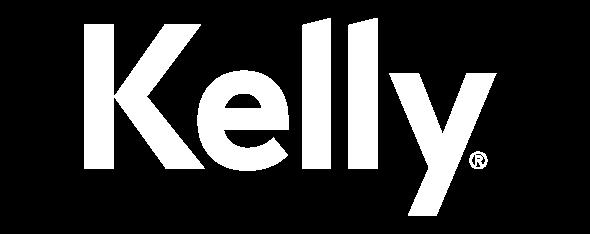


 WRITTEN BY: TILLY KENYON
WRITTEN BY: TILLY KENYON
Celebrating 76 years in business, Kelly Services is a global recruitment company on a mission to connect people to jobs that enhance their lives.
Over the past two years, the COVID19 pandemic has accelerated digital transformation across most businesses, which has meant the creation of new revenue streams and business operating models. Enabled by technology, these have the ultimate goal of transforming both the customers' experience and the operating model. But many companies have been so focused on the word digital that sometimes they, in fact, forget the key word: transformation.
Alexandre Kozlov, Head of International IT at Kelly Services, talked to us about how he joined Kelly Services with a mandate to develop and execute a new IT strategy that would enable future business operating models and support business growth.
“When the company hired me, I was tasked with putting out some fires around key applications. But I quickly realised that it was not about a particular application, it was more about the business/IT alignment and overall fit between the strategy and portfolio. It was clear to me that the old IT operation model and portfolio was not fit for purpose for the long-term business strategy and objectives,” he said.

As Kelly Services helps to connect people to companies, Alexandre Kozlov explains how the company embarked on its digital transformation journey

People used to insist on having everything in-house and close to their chest, explained Kozlov. Over time, as technology and the IT industry have matured, people are realising that this approach is not really serving the business in the long term.
According to Kozlov, there is not much added value to custom develop or heavily customise acquired applications as both market and business demand are changing rapidly.
ALEXANDRE KOZLOV HEAD OF INTERNATIONAL IT, KELLY SERVICESHe explained that Kelly’s application portfolio built on cloud and APIs allows to experiment and quickly implement new solutions. If a company sticks to standard functionality of applications, it is much easier to replace the module A with the module
A 2.0 or module B from another vendor.

Joining the company in 2018, Kozlov’s objective was to differentiate Kelly Services from the competition with a unique user experience for candidates, clients, and employees, delivering solutions that enable and support standardised processes, and rationalise a portfolio of local solutions around the globe.
Shortly after joining the company, Kozlov conducted research in one of Kelly’s key markets on the activities and tasks performed by recruiters. It turned out that recruiters were spending more than 60%
“RIGHT FROM THE START, I PAID PARTICULAR ATTENTION TO BUILDING PARTNERSHIPS WITH OUR STRATEGIC VENDORS, WHICH PAID OFF DURING THE IMPLEMENTATIONS”
of their time in Outlook. That is, rather than searching for candidates and talking to them, recruiters were busy typing emails and managing their inboxes and calendars.
This spurred Kelly Services to start its transformation journey. In response to its findings, the company came up with a series of business modelling workshops, with the objective to design a future operating model that should be in place in three years.
It took the company 18 months to complete the whole programme – from the first modelling workshop until the last go-live in the 15th country. When COVID pandemic hit, it was right in the middle of the implementation.
“Today, your network is the internet – it's global. People tend to work from their home, PCs, private laptops or even mobile phones. This means that IT organisations need to tackle all those devices. It becomes very dynamic, very complex, but I would also say, at the same time, very exciting because you have so many new opportunities, new ways of doing things, new things, and new ways of working that it's amazing,” said Kozlov.
With the onset of the COVID-19 pandemic, business processes needed to be changed quickly, along with the IT solutions that were supporting those processes.
“There was a big emphasis on cloudbased solutions, but our approach was not
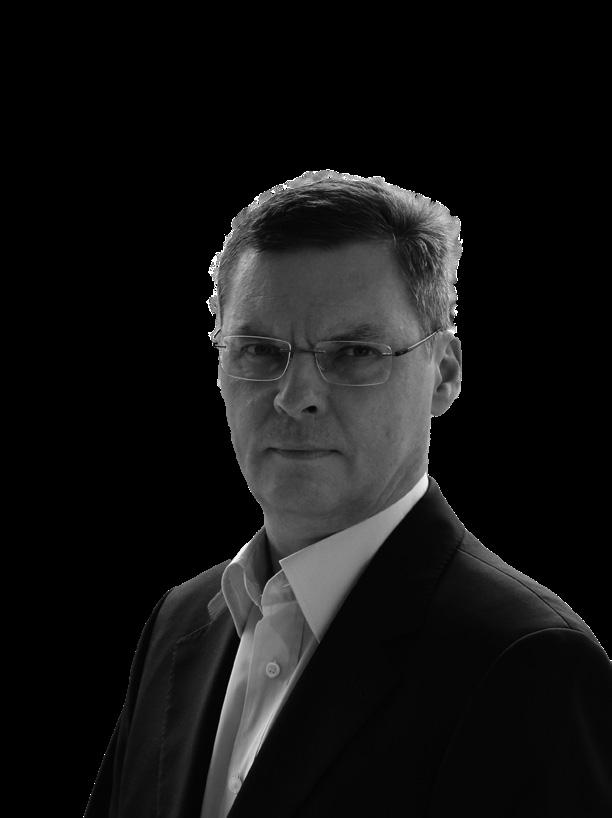
TITLE: HEAD OF INTERNATIONAL IT INDUSTRY: STAFFING AND RECRUITING LOCATION: LAUSANNE, SWITZERLAND
Alexandre Kozlov has 20 years of broad senior IT leadership experience in leading international IT organisations in Fortune 500 companies. He has worked in multiple industries and is viewed as both business and IT leader. Kozlov created and successfully delivered businessfocused IT strategies that transformed overall business operating models and facilitated growth and innovation. He has initiated and led several successful global digital transformation and business/IT re-alignment programs. Kozlov was instrumental in building
Direct digital transformation investments will accelerate to 16.5% CAGR 2022-2024 becoming 55% of all ICT investment by the end of 2024.
To find the right people for your next global rollout, speak with HSO International here.


Kelly powers the success of organisations through innovative, tech-enabled workforce solutions. They’re obsessed with finding new ways to engage specialist talent across life sciences, finance, technology and other industries, empowering people and businesses to build what’s next.
at borders and pass off to a new team. HSO can implement in each country with the localised expertise needed to follow legal and statutory requirements. Working with a strong template-based approach to reach the goal of alignment, HSO started in Denmark and has now successfully rolled out to 10/15 countries.
As a specialised, global workforce solutions business, aligning and standardising internal finance processes was crucial to their business transformation. They needed a reliable partner, who could work with their team to implement a new system across 15 countries, keeping things as standard as possible in accordance with group policies and accounting principles while complying with each country’s legal and statutory specifics. Kelly stayed true to form and connected with the right people for this job, HSO International.
Kelly came to this project with a clear vision and a strong idea of how they wanted to work. They were looking for a multi-country rollout of a new finance system that was standardised across geographies. They also wanted a true partnership.
Multi-country rollouts are what HSO does. With a global presence and practice, they do not need to stop
Customisations were kept to a strict minimum, only high-impact developments that could be used across multiple countries were permitted, thereby keeping to the goal of standardisation. Where developments were made HSO worked within Kelly’s framework. HSO were responsible for designing the solutions and Kelly’s internal team executing the development, reaching out for support where needed.
HSO is a Microsoft Dynamics Inner Circle partner, with more than 30 years experience. They are large enough to serve, small enough to care. They are here for you on your unique transformation journey.
 LEARN MORE
LEARN MORE
to put all our bets on the cloud. We say we don't go cloud first, we go cloud smart –in other words, considering where a cloud solution would really make sense and would benefit the business side.
“Unfortunately, I very often hear that my IT colleagues from other companies are still looking at the cloud as a costcutting opportunity. But, in my view, this is fundamentally wrong. Of course, it's good to cut costs, but you should really explore the cloud to deliver new features and new capabilities to the business, and not always just to simply save,” explains Kozlov.
According to a report by BCG, companies can save around 15-40% on infrastructure costs by migrating to the cloud. For some companies, the savings can be even greater. With these statistics in mind, it’s no surprise that Gartner’s research found 95% of data
workloads will be hosted in the cloud by 2025, up from 30% in 2021. It also predicts that over 95% of businesses will use cloud computing by 2025.
Touching on the importance of technology, Kozlov discussed how, without technology, businesses probably could not operate. We are no longer in the era where CVs are sent via post, today it is all automated.
“Today, you even have companies where video interviews are conducted with robots, not a person, especially at the beginning of the hiring process. Something that is not so visible to the external world is that we have quite a big explosion of various analytics stores. We utilise these at the backend when we analyse our candidate database when we look for the best match between a job offer and existing candidates. We also try to forecast how the market will
“WE
go, in what direction, the kind of job roles and opportunities in a given sector, and then try to prepare it on our side. Without technology, you cannot do this.”
As the technology proliferation in all industries grows, there’s also an increasing demand for employees with IT skills. Looking back to just a couple of decades ago, according to Kozlov, literacy was the absolute ‘must’ to be employed, but today companies are looking for IT-savvy professionals for non-IT functions, such as Marketing or HR.

Establishing strategic relationships with vendors Kelly Services connects more than 1 million people with work opportunities via its global network, and partners with 90 of the Fortune 100 companies. Kozlov himself
ALEXANDRE KOZLOVhas been paying particular attention to building partnerships with the company’s strategic vendors.
“Right from the start, I paid particular attention to building partnerships with our strategic vendors, which paid off during the implementations. We selected a new ATS platform and utilised its marketplace partners to build up a comprehensive front office suite. We partnered with several
HEAD OF INTERNATIONAL IT, KELLY SERVICES
“WE TRY TO FORECAST HOW THE MARKET WILL GO, IN WHAT DIRECTION, AND THE KIND OF JOB ROLES AND OPPORTUNITIES IN A GIVEN SECTOR”

vendors to build our new country websites and job boards.”
As they began utilising new, more advanced tools in searching for and matching candidate profiles to job specifications, Kozlov recognised that the recruiters’ productivity notably increased. Some of the new tools use AI technology for sourcing candidates and finding better matches.
For the back-office solution, the company partnered with HSO, where together they have jointly developed the core of the solution and are now rolling it out across the globe.

“We established a strategic relationship, where we engage, share our strategies, and align roadmaps with HSO. So far, we have successfully delivered on all of our projects, and we look forward to continuing to work with them.”
From Kozlov’s perspective, it’s important to be on the same page as the vendor, and he noted that Kelly Services has regular meetings with HSO where the two exchange strategies,
“WE
WHICH WE ENGAGED, SHARED
ALEXANDRE KOZLOV HEAD OF INTERNATIONAL IT, KELLY SERVICES

choose which directions they plan to go, and look for ways they can help each other.
Looking to the future, Kozlov believes there will be a wider usage of AI-based technologies to help with tasks such as matching candidates and handling CVs.
“There will also be proliferation of these technologies at the back end for companies. They will try to look into data that’s available to them while marrying this data with some external sources of information to understand trends and potentially even predict some emerging trends so that they are better prepared to react to coming market changes.”
He explained how the beauty of digital transformation is that once you start this journey, you’ll probably never finish it, though not in a negative way – it's more of an excitement of what is to come.
“We continue looking at the opportunities where we can deliver new services to our candidates and clients. We position ourselves as a specialty staffing and recruitment company. Here, we see many opportunities in moving forward as the
market is also very dynamic. Overall, I see great opportunities and I would say that the usage of technology and importance of technology will only increase.”
In regards to Kelly Services’ continuous digital transformation, Kozlov concluded: “First and foremost, we will continue our digital transformation journey. We want to offer new opportunities to our talent that match their individual skills and career aspirations, and provide new services to our clients when choosing specific needs. It's become a little bit more complicated in the more volatile world of today, but I think we have great technologies that will help us to overcome those obstacles and deliver on our business commitments.”
“TECHNOLOGY ALONE DOES NOT TRANSFORM COMPANIES – IT IS BUSINESS PROCESSES CHANGE THAT TRANSFORMS COMPANIES, AND TECHNOLOGY MAKES IT POSSIBLE AND SCALABLE”


 PRODUCED BY: TOM VENTURO WRITTEN BY: MARCUS LAW
PRODUCED BY: TOM VENTURO WRITTEN BY: MARCUS LAW
How healthcare providers offer their services has changed. As more services are based outside of traditional bricks-and-mortar settings - particularly in a post-COVID world - the use of technology is vital to bridge the gap between patient and provider.
Based in the greater Grand Rapids area, the second largest metropolitan area in Michigan, University of Michigan HealthWest serves more than 250,000 patients annually. The jewel in its crown is a 208-bed hospital that sits on a healthcare village, where patients are able to connect to multiple different services, including patient-centred medical homes for primary care services across the community.
Over the last 16 years Joshua Wilda, Chief Digital Information Officer for University of Michigan Health-West, has seen the organisation grow and become more strategic as it expands.

“When I first joined, we were the smallest healthcare system in the Grand Rapids area,” Wilda says. “We were up against some very big, nationally-known healthcare systems. And our goal was always to provide choice in the market to drive quality better, to drive care better.”
Having recently affiliated with Michigan Medicine in Ann Arbor, Michigan and rebranded, University of Michigan HealthWest is continuing to expand its services.
From helping provide the best experience for patients to automating processes to save medical staff’s valuable time, IT has a crucial role in healthcare

“We've started to grow as an organisation, not just to provide basic care models, but now we've grown into a comprehensive stroke centre,” explains Wilda. “We've grown into a centre of excellence for orthopaedics and neurosurgery. We just recently did our first open heart surgery. We never had an open heart programme and now we have that programme.”
With around 20 outpatient centres as well as surgical centres that are providing


care in communities, the organisation is rooted in community care.
“Our mindset was always we want to be where the patients are, as opposed to always having the patients come to us,” adds Wilda. “We're a smaller organisation in the healthcare industry, but we do a lot of big things, especially technically. And the only way that we're able to do it is with the intimate family feel that we have within our department.”
“We're a smaller organisation in the healthcare industry, but we do a lot of big things, especially technically”
Healthcare IT: Bridging the gap between patient and provider
According to Wilda, the organisation’s vision statement, ‘Our Innovations Change Care and our Care Changes Lives’ shows how it is trying to take advantage of new innovations coming out to change how care is provided.
“How we provide care, different care team models, what are innovative ways that healthcare needs to change and we're providing that to our community,” says Wilda, who describes how healthcare IT is
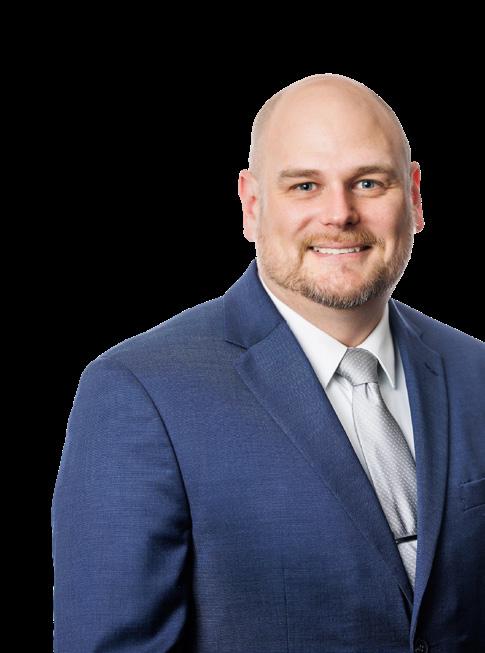
INDUSTRY: HEALTHCARE LOCATION: MICHIGAN, USA

Passionate, positive, and dynamic leader with 16 years' experience managing and improving the delivery of healthcare in acute care ambulatory and inpatient settings. Strong executive skills combined with a deep understanding of operations and effective project management. Proven successes in developing and communicating strategies to meet clinical and business goals and objectives, implementing operational excellence, enhancing quality care through process improvement, providing strategic value and direction and leading diverse teams. Passion for building motivated leaders and teams using front line leadership tactics and institutionalizing Design Thinking methodologies with Positive and Coach Leadership principles.
Core Areas of Expertise in: Leadership and Culture Development, Information Technology, Innovation and Services, Digital Health, Healthcare Operations and Finance, Lean/Six Sigma. Strategic Planning and Project Management



crucial to a healthy relationship between provider - the organisation - and the patient.
“We actually have a strong mission and guiding principles in our IT group,” he says.
“We have five pillars of strategy for this organisation. One of them is to be leaders in digital health, meaning that we want to use technology to bridge the gap with
patients when they're not able to be here in our four walls.
“When they're in new care settings, like at home, long-term care facilities, even on vacation, how are we using technologies to still embrace our culture, to still bridge that gap between patient and provider?”
“One guiding principle that's near and dear to our hearts is the word techquity, and how our technologies now increase capacity and access to healthcare in all demographics of patients.”
As Wilda explains, technology can enable the automation or streamlining of workflows, allowing healthcare staff to focus on their roles, to provide the highest quality to our patients, rather than on administrative tasks such as data entry.
“Doctors are the highest paid data clerks, Medical assistants can't have their entire

“Implementing Tavoca and the different platforms that they're able to provide to us, we actually dropped our no-show rate by 5% within the first three-to-five months of using that system.”
attention on patients because they're always entering data or trying to find data,” he adds.
“We're looking at how our technologies either help automate or streamline clinical and business workflows so, as humans, we can spend more time connecting with our patients and with our community. And that's key for us, leveraging the technology to drive that connection as opposed to leveraging technology to reduce connection.”
How the organisation manages its digital transformation strategy is critical, to ensure
all the areas of the organisation see the same benefits of seamless technology, explains Wilda.
“We want an experience for our patients, providers, all of our customers, to be one that's seamless, one that they don't feel handoffs between technologies in either the care pathways or business pathways,” he comments.
“Platform technologies allow us to even be more interoperable with what we provide. They might not be the best in a single system approach, but the overall experiences are even better for our end users.”

Another core guiding principle is partnerships with business units and clinical units, Wilda explains.
“We really take strong pride in taking more time in bringing in subject matter experts within our organisation regarding whatever technologies or problems we’re trying to solve,” he adds.
“We also have a patient advisory council for digital health where we have a subset of our community as a volunteer base. We meet with them on a quarterly basis. We show them our technical roadmap, we talk to them about the solutions that we're coming up with, and they
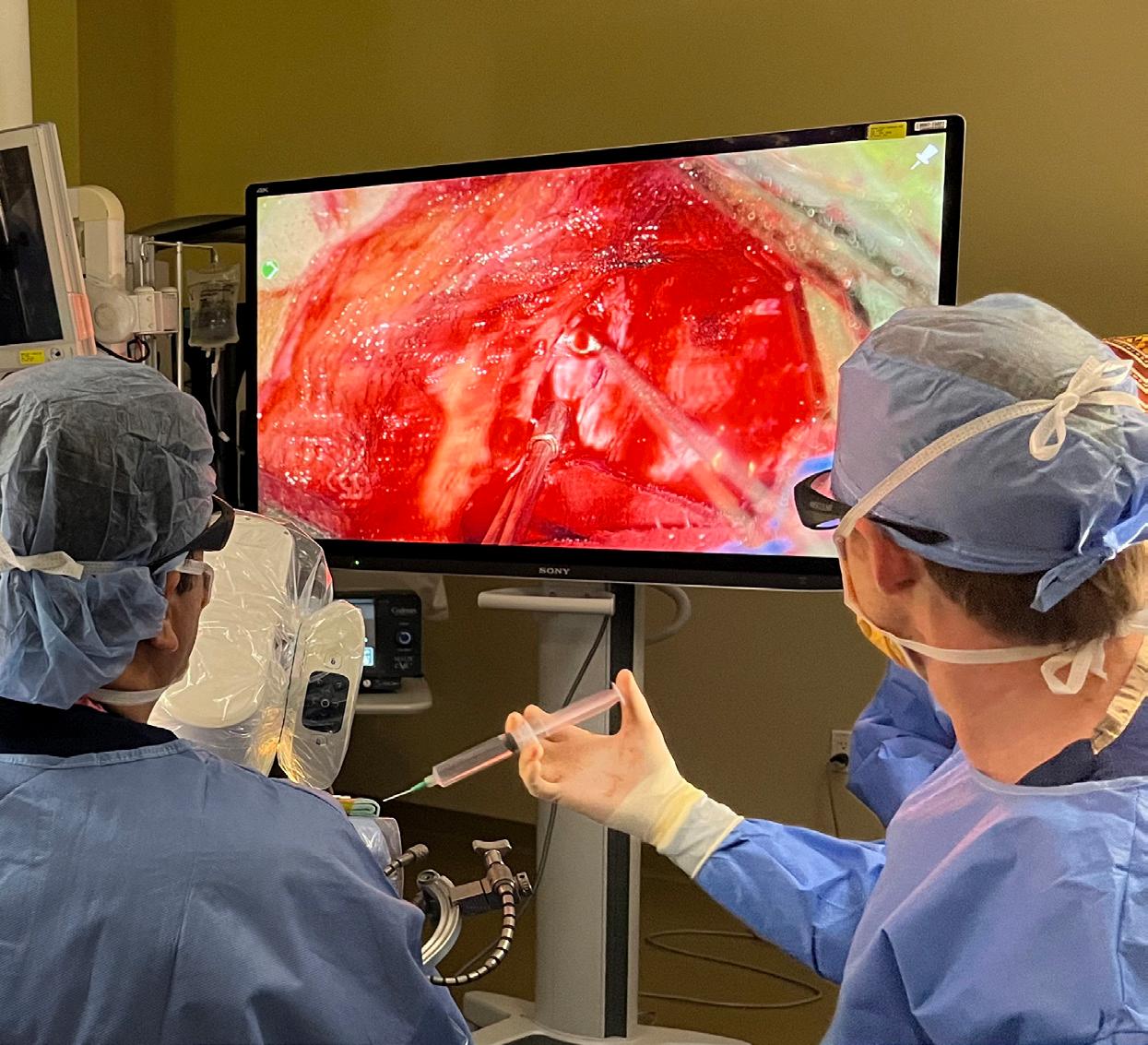
help us understand what they want to see, what they like in other industries, and if we can bring them to this market.
“I think IT is more about people and connections than it is about technology, so that's where our strategy really lies in how we deliver that to this organisation.”
When selecting new technologies it’s important to keep it simple, and not to innovate for the sake of innovation, Wilda adds. “We really want to keep it as simple as asking, what are our must-haves,” he explains.

“You can get caught in that wheel of innovation where you innovate just for innovation's sake,” Wilda points out. “Does it really make sense for the organisation and is it scalable?”
“We partner with the actual users of the systems in picking and choosing what's best for them. It has created a very good relationship in our organisation that they accept innovation because they're at that table.”
Together with Smart Source and Tavoca, University of Michigan Health-West worked to build a platform allowing improved communication with patients, through voice, text and email.

“Tavoca was a perfect example of, in this day and age, how we communicate with patients when they're not within our four walls. It was right before COVID that we had a system that sent out reminder calls to patients about their appointments. But that's all it was: it was just one call and that was it.
“We didn't have a good platform to understand where patients accept those calls, give patients the ability to cancel or reschedule or interact with the system,”
WILDA CHIEF DIGITAL INFORMATION OFFICER, UNIVERSITY OF MICHIGAN HEALTH-WEST
“We hear that a lot where doctors are the highest paid data clerks, or that medical assistants aren't able to provide their full focus because they're always entering data or trying to find data.”
he describes. “We also know that patients like to be communicated with differently, whether it’s texting, email or by phone. It allowed us to add a personal touch to the communications, ensuring that our hightouch, personal culture came through within the technology.
“So when we were out looking for a new platform that was scalable, that we could do a lot more things with, we found Tavoca, one that was deeply rooted in a partnership relationship, wanting to understand how healthcare was changing, and how they can continue to innovate.”
The implementation helped reduce the hospital’s no-show rate - which had been between 10 and 12% - dramatically, Wilda says.
“Implementing Tavoca and the different platforms that they're able to provide to us, we actually dropped our no-show rate by 5% within the first three-to-five months of using that system,” he adds. “And it's stayed at steady levels which showed us that, again, it's not just communicating, it's the way you communicate that impacts the patient best.”
And through Smart Source, the reselling vendor of Tavoca, the organisation is looking at other solutions to boost patients’ experiences such as call centre technologies.
“We are looking at Smart Source to potentially provide us with other solutions that they know will integrate all together, to meet that experience,” adds Wilda. “It feels, it talks to you in the same language, it has those integrations.”
In a post-pandemic world, where patients are increasingly treated outside of the hospital’s ‘bricks-and-mortar’ setting, the organisation is looking at expanding how it offers care with the right technologies.

“COVID really has opened the door to laggards in the healthcare industry that said you had to be in the hospital to be treated,” comments Wilda. “COVID saw that patients, their diseases, they didn't wait for the pandemic to be over. So we had to expand how we treated patients in their homes, in family and loved ones' homes: different care settings that might not have been our own. So for the next 12 to 18 months, we're really looking at expanding the right type of care and the right setting with the right technologies.”
It is easy to focus on the clinical side of healthcare IT, but the use of technology has many other uses, as Wilda describes.

“Helping the HR department, where there's an initiative that we're talking about, how do we help you get through your resumes?” he says. “How do we make sure the right candidates are getting in front of you? Because if you fill a role quickly with the best applicants, then you're providing even better patient care.
“How can we help facilities manage our organisation better? Because quite frankly, when patients walk in our four walls, the first thing they see is the four walls. They don't see the doctor. And so if things aren't crafted well or aren't being managed well, or are not automated well, patients will treat that as a quality issue.
“COVID saw that patients, their diseases, they didn't wait for the pandemic to be over. So we had to expand how we treated patients in their homes, in family and loved ones' homes, in different care settings that might not have been our own.”
Already showing its benefits, the use of technology will only increase in future - from utilising artificial intelligence (AI) and machine learning to increased use of automation and the use of robot process automation (RPA).
“One thing that we are really innovating here at University of Michigan Health-West is using voice, and ambient speech and conversational natural language speaking products and services to really drive care,” Wilda explains.

“We have a mindset that when all this technology fails, we rely on voice, we rely on calling, we rely on talking. How can we automate and how can we capture, through
some of these ambient technologies, the use of voice to streamline our work and keep digital intimacy with our patients?
“One of those we're using is a product called DAX which is Documentation, Ambient Experience from Nuance. It allows us to have a conversation about healthcare: there are no longer computers in the way.
“You use the computer to augment the education, but no longer is the provider sitting there typing. It actually captures that whole conversation, digitises it, understands what is relevant from a medical perspective, and then puts that in as the note for the provider. So the provider no longer has the cognitive burden of typing that all out. Now they can focus on
the patient, they review the information later on and edit if needed and accept it.”
A key use of technology in the future, Wilda says, will be the automation of a lot of functions that put the data-capturing burden on individuals.
“How can we automate those things so we can spend more time with patients and providers?,” he concludes.

“I think right now there is that scepticism of what is governance, our innate human desire for job security. You know, we hear this a lot. ‘You're gonna use artificial intelligence to end my career as a doctor’.
“No, it's to build artificial intelligence to provide you insights. So your human sentient
being of caring can really be maximised when it needs to be with called out insights to key pieces of information using AI,” he concludes. “And, then how can we embed those insights in the user's workflows so it feels natural and easy to access?
“It is more so about embedding it in the workflow so it feels more natural. So the care with patients feels more natural. So I think that in the next, at least 18 months, you're gonna see this big uptick in the use of artificial intelligence in the healthcare industry.”



JK Moving is the largest independently owned and operated provider of logistics, relocation and storage services in North America. A large part of this monumental growth is a result of its recent success in the data centre industry.
After the company built up an established presence and strong reputation in the commercial market, it made the move to specialising in data centres via its JK Technology Services division.
It was the combination of JK’s long-standing experience and its opportune positioning – nestled in the data centre metropolis that is Virginia – that made this transition hugely successful.
We spoke to Chuck Kuhn, CEO of JK Moving Services, about the company’s specialist data centre services and the initiatives that it’s adopting to support the industry-wide transition to sustainability.
From a single truck to the largest of its kind in America Kuhn founded JK Moving Services 40 years ago in May 1982, while he was still in high school. At just 16 years old, when he was in the 10th grade in Fairfax Virginia, he started the company.
“I had an introduction into the moving and storage industry through my uncle, who had a small local moving company nearby. I started by sweeping floors in his warehouse and cleaning trucks, so I got my first introduction to the industry through him. Then, when I turned 16 and got my driver's licence, I founded JK Moving Services,” Kuhn explained.

Operating at the heart of the data centre industry, JK Moving Services is one of America’s most trusted and sustainable relocation & logistics providers
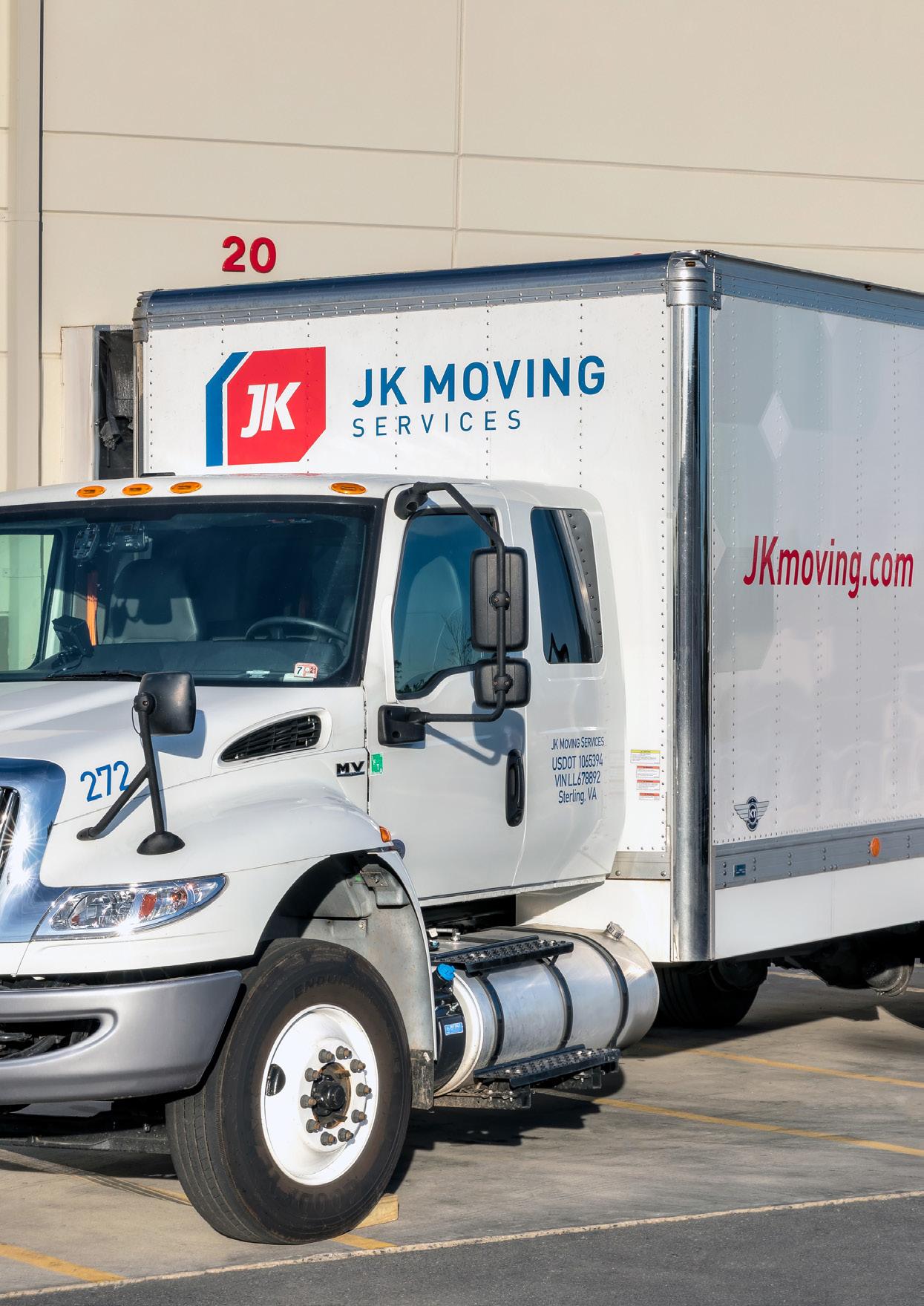
Kuhn started out with one truck, assisting local residential moves in the Washington DC metropolitan area. Over time, this grew into larger fleets, and the company moved into residential, long distance moves and international relocations, before expanding into office moving, last-mile logistics and all forms of commercial moving, including technology-oriented relocations.
Transitioning into the data
The company branched out into data centre servicing after establishing itself within the telecoms sector, just before the data centre industry really took off.
Obviously, being located in Virginia was a huge aid to this growth – and Kuhn used this location to its full advantage.

TITLE: CEO
LOCATION: STERLING, VIRGINIA
Chuck Kuhn founded JK Moving Services four decades ago, in 1982. Even then, at the age of 16, Kuhn saw that the moving industry was in need of change. Despite the lack of regulations or industry standards in place, the young entrepreneur set out to create a company that was committed to providing superior customer service.

His vision for JK included an ongoing investment in technology, facilities, and talent. This commitment to technology led to the launch of JK Technology Services, which provides the data centre market with logistics, relocation, and storage services and offers end-to-end life cycle management, including Smart Hands

“We’re moving with bestin-class standards, while adopting the latest and greatest technology”
CHUCK KUHN CEO,







“We're headquartered in Loudoun County, Virginia. This is really the data centre hub of the globe. There are more data centres based in Loudoun County and Prince William County than the rest of the world combined. In fact, approximately 88% of the world's internet comes through Loudoun County,” Kuhn explained.
“As our existing clients started transitioning into the data centre world, we entered the industry as a support mechanism for them. They needed help with the lifecycle management of their mission-critical assets, particularly with staff augmentation – from new deployment of production gear to end-of-life UPS batteries, the demand for trusted technology services partners called us to action. We are more than just moving the hardware.”
JK Moving’s evolution in the data centre industry came as a response to regional trends, alongside a combination of a high degree of company flexibility and an

exceptional example of ‘right place, right time’.
A specialist, dedicated relocation service for data centre clients
Now, the company provides specialist data centre logistics and relocation services to some of the largest providers operating in Virginia (and, as such, the world).
“We are already located in Loudoun County, and we did a lot of work in the telecom space when it was booming (prior to the data centre boom),” Kuhn outlined.
“As the telecom industry started to slow, the data centre industry started to pick up – it was a very natural transition for us. At that point, we recognised the need to bring logistics to the data centre market.”
We are assisting in writing the playbook for telecoms logistics within lifecycle management (TR 60.B), physical data centre management and cabling infrastructure (TIA-942, and TIA-42)) on behalf of the
Telecommunications Industry Association (TIA) standards group.
“To ensure that each of our data centre clients received the logistics and relocation services they needed specifically, we launched JK Technology Services, which offers staff augmentation to ensure needed alignment. We will act as an extension of our clients’ staff, offering asset verification, Smart Hands, equipment migration, rack configuration design, AND port/patch matrix development.”
Serving as boots on the ground helps clients to ensure that they mitigate the risk of unnecessary downtime and maintain business continuity for mission-critical operations, while achieving full transparency and visibility into each step associated with the logistical and relocation needs of the data centre market.
And, as the growth of the data centre market shows no signs of slowing, this prime position will continue to give JK a phenomenal advantage.
“The growth of data centres in this marketplace is neverending,” Kuhn stated.
“When I look at JK five years from now, I'm confident that we will double the current size of our organisation; we’ll double the amount of warehouse bases we have in the area. A lot of that will be in order to properly support the data centre community.”
JK continues to expand in the data centre community, and Kuhn expects that to continue at the same pace. The company is currently serving a growing number of hyperscalers and co-location companies around the globe, and, alongside this, is adding to the footprint that it services.




“When I look at JK five years from now, I'm confident that we will double the current size of our organisation”
CHUCK KUHN CEO, JK MOVING SERVICES
EVs, reusing waste, and founding the JK Community Farm
As is instrumental in the industry’s futureproofing strategies, any service provider working in the data centre sphere has been pushed to improve its sustainability standards. A green mindset can be ‘make or break’ to a service provider’s success, as Kuhn well knows.

“Sustainability has been a real key focus area for JK, for quite some time,” Kuhn says.
In fact, in a bold demonstration of its sustainability commitment, the company recently ordered a dozen Tesla trucks.
“We’re moving with best-in-class standards, adopting the latest and greatest technology. We’re one of the pioneers, embracing electric vehicle technology – and we're excited to test these new vehicles to see how they work in our fleet.”
Alongside this major investment, Kuhn explains that the company currently reuses 100% of the waste oil from its trucks, with a portion put aside to heat its buildings.
In another pioneering sustainability initiative, the JK Community Farm was founded in 2018. This farm produces chemical-free vegetables, fruit, and meat proteins to help improve food security in the Washington DC area. It is almost entirely volunteer-run, and the farm sits on 150 acres of land that has been placed into conservation easement.
Partners in sustainable growth – the value of a green partner ecosystem JK has further reduced its waste by adopting a box-less move strategy, in which they use reusable plastic totes in lieu of conventional cardboard containers. As you can imagine, this prevents a huge amount of the waste that would usually go to landfill. Then, for any cardboard boxes that they do use, the containers are formed of completely recycled materials and are therefore entirely recyclable themselves.
“We're very proud of how much material we keep out of landfill. We actually measure annually how much we are reducing our waste,” added Kuhn.
A solid partner ecosystem has been instrumental in JK Moving’s waste management achievements. Most notably, JK Moving Services has been able to implement an exceptionally strong e-waste recycling programme, thanks to its partnership with C2 Management and Lifecycle Sherlock.
“C2 Management focuses on the backend management of reducing carbon footprint, which is important across the industry,” Kuhn stated.
As such, C2 Management disposes of any remaining assets by refurbishing or reducing


them down to their raw materials so that everything is reused and saved from landfill.
"Another group that we partner closely with is Lifecycle Sherlock. They provide us with ESG and sustainability services, design and manage net-zero journeys, track Scope 1-3 emissions, and secure and monetise carbon offsets. In these ways, Lifecycle Sherlock helps us to participate in the growing carbon economy."
For JK, these partnerships have enabled them to continue hitting best-in-class standards. Not only does this make them a market leader in their field, but it also allows them to deliver this top tier of sustainability across its entire client network.
“Partnership collaboration is imperative to our success; we cannot do it without our partners. We would be doing the data centre market a disservice if we didn't partner with groups like C2 Management and Lifecycle Sherlock – they've been critical to our ability to reduce the carbon footprint and to properly serve our clients.”

“We would be doing the data centre market a disservice if we didn't partner with groups like C2


It only takes one simple idea to generate positive change in the supply chain. Simplicity is key to ensuring an equitable, profitable progression of sustainability solutions.

Organisations may aim to improve upon their energy consumption, manage their assets to reduce the amount of time for product distribution, or reduce the emissions involved in getting the products to market. Tosca, by providing reusable plastic packaging and pallet solutions in an efficient pooling system, challenges many of the sustainability pain points supply chains face today.
And supply chains face sustainability challenges of all kinds. However, through the managing and pooling of better packaging assets, Tosca seeks to battle many types of waste such as material waste, food waste, labour waste, and transportation waste. As a pooling system provider, as well as the designer and manufacturer of reusable plastic pallets and crates, the company is wholly committed to eliminating waste by developing products that last longer and are more effective in the specific supply chains it serves.
The company quickly began to realise that its patented designs were pivotal in minimising waste across many aspects of the supply chain. Benefits include reducing the number of pallets broken in transit, and designing more durable crates that can stack higher to decrease the number of trips required and are more protective to limit the number of damaged goods in transit.
Developing reusable plastic packaging and pallet products is Tosca’s sustainable solution for reducing costs and minimising time wasted in the supply chain

Tosca soon learned that its sustainabilitydriven products would open doors for technology integration to revolutionise the way customers use its reusable products.
Sustainable pooling solutions optimise the food supply chain
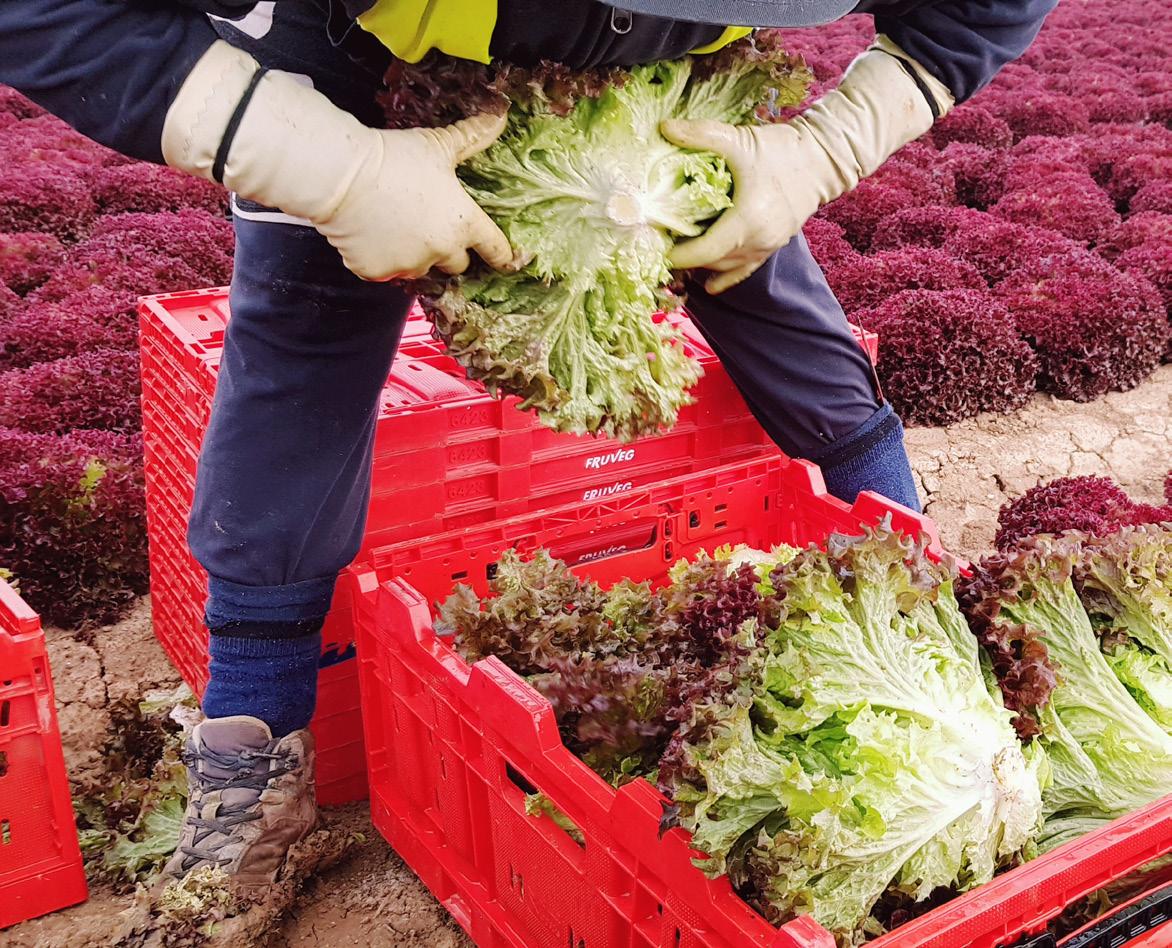
It’s important to note what pooling actually is and how it works. Luckily, the CIO himself tells us what this means and why it is such a critical process for the business.
Michael Weinberg describes pooling as the process of distributing a pool of reusable products across multiple customers, managing the distribution in a way that ensures each asset is cleaned and maintained to the highest standard in between uses.
MIKE
CHIEF INFORMATION OFFICER, TOSCA
“We’re seeing the importance of traceability, with the information detailing the status of assets becoming more and more critical”
“The idea is that the same asset can be used by various customers, so it's pooled. One day, this reusable plastic crate or a reusable pallet might be used by customer A; it comes back to us, we clean and sterilise it to foodgrade standards, then it might go to a different customer,” says Weinberg.

Throughout the pooling process, not only does the product service multiple customers, but it eliminates the need for single-use containers and pallets. To make the process feasible for this purpose, the pallets and crates must be carefully designed to be stacked using minimal space and incredibly durable to withstand intensive use. For the team at Tosca, this is an important function of its products and one of main focus points for the business.
TITLE: CHIEF INFORMATION
COMPANY: TOSCA
INDUSTRY: SUPPLY CHAIN LOCATION: ATLANTA, US
Mike Weinberg joined Tosca as Chief Information Officer in May, 2019. In this role, he is responsible for leading technology solutions throughout the organsation. Mike has over 25 years of technology leadership experience within management consulting, retail, and hospitality industries. Over the past 10 years, Mike has served in a variety of leadership roles within InterContinental Hotels Group most recently as Vice President of Global Hospitality Solutions. Prior to IHG, Mike worked in management consulting with Deloitte and Answerthink as well as serving as CIO for RetailOne.
Mike has an undergraduate degree from Emory University and an MBA from Emory’s Goizueta School of Business in Atlanta. He is

Tosca's portfolio of IoTtraceable, reusable plastic assets is the most robust the market has to offer, including crates, pallets, bulk containers, dollies and more, design to:

Reduce shrink/product damage
High-strength plastic protects products better than corrugated, preventing waste and reducing shrink.
Save on labour Straight-to-shelf design simplifies restocking.
Save space Foldable and stackable to maximise truck and store space.
Food safe
With the highest food safety programme in the industry, containers protect products from harmful bacteria.
Support sustainability Prevents the waste of single-use containers with a reusable, recyclable alternative.
“With multiple customers leveraging the same pool of assets, we all win. It makes it more efficient when we're all using those same things. And, because we are in the sustainability space, we do take it very seriously,” Weinberg says.
Before allowing the inevitable question to be asked, Weinberg addresses the cleaning process and how this is not only a major step in reusing pallets and packages, but showcases the company’s environmental commitment through water reclamation.
When it comes to the end-of-life stage for pooling products, the materials are reintroduced into the manufacturing process by regrinding the plastics into a form that allows the material to be remade into new assets. The pooling products achieve a lifespan of around 10 to 15 years, as they “sometimes get damaged to a point where they can't be reused for their intended purpose”, according to Weinberg. “Then we recycle that as well. We work with firms that will carry out what they call regrinding—turning our crates into other things.”
Tackling supply chain disruptions and improving
When it comes to environmental commitments, Tosca seems to be ticking all the right boxes—which is what the company set out to achieve when it ventured into the realm of reusable products. But this has also paved the way for something much bigger: a solution that has the ability to provide its customers with more efficient ways of working and better use of data to overcome supply chain challenges.
This is where the organisation incorporates technology into the mix, creating a more advanced supply chain service that tracks product locations,
conditions, and, ultimately, reduces waste in other areas of its customers’ supply chains.

The first challenge Tosca’s reusable assets help alleviate is product defects. The ability to assess the conditions of food provided in transport gives Tosca clients access to realtime data that measures collisions between crates in transit and ensures that goods are kept at the right temperature while on the road, all with the aim of supplying each unit intact and on time.
“I love to use our egg channel as an example, as it’s the one that most people resonate with,” says Weinberg. “Most egg farmers would take their eggs, put them in cartons, and pack those cartons into cardboard boxes. Those cardboard boxes would go to distribution centres, then to retailers that would put the cartons on the shelf.”
He explains that the Tosca solution uses plastic containers that have ventilation and are stackable to minimise damage of fragile goods such as eggs.
“1) You don’t have to worry about crushing, which is a problem with corrugated boxes; and 2) Because they’re ventilated, you don’t have to use as much energy to maintain optimal temperature on the truck, achieving better efficiency.”
With such examples, there’s a reduction in potential damaged goods received by the retailer, but also less time spent stacking goods on shelves. This is thanks to a minimalist design
“With multiple customers leveraging the same pool of assets, we all win”


pioneers sustainable solutions for supply chain waste
with a drop down wall, which enables the eggs to be displayed in stores directly in the RPCs.
“Once that crate is empty, the retailers just collapse those crates—and again, there's a reverse supply chain process. They come back to us, where they’re cleaned and reused,” Weinberg says.
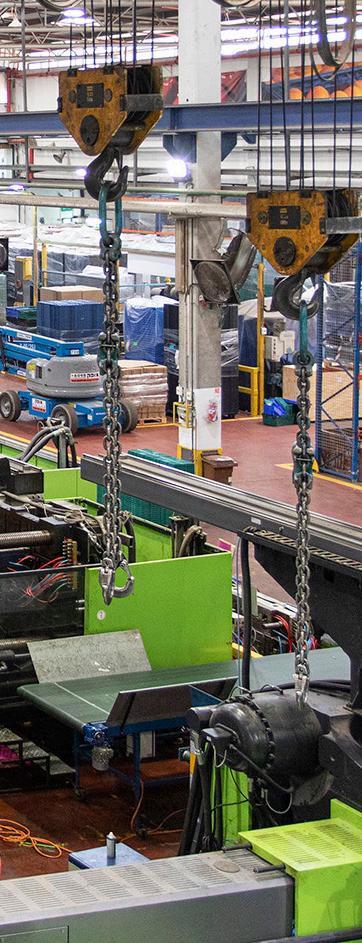
This process describes just how seamlessly companies are able to interact with Tosca’s products, reducing unnecessary time spent handling goods and managing defects. It’s a solution that can benefit many areas of supply, but the focus for Tosca is the food supply chain and translating the same process across many other products.
On the subject of efficiency, one major disruption or incident that takes place in supply chains is missing consignments. Tosca aims to minimise the number of reusable assets that are left behind at specific intervals of the supply chain, using internet of things (IoT) technology for that very purpose.
“We
Introducing IoT to its clients has provided them with further time and cost savings as they gain the ability to track and manage the movement of their goods. Incorporating functions like GPS, bluetooth and cellular networks, clients are able to visualise the realtime location of each crate or pallet to assess any product delays.
The latest technologies used in this offering supersede foundational technologies, such as barcodes and RFID, that were previously used to check goods in and out of depots as points of reference on their journey to the customer. The IoT-driven system allows for more discreet information tracking as well as measurement of trailer temperature, humidity, and shock.
This system is particularly useful to track the location of pallets and crates, but also to track the temperature of fresh meat and poultry, frozen goods, and other products that require more tailored transit methods, such as refrigerated or freezer trailers.

Growth catalyses digital transformation at Tosca
As a global company— headquartered in Atlanta, Georgia—Tosca has seen great adoption of its products and services across the states. It has also seen further interest from other countries in Europe, as well as Israel and others, thanks to some major acquisitions by the company.
To achieve its success, the company formed valuable partnerships with some critical organisations in technology, including Sycor for Microsoft Dynamics 365 support, SAP for implementing its HR systems, Data MTX for supporting most of its offshore labour requirements, and Sensolus for the presentation aspect of its global IoT solutions.
Another critical partner in Tosca’s success is Neway Technologies, which was the key
MIKE WEINBERG CHIEF INFORMATION OFFICER, TOSCAenabler of cloud migration and creating an almost-cloud-native workplace. The company works with Neway as its primary infrastructure partners, while also providing security solutions for its cloud-based business processes.
Weinberg believes that these relationships formed from the digital transformation of Tosca’s products, services and organisational processes will drive further integration of digital into the company and the optimisation of business-critical functions.
“I think we’re seeing the importance of traceability, with the information detailing the status of assets becoming more and more critical,” says Weinberg. “I think sustainability is a big part of it.”
“People partner with us because high quality reusables are one of the intersections
where commerce and sustainability meet. Having said that, I think there’s more need to recognise that sustainability is important and we’re getting more people across the globe saying, ‘we really want to invest in sustainable solutions, we don’t want to invest in one-way solutions’.”
In collaboration with its partners, Tosca continues to manage all forms of waste to enable seamless, cost-effective supply chain operations.
While Tosca is an organisation built on reusable packaging and palletisation, the company is much more than just a sustainability advocate— it’s a sustainability pioneer.






